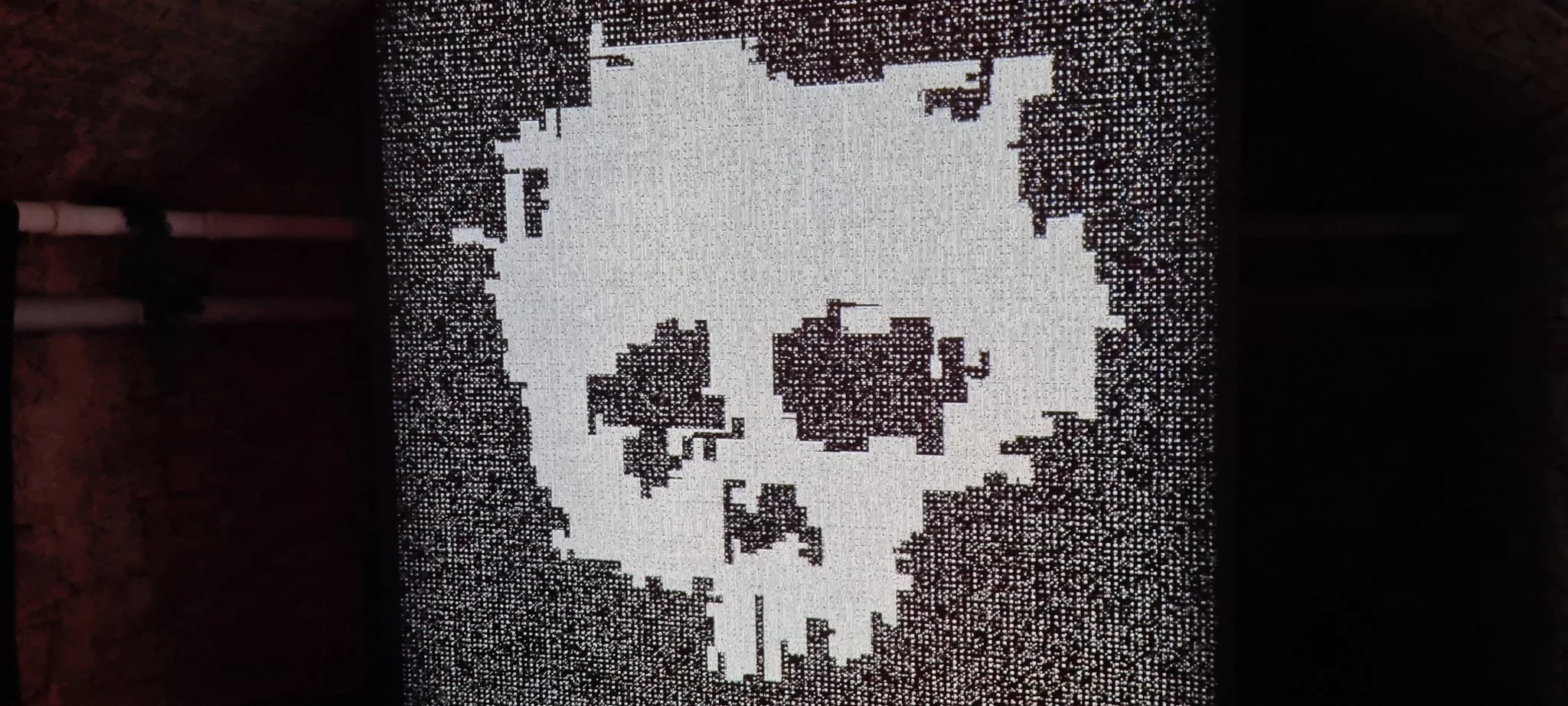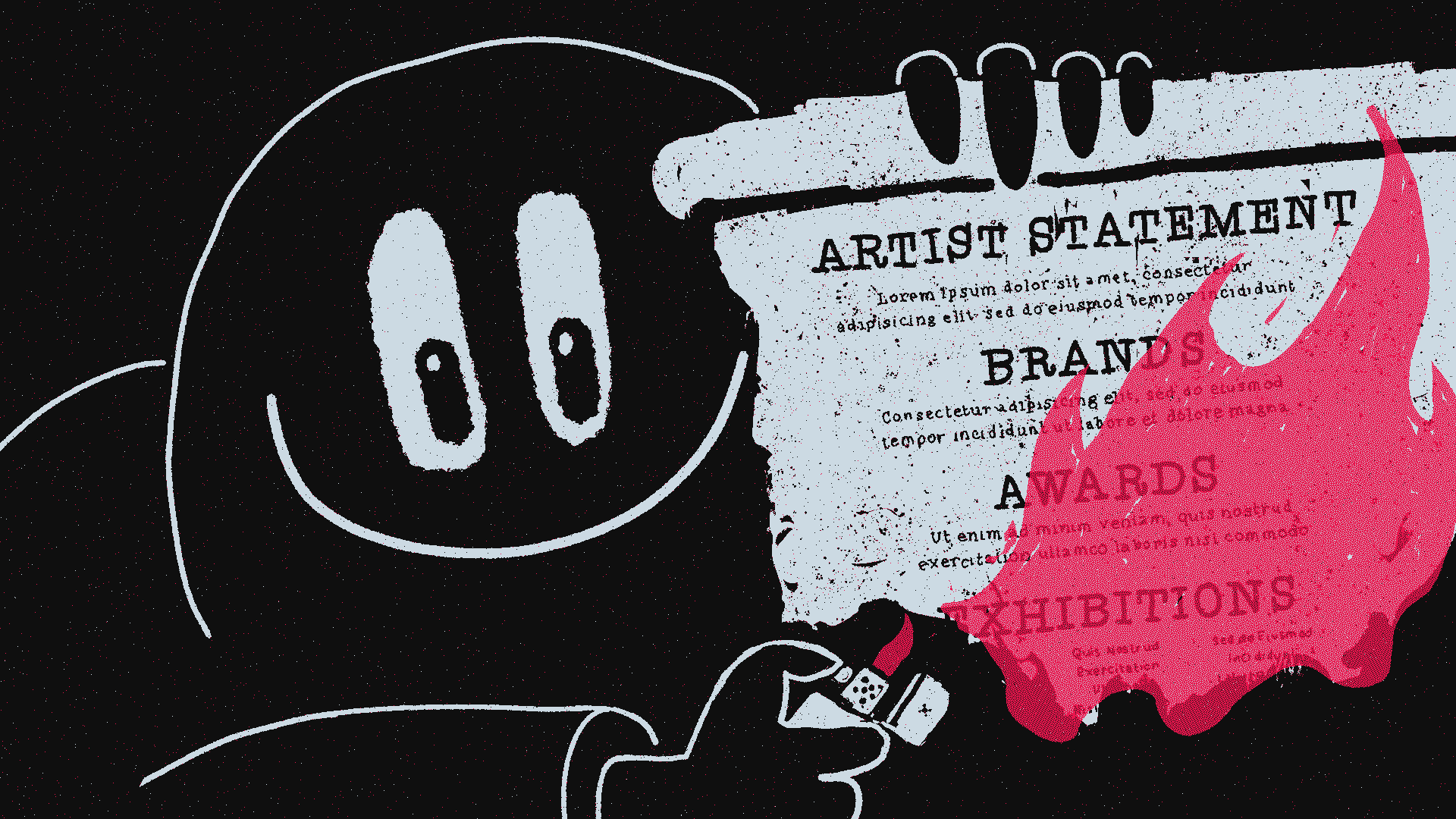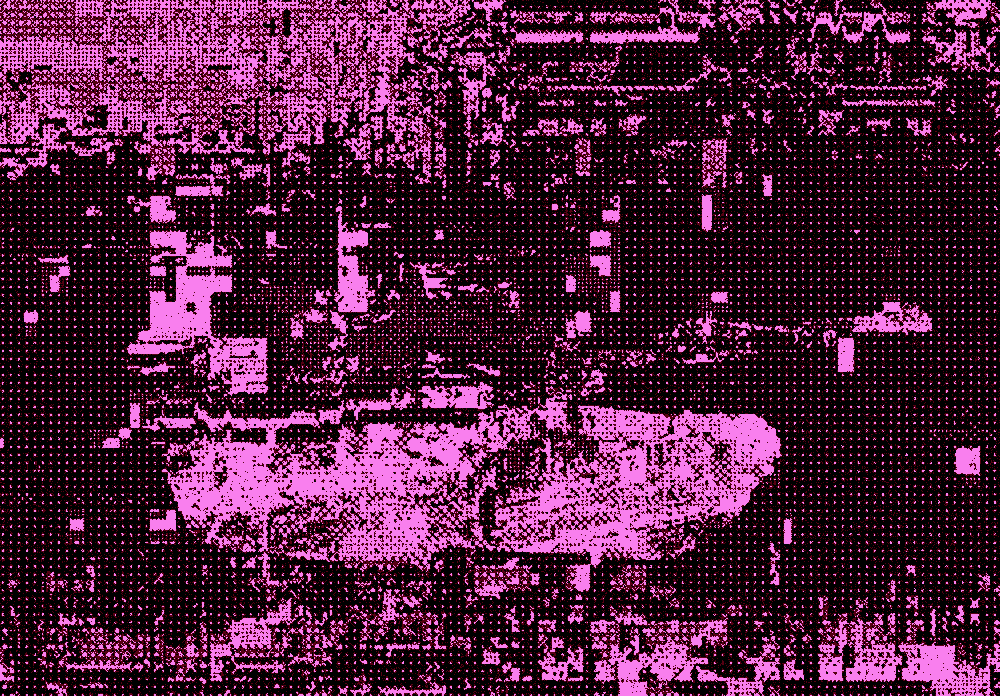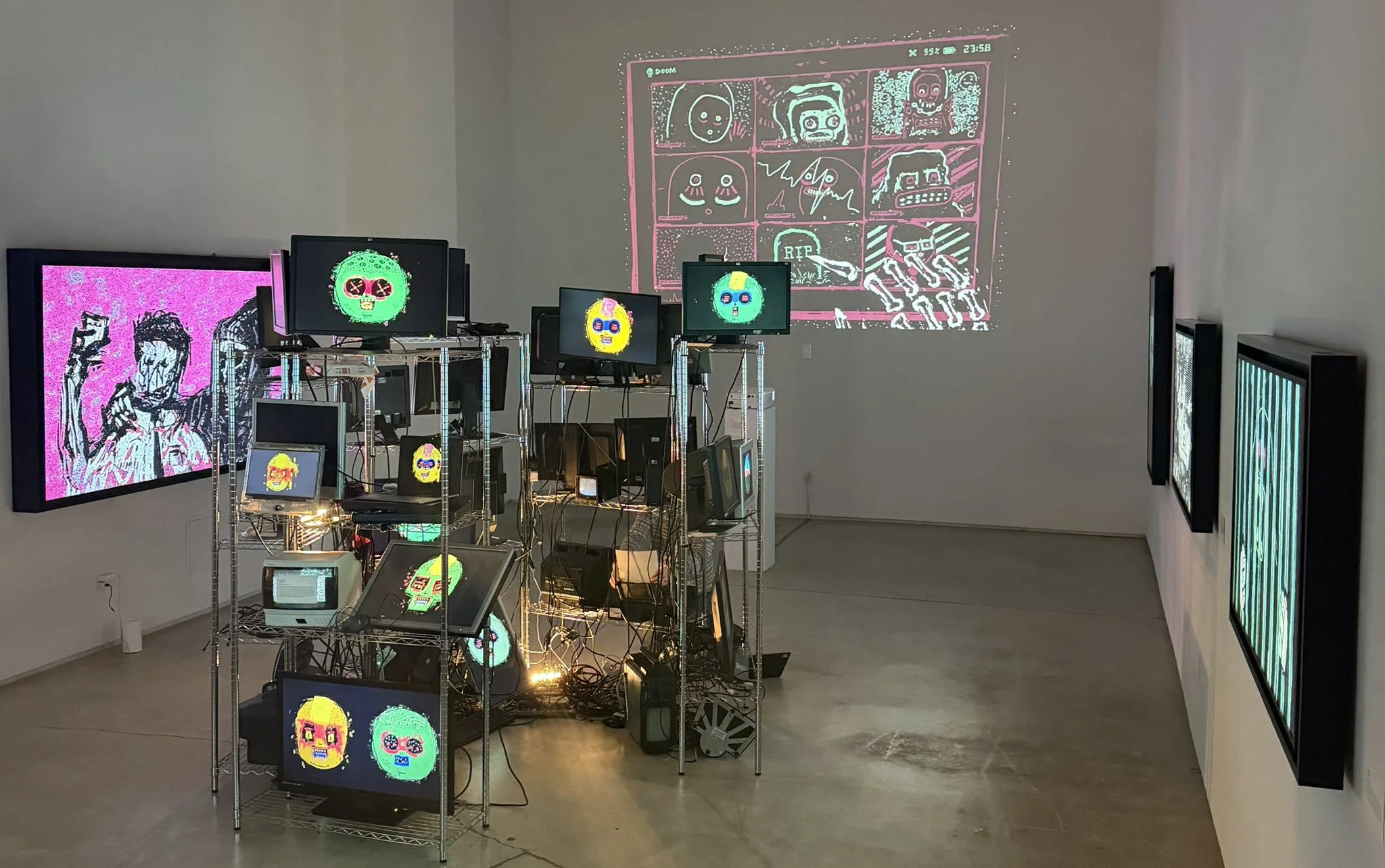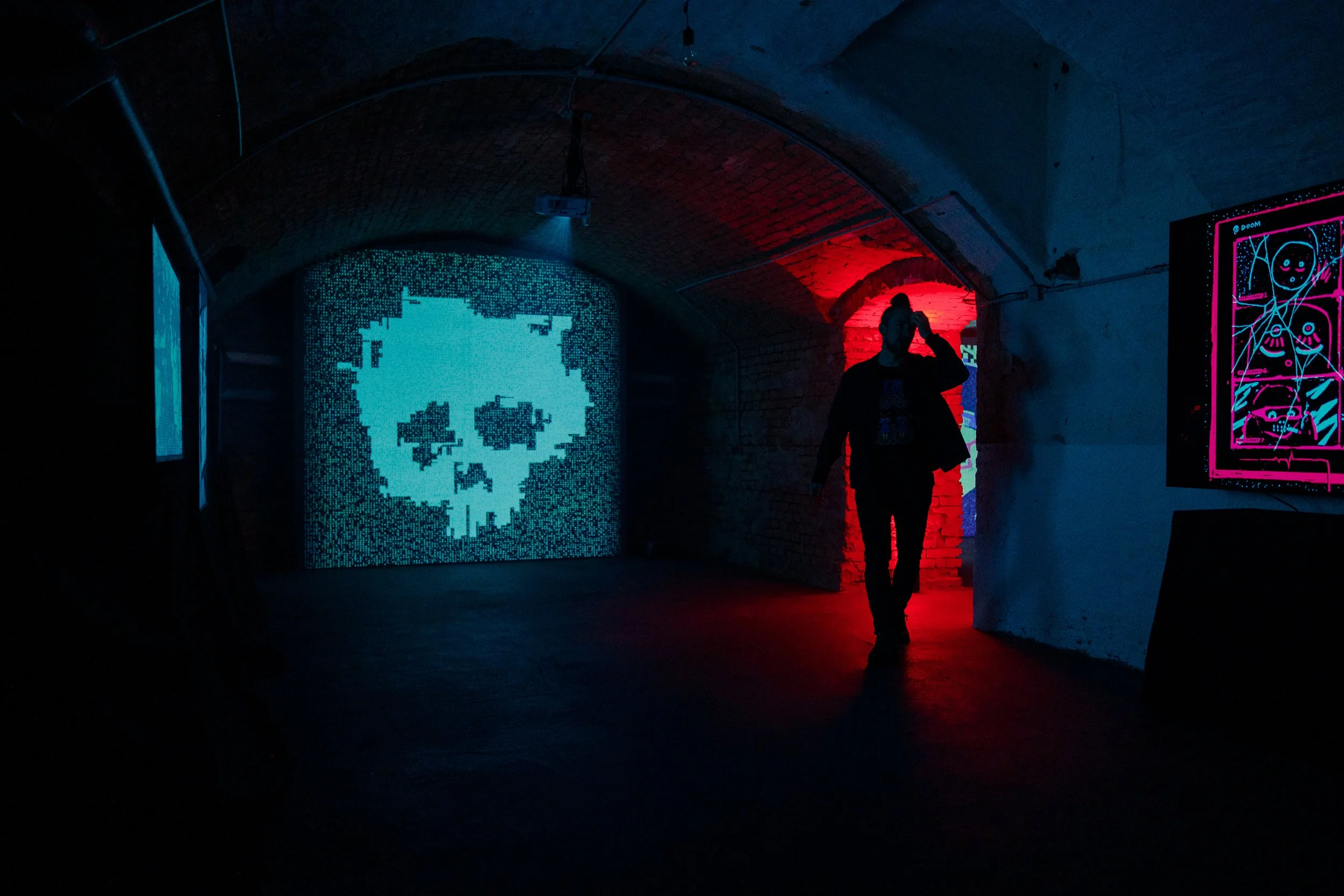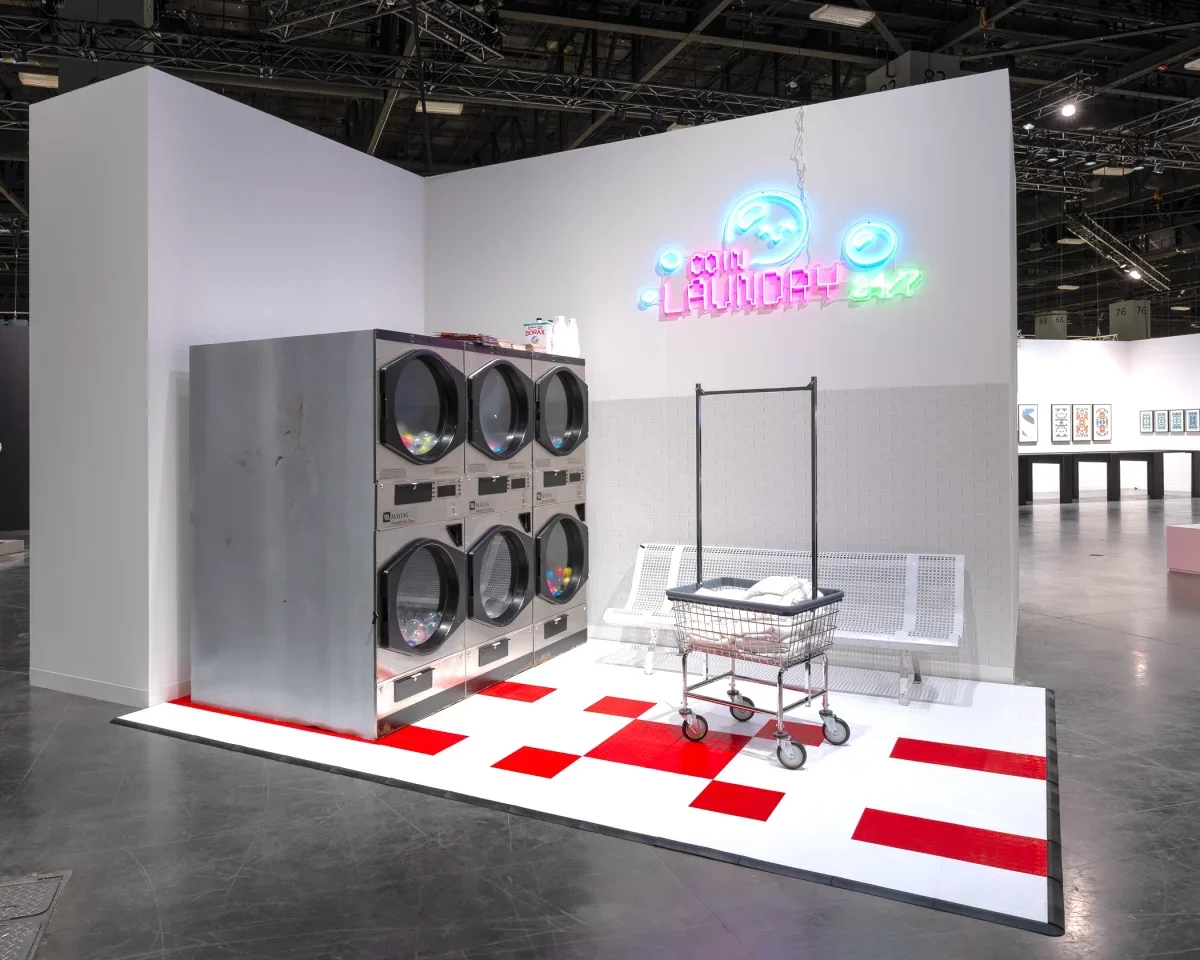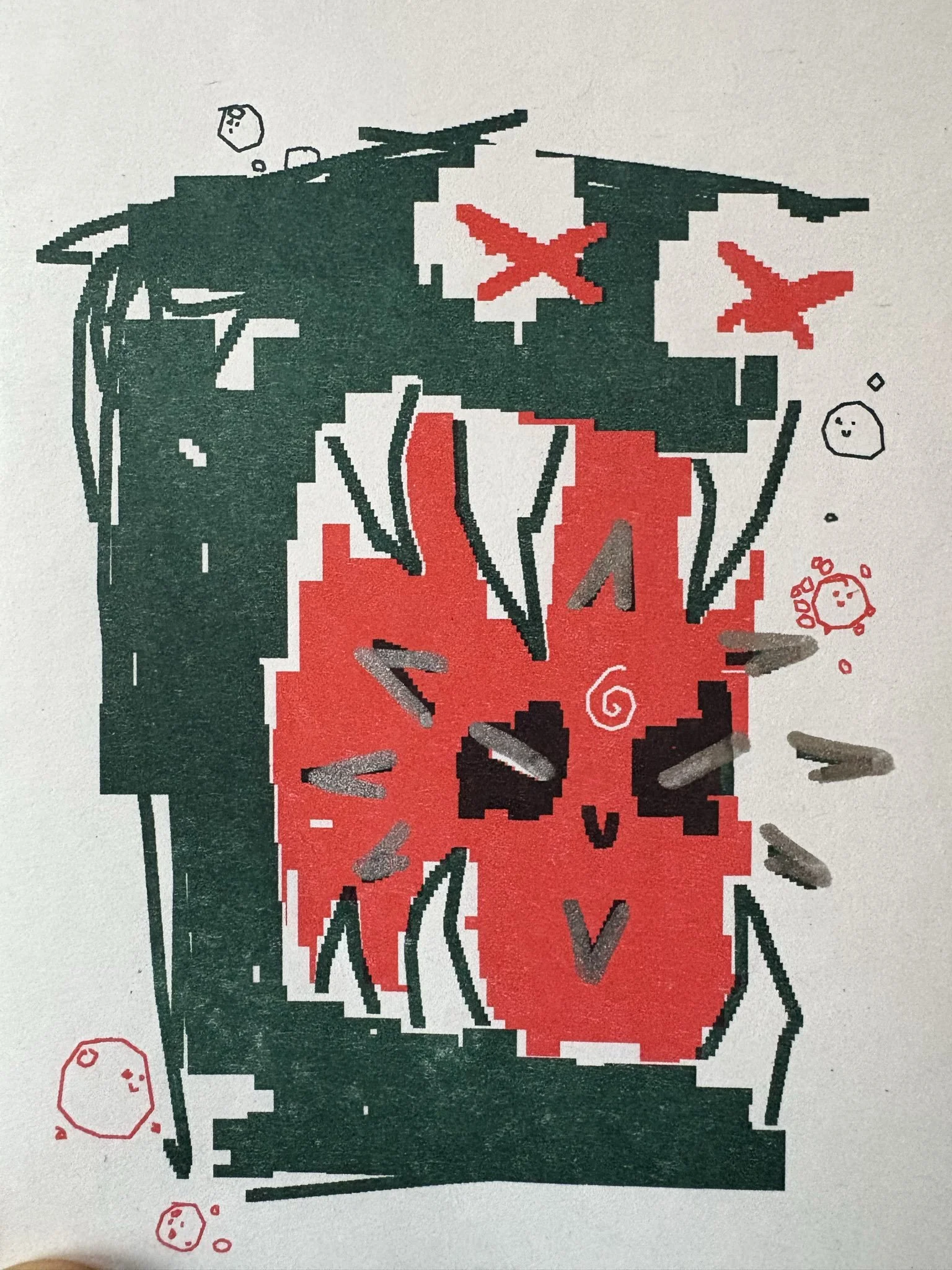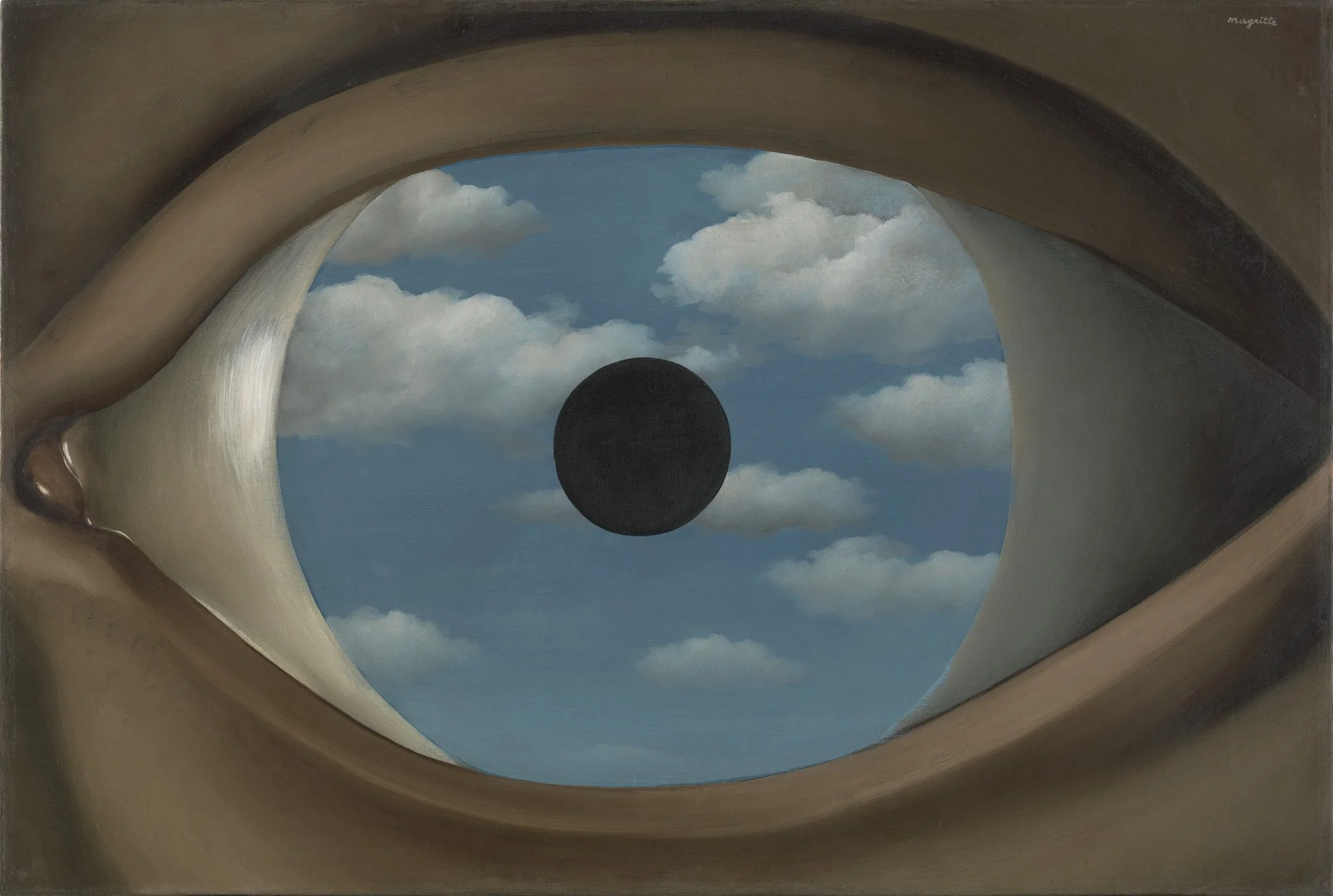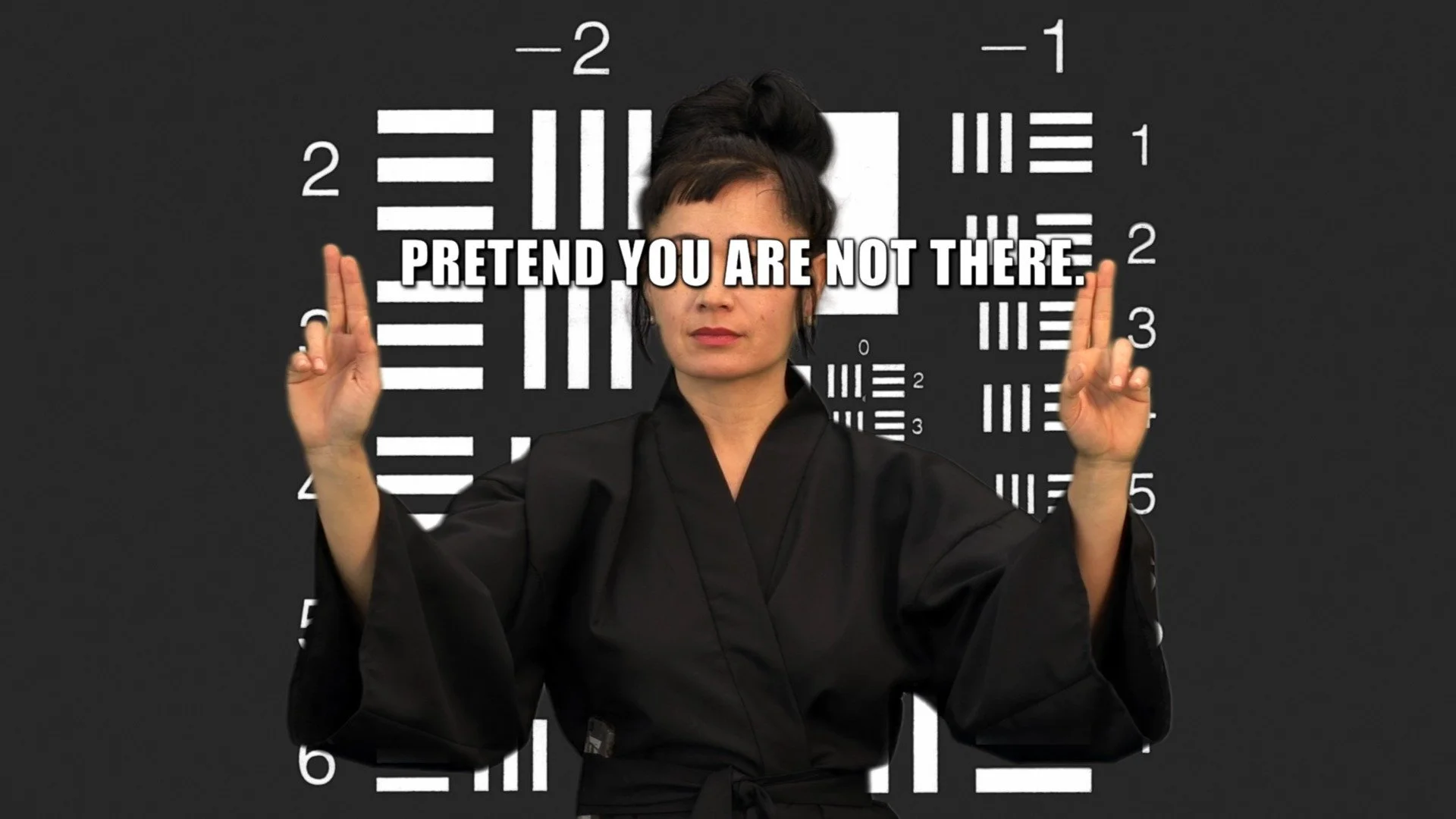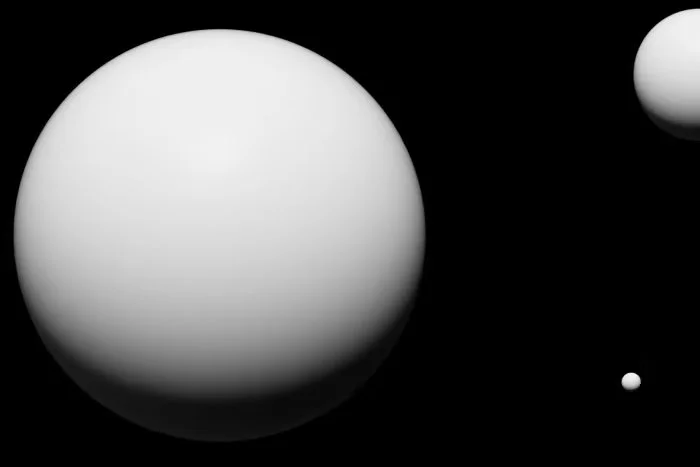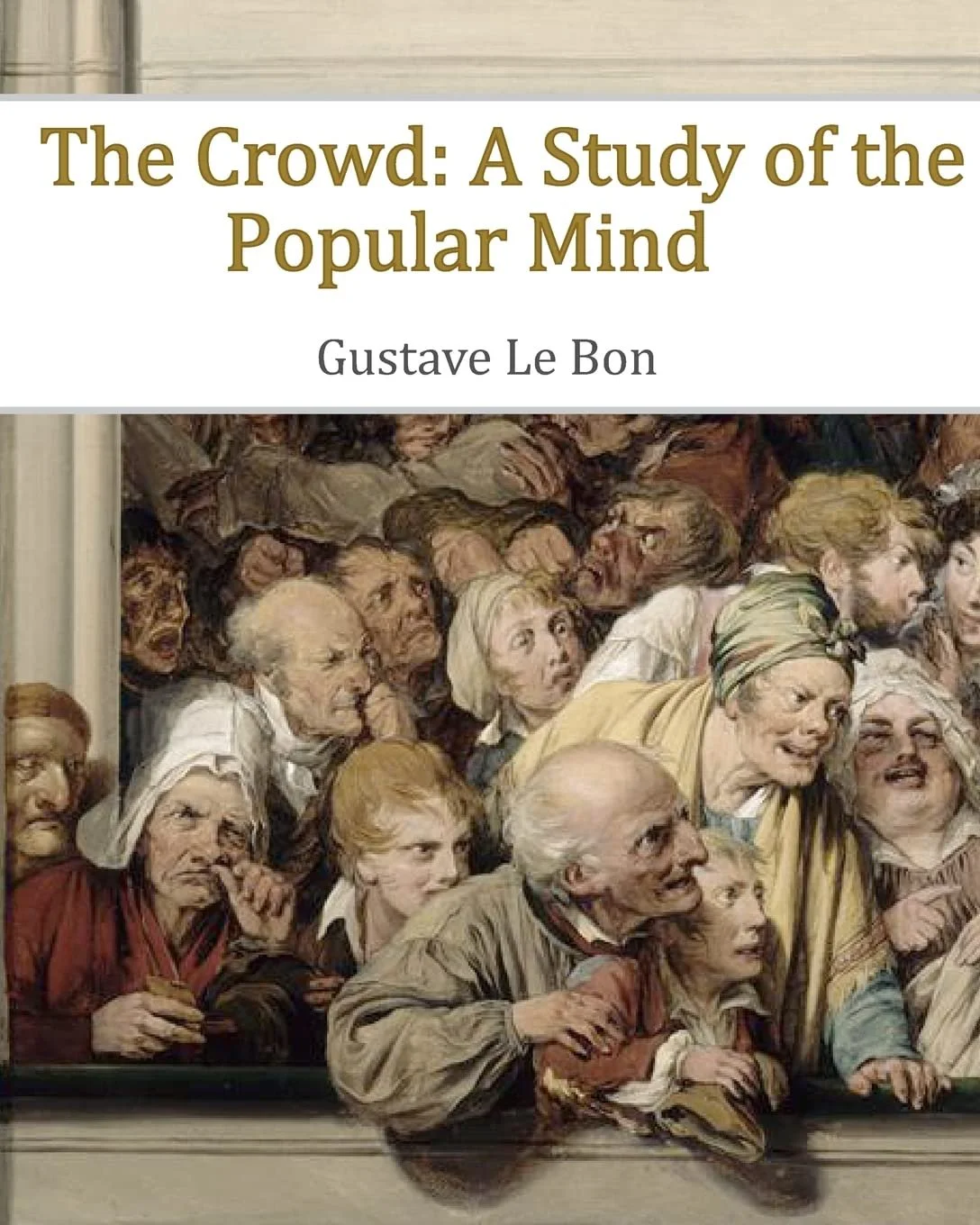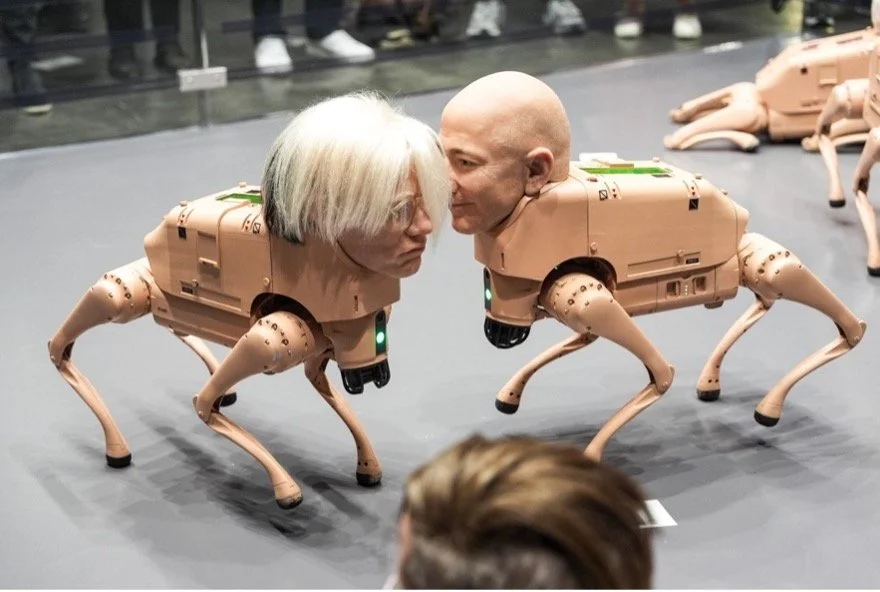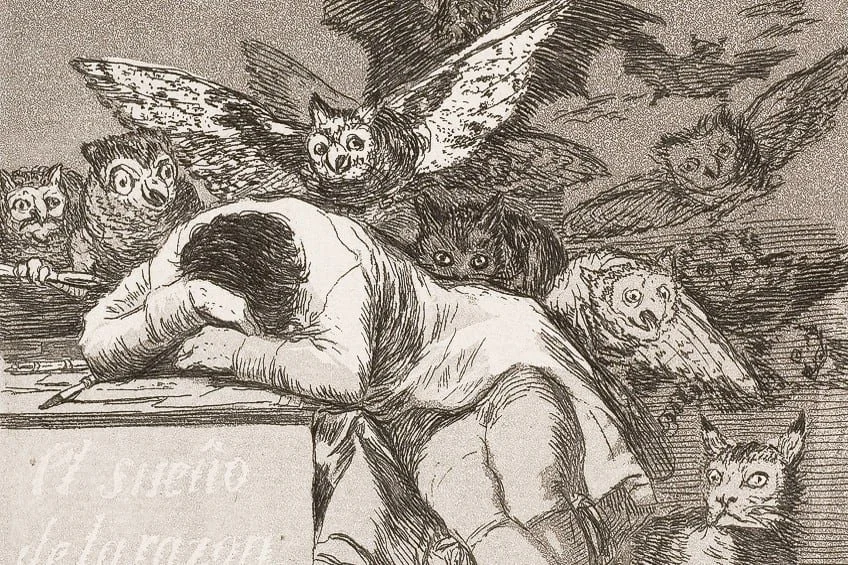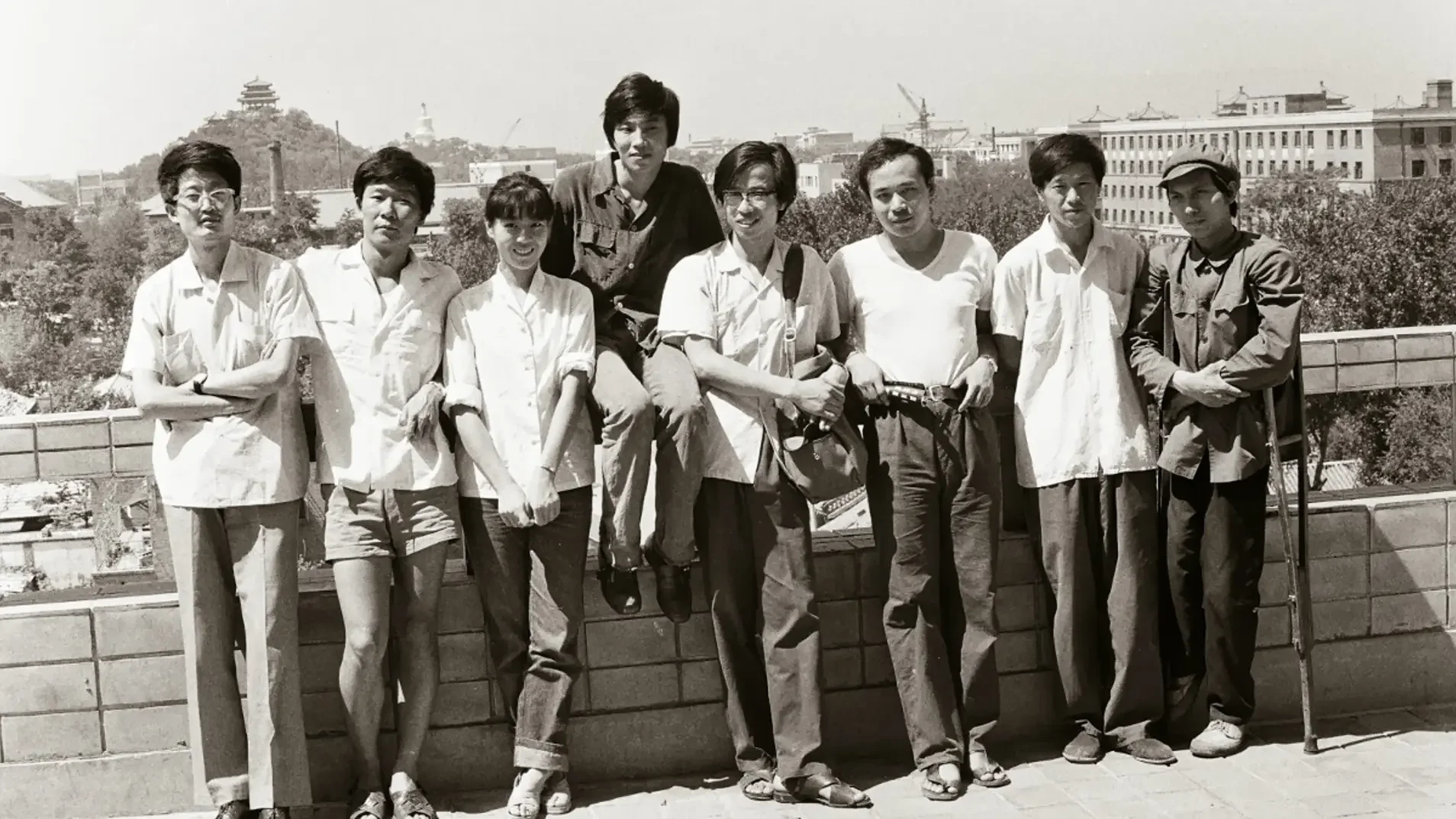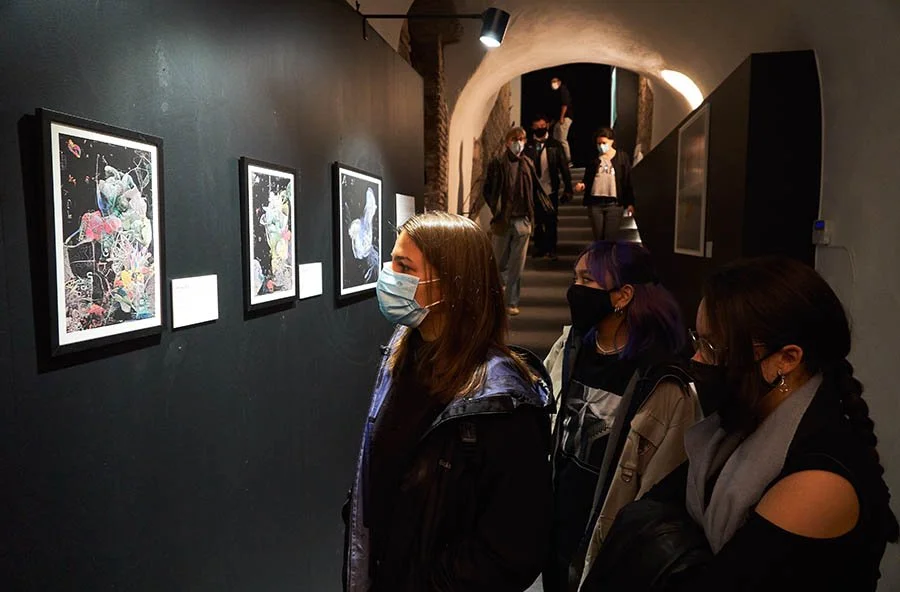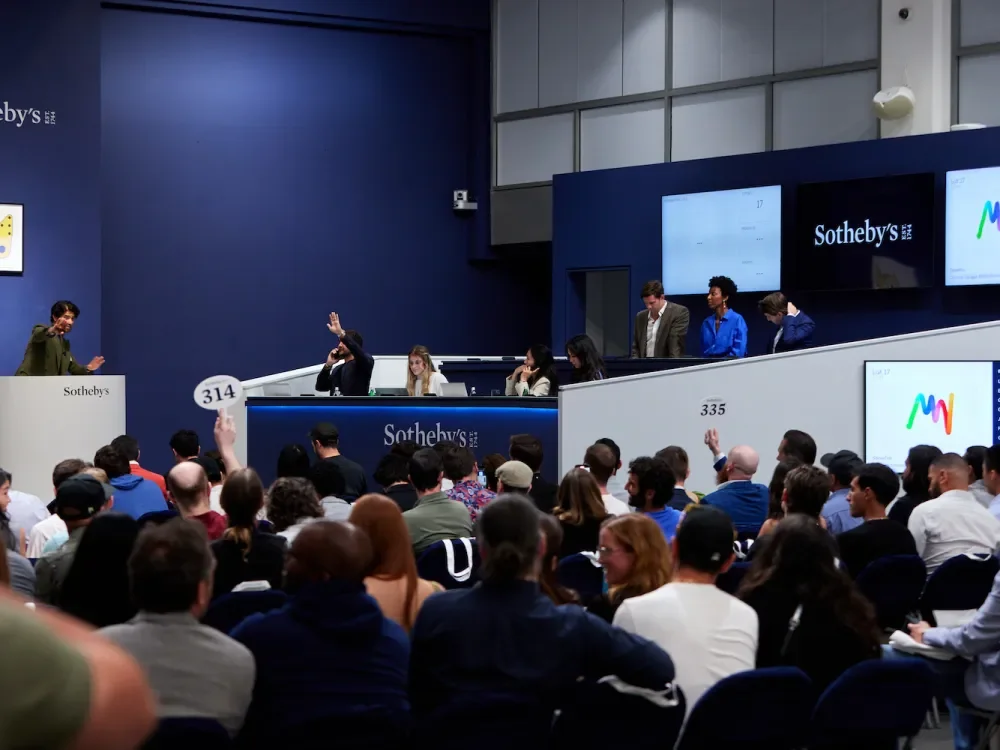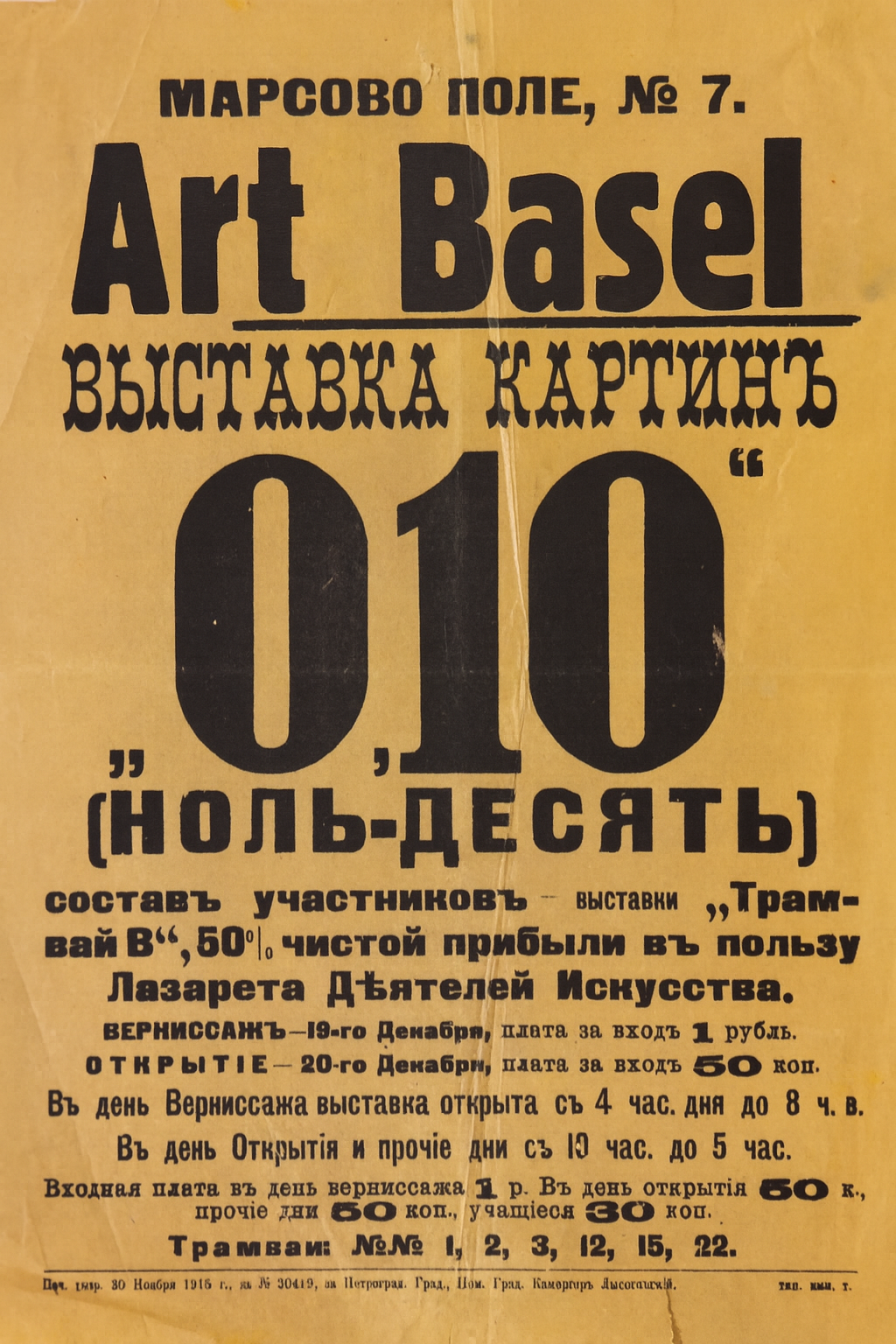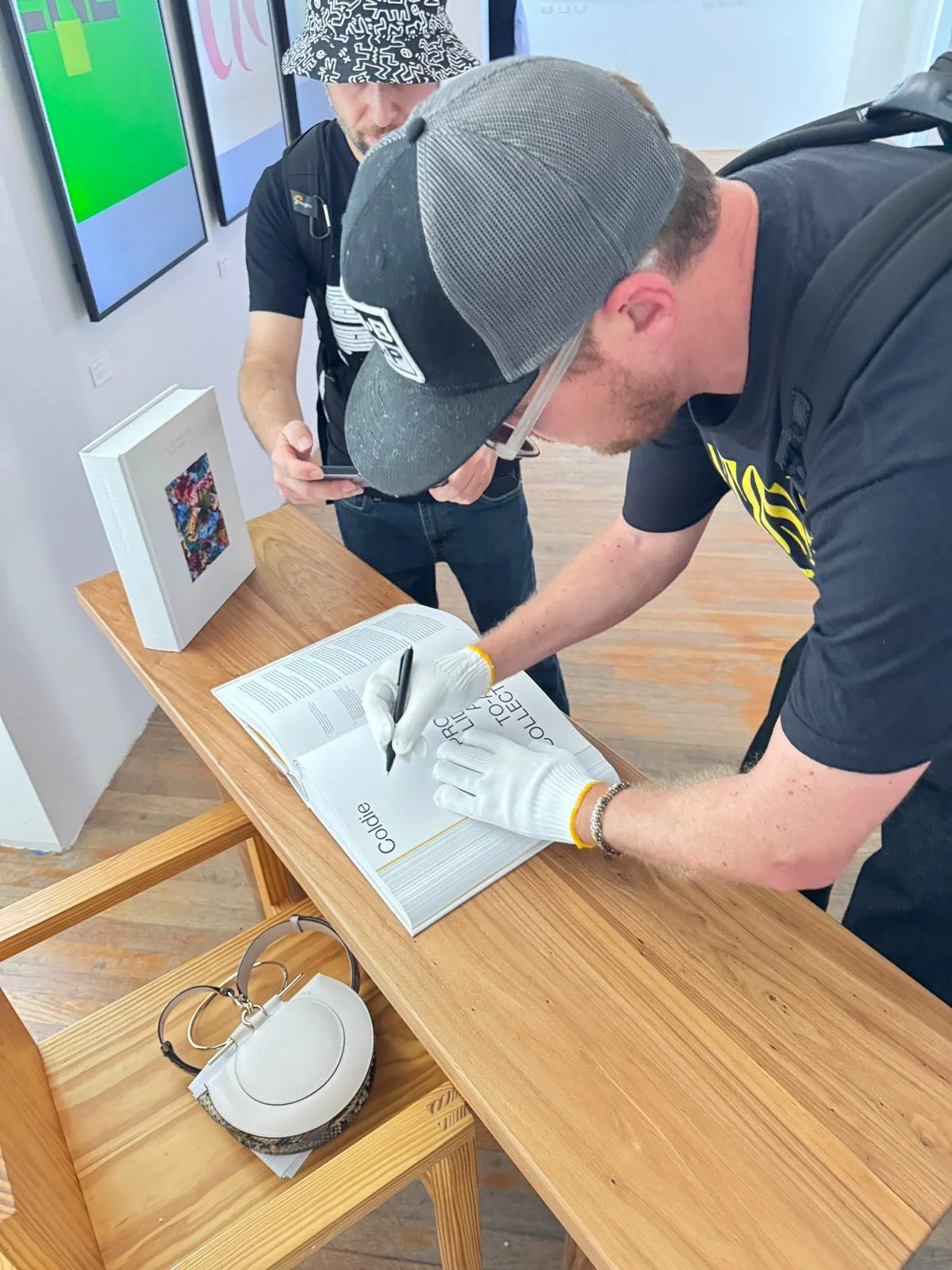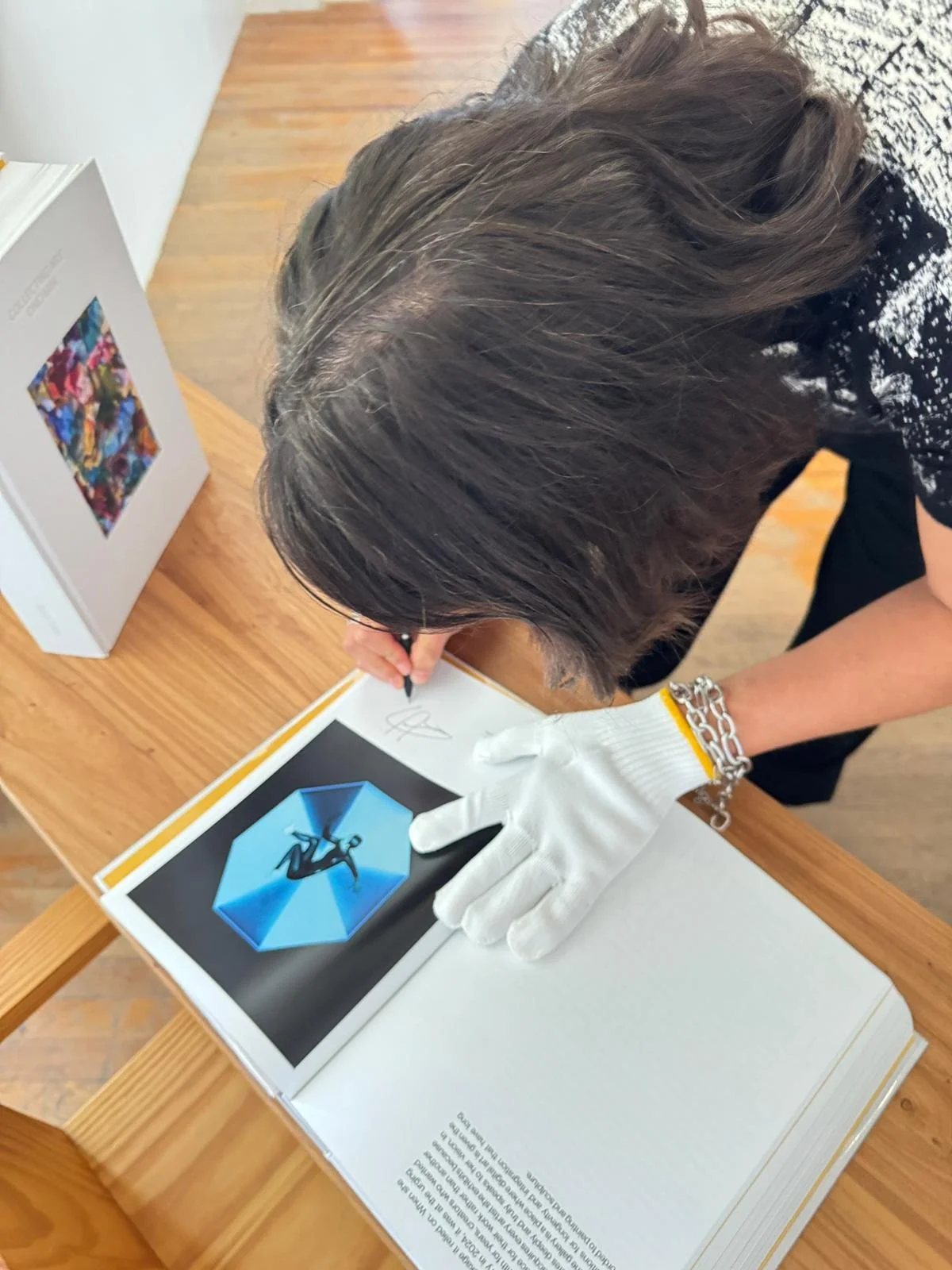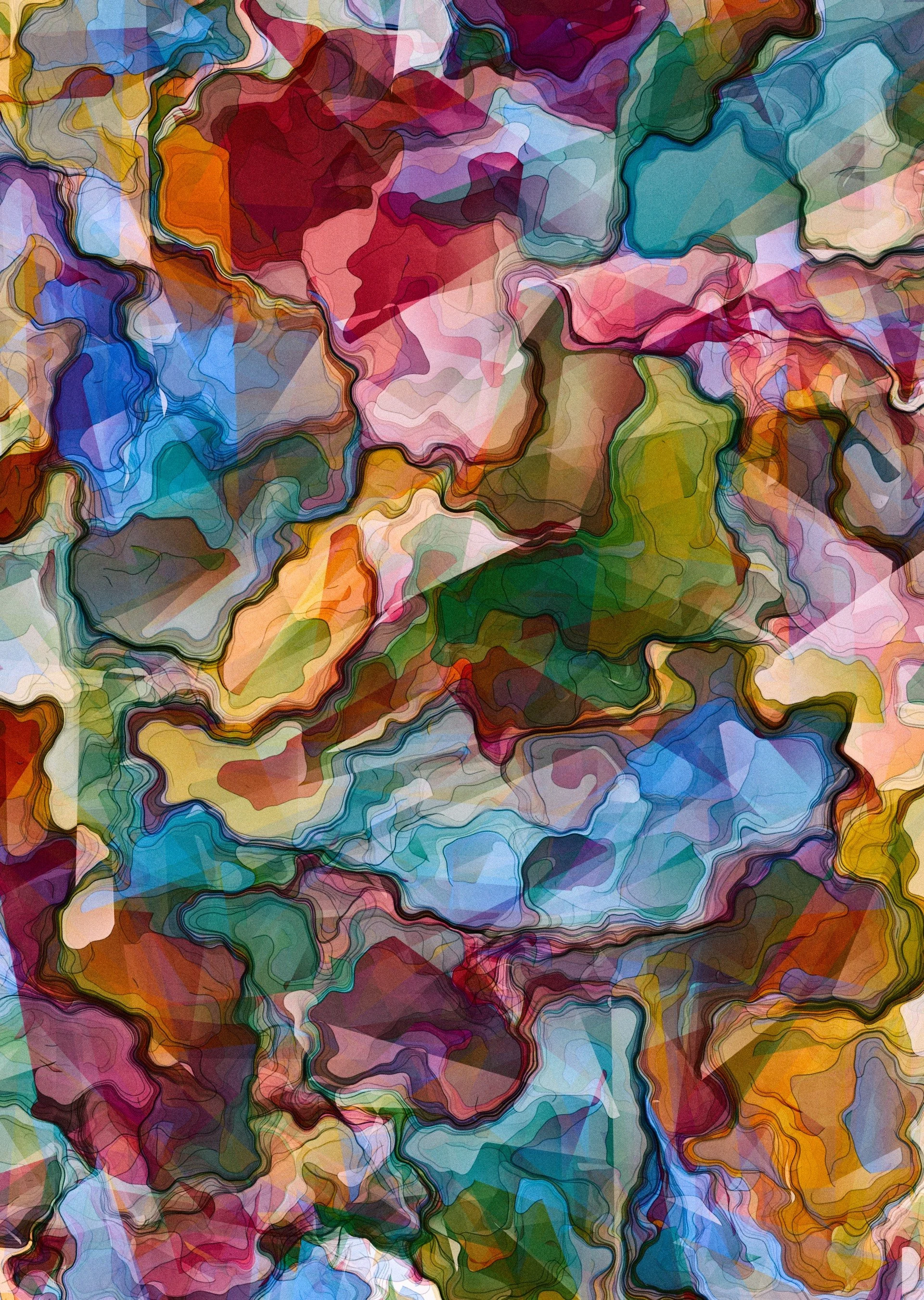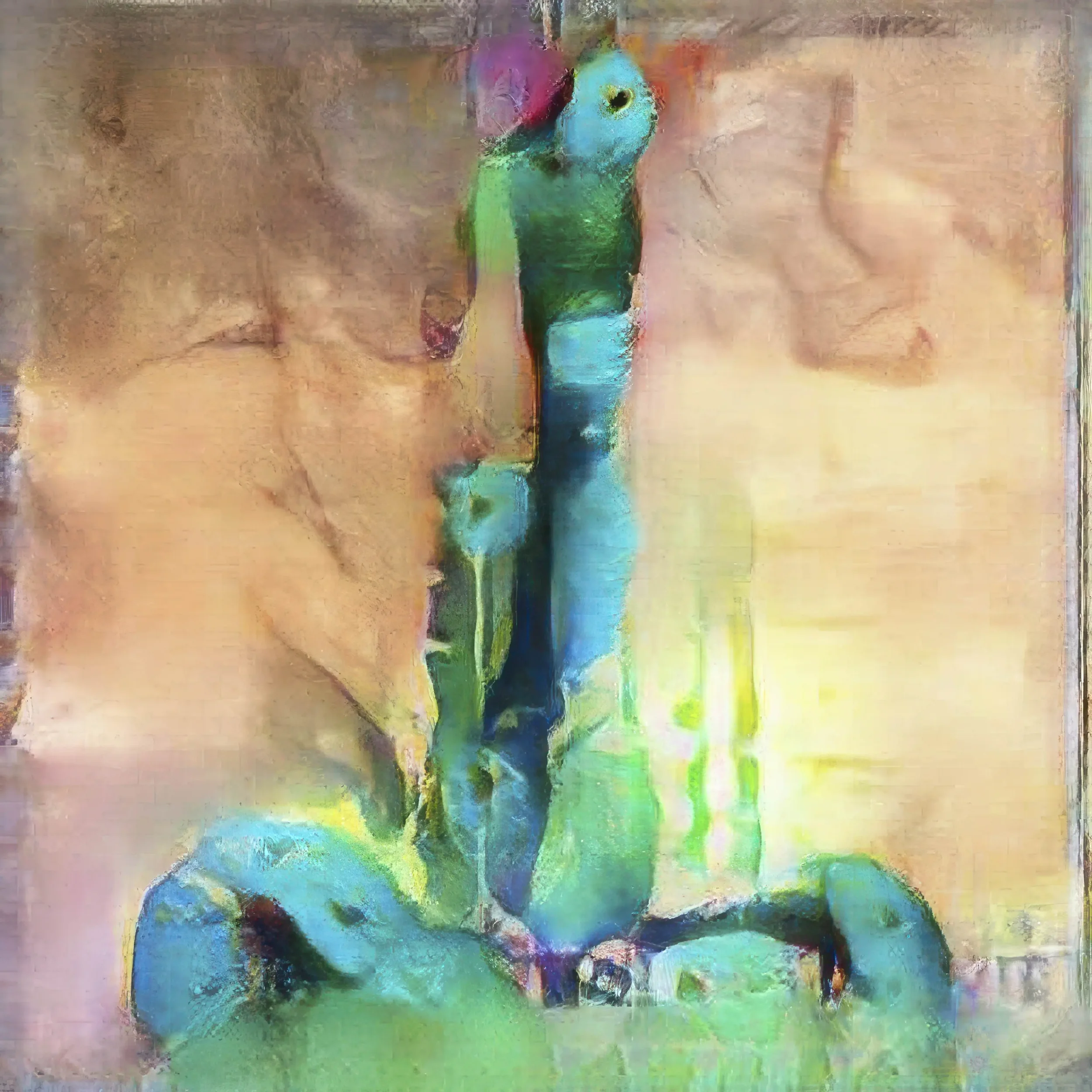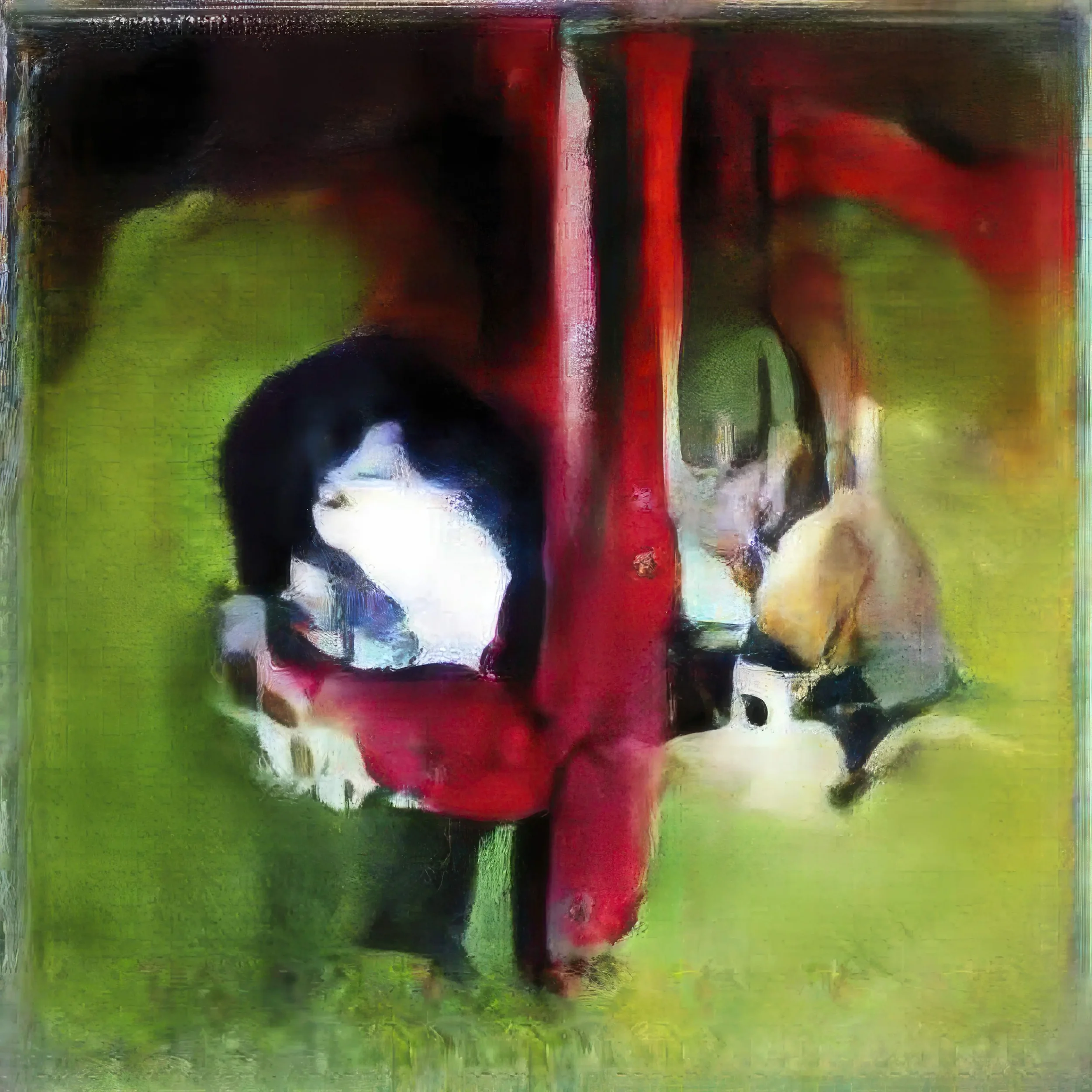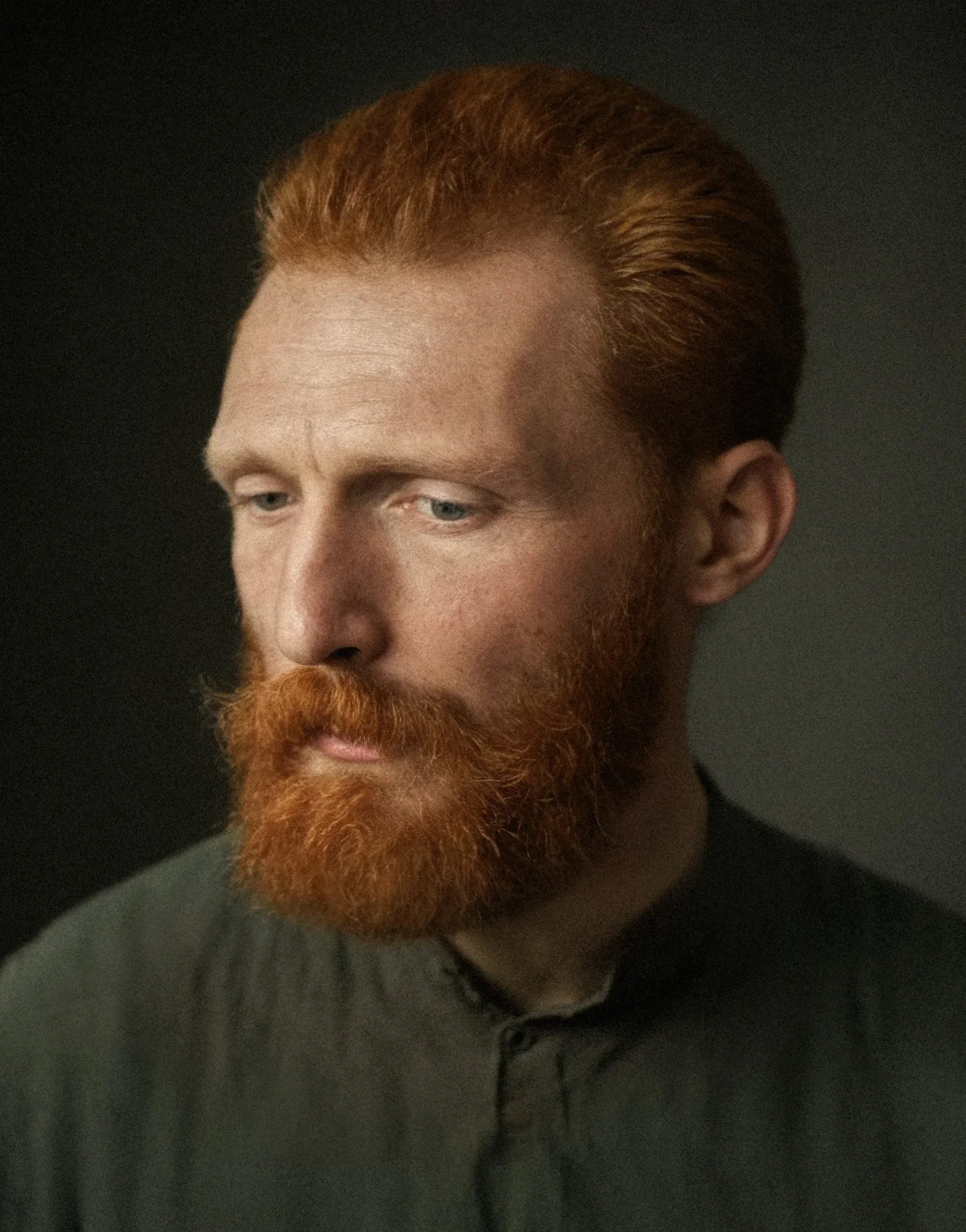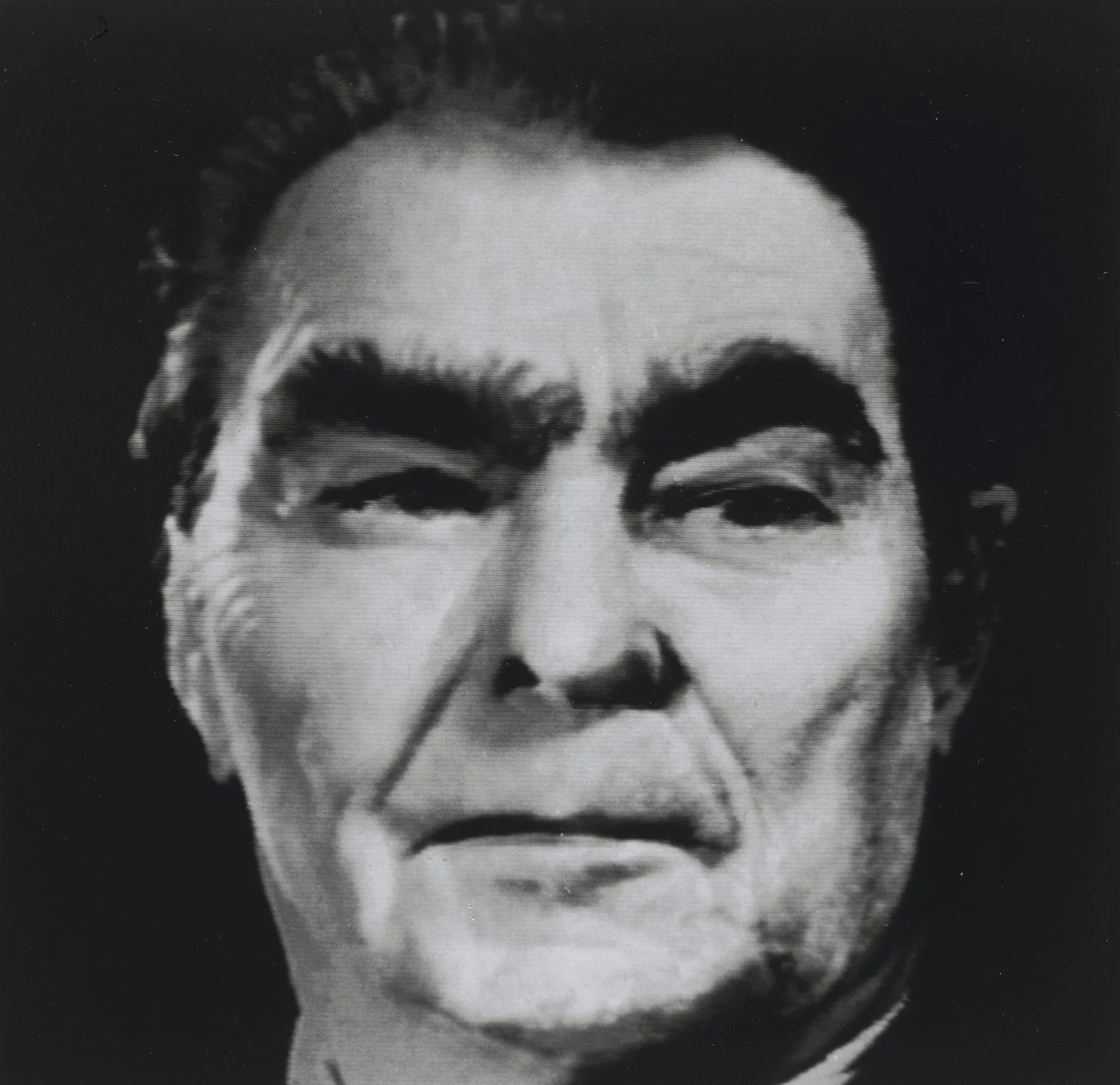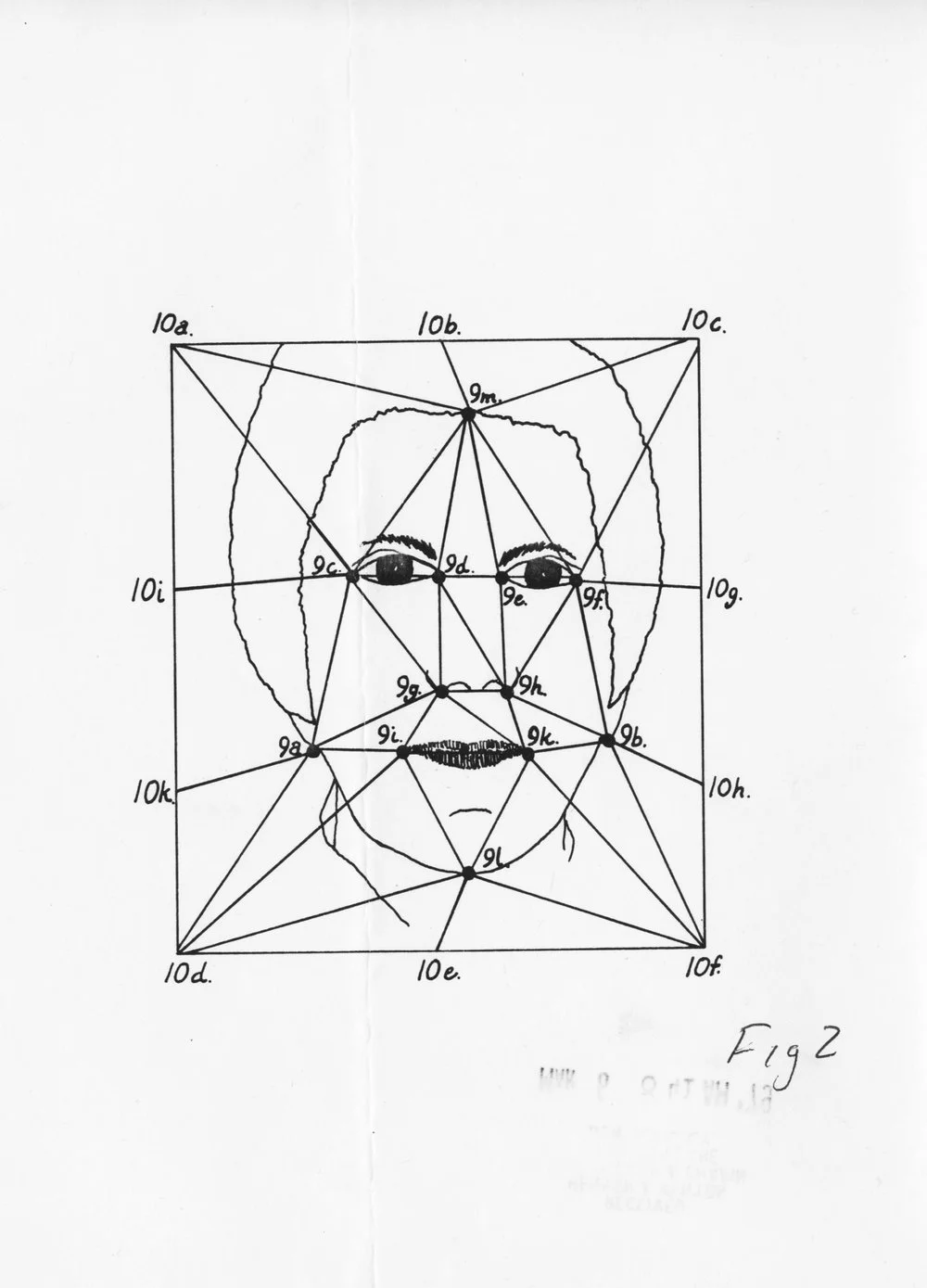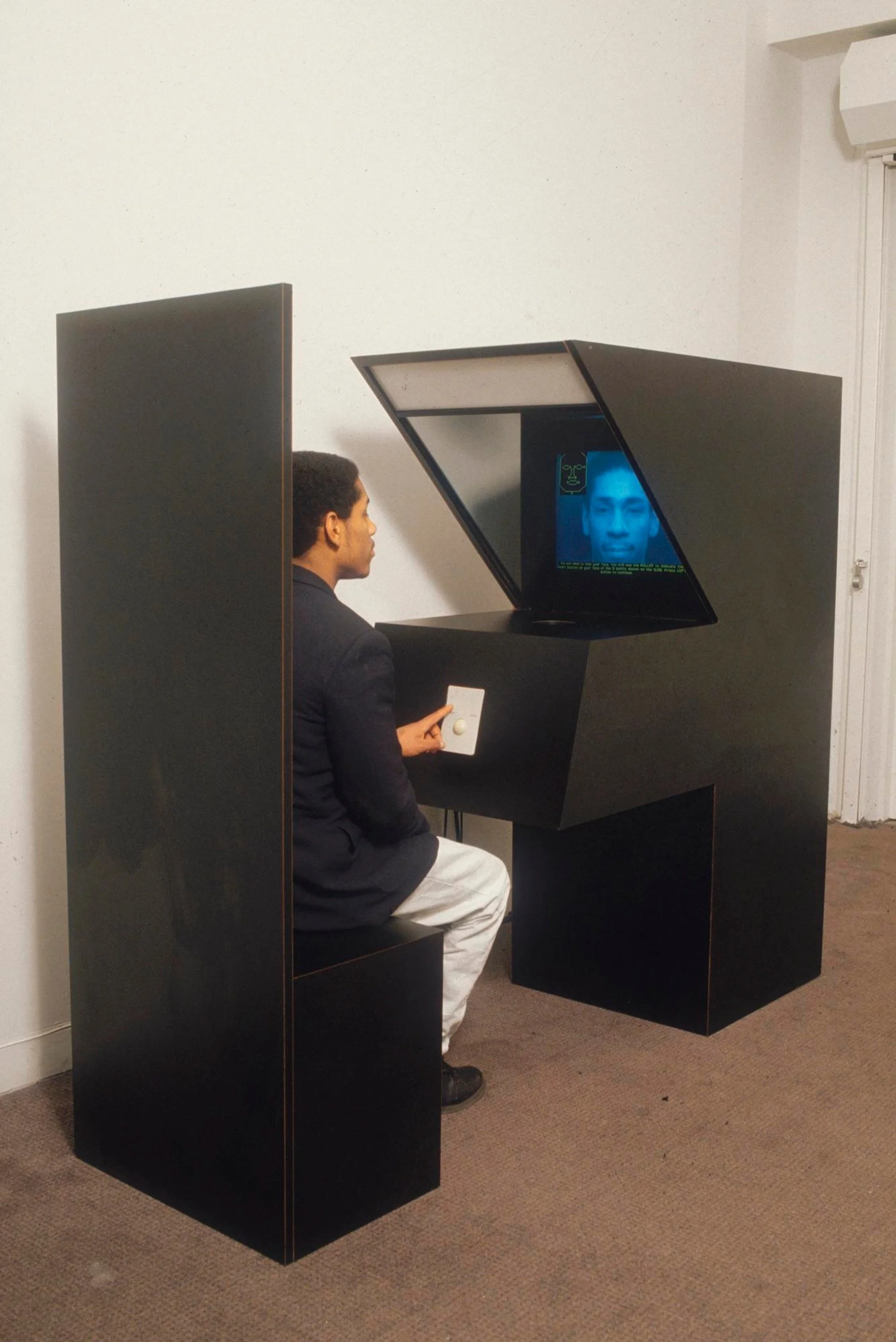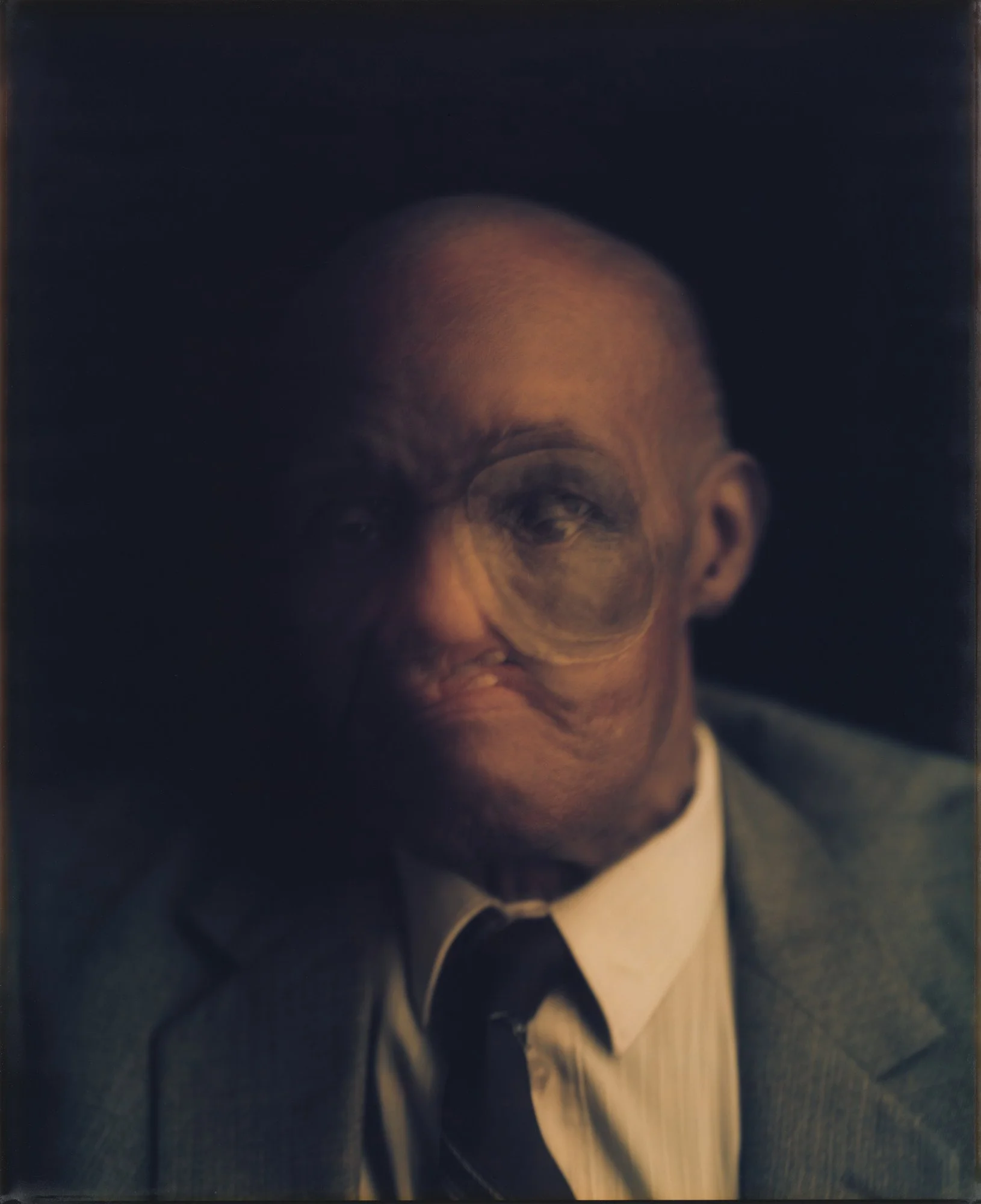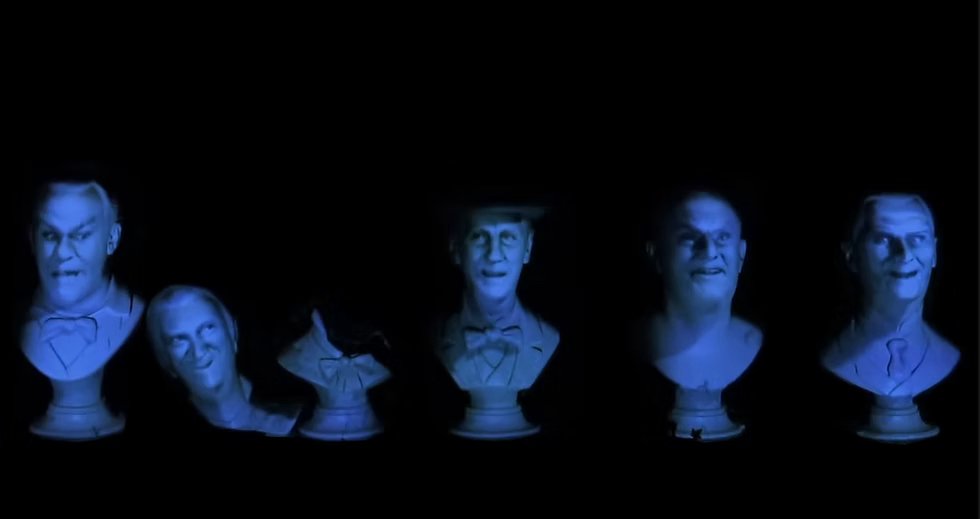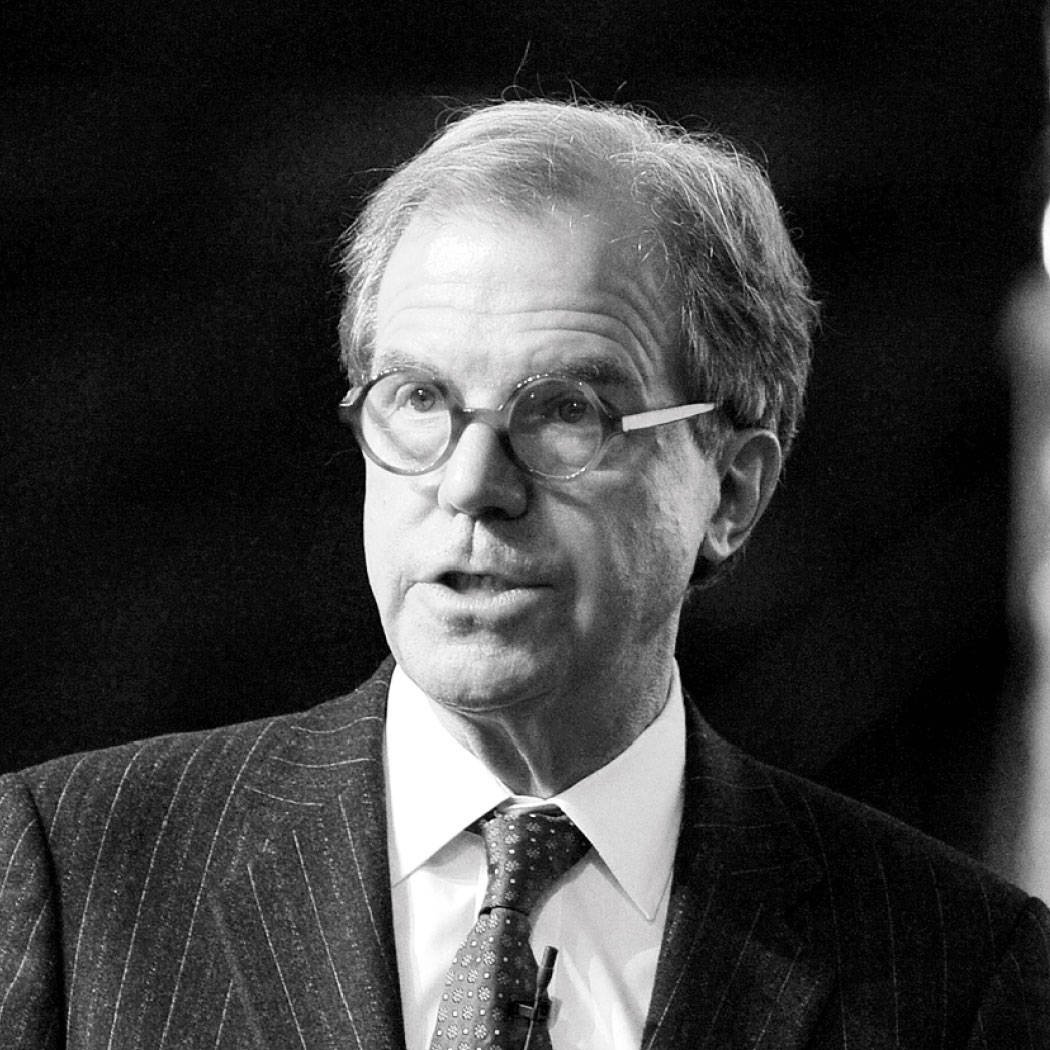Are We Doomed - or Simply Miscommunicating?
(XCOPY, Mixed Signals, and the Psychology of Seeing).
XCOPY, CryptoArtLand, 2020.
In the days following Art Basel Miami’s Zero 10 activation, an Observer article reignited a familiar standoff between Web3 and the traditional art world. On one side, Web3 participants argued- once again -that critics had “missed the point” of XCOPY’s work: its critique of systems, its intentional instability, its refusal to behave like art is supposed to behave. On the other hand, traditional critics insisted they had done nothing more than describe what they encountered: a laundromat installation, millions of free NFTs, and a spectacle that vanished almost as quickly as it appeared.
But this recurring debate misses the more interesting question.
The issue is not who is right.
The issue is whether any of us -Web3, institutions, critics, collectors- truly understand how XCOPY is being communicated, and how that communication shifts as it moves across contexts.
What looks like misunderstanding may, in fact, be a structural problem of transmission.
The Paradox of Displaying Non-Canonical Art
XCOPY’s art is often discussed in relation to entropy, unreliability, and systems collapsing under their own weight, frequently understood as reflecting the volatility, speed, chaos and repetition of internet culture itself. From the beginning, it existed in unstable conditions: distributed across ephemeral platforms, endlessly looped, circulating as files that felt disposable rather than fixed. Images repeated themselves, copied, saved, reposted, and reinterpreted.
His work did not invite slow contemplation in controlled environments; it thrived on friction, volatility, and misalignment. It resisted the mechanisms through which art typically stabilizes: archival coherence, institutional framing, and the gradual smoothing of edges that accompanies canon formation.
In this sense, XCOPY’s work was not merely anti-canonical in style.
It was anti-canonical in behavior.
Something feels askew about seeing XCOPY, in 2025, neatly displayed on wall-mounted screens inside a physical gallery. Presenting these works as a stabilized “timeline” within a clean white-cube setting risks softening the very instability that gives them their force. This is not a critique of the display itself, but a reflection on the viewer’s perception - especially when approaching an artist whose work was conceived to disrupt canonization rather than settle into it.
The SuperRare gallery, however, stands as a meaningful exception. It carries a particular legitimacy as a kind of homecoming: the platform where XCOPY minted his early 1/1 digital works. In this context, the exhibition, Tech Won’t Save Us, reads less as institutional containment and more as an evolution- both of SuperRare and of the artist -tracing a trajectory from the digital canvas into physical gallery space.
Rather than neutralizing the work, the setting reveals an interesting expansion of XCOPY’s practice, and of the platform itself, as both move beyond their original digital parameters.
XCOPY, Right-click and Save As guy, 2018, exhibited in Tech Won’t Save Us, organized by SuperRare in collaboration with The Doomed DAO, Offline Gallery, New York.
The question is not whether this form of presentation is legitimate.
The question is more fundamental:
What does it mean to canonize anti-canonical art?
Canonization is one of the most powerful context-shifts an artwork can undergo. To canonize a work is to relocate it, to place it within new spatial, cultural, and interpretive frameworks that actively shape how it is seen.
In this sense, canonization cannot be separated from a deeper issue: how artworks change meaning as they move across contexts.
So when XCOPY appears in a white cube gallery, an underground basement, and a global art fair within the same month, radically different interpretations are inevitable.
The work has not changed.
The contexts have.
The message fractures because framing alters how the work is perceived.
XCOPY, Loading New Conflict... Redux 5, 2018.
Perception Is Never Neutral
Psychology offers a useful lens here. We do not encounter artworks as blank slates. Perception is filtered through expectation long before the eye meets the object. Cognitive science refers to this as top-down processing: the mind supplies meaning in advance, filling gaps with assumptions, cultural cues, and prior beliefs.
In other words, we rarely see what is.
We see what we expect to see.
As art historian Ernst Gombrich famously observed, there is no such thing as the innocent eye. Seeing is never neutral; it is conditioned by habit, context, and belief.
From the early twentieth century, artists and theorists have challenged the idea that an artwork carries a stable meaning independent of where and how it is encountered. Marcel Duchamp’s readymades marked a decisive turning point. They demonstrated that placement alone could transform interpretation.
Context was no longer a neutral backdrop.
It became an active producer of meaning.
Marcel Duchamp, Fountain, 1917. Source: tate.org.uk
By the late 1960s and early 1970s, this expanded into a broader awareness of framing. Daniel Buren, in essays such as The Function of the Museum (1970), argued that museums and galleries do not merely display artworks, but they also actively shape how works are perceived, valued, and understood.
Meaning does not reside solely in the object. It emerges at the intersection of work, space, and expectation.
This becomes even clearer with digitally native works. They often accumulate meaning, value, and interpretation before they ever enter a physical exhibition space. The gallery or museum is not their point of origin, but one context among many. When they appear in physical form, they do not arrive as neutral objects. They arrive already shaped by prior circulation, community belief, and expectation.
What emerges is not a single meaning, but a series of encounters, each shaped by the conditions in which the work is met.
New York: “Tech won’t save us,” community might.
SuperRare was among the first environments in which XCOPY’s 1/1 works were minted, circulated, and meaningfully understood. Hosting Tech Won’t Save Us in New York, in collaboration with The Doomed DAO, is not an act of appropriation but of continuity -a homecoming that honors where both the artist and the platform began, while acknowledging how profoundly each has evolved.
Seen through this lens, the apparent tension between XCOPY’s destabilized, glitch-driven aesthetic and the gallery’s institutional calm becomes reflective rather than adversarial. What once existed, as often described, as raw disruption now carries history. What once resisted framing now tests it. The glitches remain, but they arrive with memory. The instability is intact, yet it is viewed through the accumulated weight of time, community, and belief.
XCOPY, The Doomed (Mono), 2019, exhibited in Tech Won’t Save Us, organized by SuperRare in collaboration with The Doomed DAO, Offline Gallery, New York.
The exhibition Tech Won’t Save Us, organized by SuperRare in collaboration with The Doomed DAO, Offline Gallery, New York.
Psychologically, the gallery still activates art-historical expectation. Viewers arrive prepared to analyze, contextualize, even canonize. But here, that expectation becomes part of the work. The framing suggests permanence; the imagery resists it. The friction is not a flaw -it is evidence of change.
The exhibition’s real gravity, however, lies beyond the screens. XCOPY, SuperRare, The Doomed DAO, and a deeply committed community occupy the same space, collapsing distance between artist, platform, and audience. The artwork becomes relational not because it demands interaction, but because it is inseparable from the network that carried it forward. In this moment, the network is no longer abstract-it is embodied.
What shifts in this context is not the content of the work, but its function. The work enters the white cube already carrying its own history, beginning to operate as a cultural artifact. XCOPY’s disruption is no longer only an act of refusal, it becomes an object of sustained attention. Volatility is slowed. Instability is held long enough to be examined. The work does not lose its critical force, but it changes how it is experienced, from immediate disruption to something viewers can stay with and examine.
Perception still diverges:
Some viewers see canonization.
Some see contradiction.
Some see celebration.
All are correct.
And perhaps that, too, is a measure of how time changes us—not only the artist and the platform, but the way we learn to see, and what we believe art should be.
Vienna & Melbourne: When Art Becomes a Signal Rather Than an Object
The satellite exhibition of Tech Won’t Save Us, Vienna, Austria. Organized by The Doomed Dao members @nessnisla.eth, @_mp9x
If New York renders XCOPY a cultural artifact, Vienna treats him as a transmission.
As a satellite exhibition of Tech Won’t Save Us in Vienna, the works are installed in a basement, where screens flicker against concrete walls indifferent to institutional decorum. Nothing in the space instructs the viewer on how to behave or what to think. Meaning is not ‘curated’; it is encountered.
Here, framing bias weakens. Without cues that signal “high art,” viewers generate interpretation more freely. A screen underground triggers adjustment rather than analysis. The work feels discovered, not presented.
In this environment, the work aligns closely with the visual language and cultural conditions from which it originally emerged. The absence of polish and institutional cues allows the work’s instability, discomfort, and refusal to surface more directly.
Responses vary. Some experience nostalgia - echoes of early internet culture. Others sense refusal-art that won’t resolve into comfort. Some dismiss it entirely as “screens in a basement.”
The file, of course, is unchanged.
Only the context shifts - and with it, the meaning.
Art Basel Miami: Expectation, Misperception, and the Laundromat
Art Basel Miami introduces the most acute perceptual conflict: XCOPY’s Coin Laundry, where more than 2.3 million free NFTs were claimed, all but one designed to self-destruct over the next ten years. Coin Laundry was conceived specifically for this scale and setting, where mass participation, speed, and disappearance are not side effects but core elements of the work.
Within Web3, the work was largely read as critique—a dismantling of value stability, liquidity theater, and the fetishization of ownership. Within the traditional art world, it appeared to confirm long-held suspicions: abundance without scarcity, spectacle without substance, volatility masquerading as meaning.
This is confirmation bias at work.
XCOPY, Coin Laundry, 2025, presented by Nguyen Wahed at Art Basel Miami.
People interpret information in ways that reinforce what they already believe. XCOPY dissolves value systems; critics perceive disposability. Their interpretation is not wrong - it is partial. They are not, as many claim, ‘missing the point’; they are encountering it through a familiar psychological schema.
Scale does not distort meaning; it accelerates it. When a work reaches millions, interpretation compresses, and familiar expectations assert themselves more quickly. The intention remains intact, but the conditions of reception shift.
Learning How to See — and How to Connect
The challenge is not how to show XCOPY’s work.
It is how to connect it to audiences who are not already native to its language - who do not come from crypto, blockchain, or online network cultures.
XCOPY’s practice was never built to explain itself to everyone at once. It emerged from specific conditions: digital scarcity, speculative economies, on-chain identity, and communities that understood value as volatile, temporary, and often performative. When that work enters broader cultural spaces, it encounters viewers who lack not intelligence, but context.
Perspective matters.
Expectation matters.
Experience matters.
Meaning does not fail here - it collides.
XCOPY’s work operates as conceptual art, but its concepts are encoded in network logic rather than art-historical language. For those outside that logic, the signal can register as noise. This does not invalidate the work; it reveals the gap between worlds that are now colliding.
XCOPY, the fuck you looking at?, 2020.
So the question becomes: can we learn to encounter the work without demanding immediate comprehension?
Children do this naturally.
They do not need fluency in systems to respond, they are moved by intuition. They experience first. They remain open to confusion. They allow meaning to form over time rather than insisting on resolution.
Perhaps this is the mode of viewing XCOPY requires - not expertise, but suspension. A willingness to step back from expectation and let the work exist before asking it to perform.
If so, XCOPY’s practice is not about cleanly bridging worlds or translating itself into familiar terms. It exists in advance of mass understanding - inhabiting networked futures that will inevitably spill into physical reality, but never on stable terms.
The work does not ask to be celebrated.
It does not ask to be agreed with.
It asks only to exist long enough to be encountered- before perspective, belief, and expectation decide what it is allowed to mean.
Yet gathering, curating, narrating, canonizing - these are institutional actions no matter who performs them. Decentralization dissolves authority only for it to quietly reassemble elsewhere, often inside a Discord server.
The Doomed DAO does not resolve this tension; it holds it. It attempts to preserve entropy where systems naturally seek permanence. XCOPY never promised stability, longevity, or preservation.
A noble contradiction. In other words -
Very XCOPY ;)
xxx
Disclaimer
This text does not claim to define XCOPY’s intentions. The aim of this article is not to explain XCOPY, but to examine how meaning shifts through context, framing, and viewer perception as the work moves across platforms, spaces, and audiences. What is described here is not what the work is, but how it is seen.
Credits & Congrats
Strong work by all who shaped XCOPY’s work across contexts and cities:
New York — @SuperRare, @_MP9X and the whole @TheDoomedDAO (Tech Won’t Save Us)
Vienna — the satellite organizers who embraced friction and let the work function as signal, not object
Art Basel Miami — @artbasel @zero10art (Coin Laundry)
Melbourne & beyond — independent curators and local teams continuing to test digital art in the wild.
Well done to everyone involved.
Physical card, signed by XCOPY, distributed at his solo exhibition Tech Won’t Save Us at Offline Gallery, New York.
★attention economy: Beeple’s Regular Animals — Who’s a Good Dog? Whoever Gets the Most Attention.
A deep dive into how attention—not art—creates value in Web3. Featuring a case study on Beeple’s Regular Animals and the psychology behind engineered virality.
Attention is a strange currency. The more information we receive, the less we can hold. Psychologists warned this decades ago: overstimulation erodes focus; cognition collapses under overload. Yet we keep reacting — faster, louder, more impulsively.
My last post made this painfully clear.
It generated discussion, outrage, agreement, confusion — everything except one thing: very few people actually read the full article.
Without time, slow reception, or attention to detail, no one can form a real opinion or offer meaningful critique. And that, precisely, is the point.
The most valuable currency today isn’t gold, oil, or even Bitcoin. It’s attention — the invisible architecture determining what becomes visible, valuable, celebrated, or quietly erased.
René Magritte, The False Mirror, 1928. A literal diagram of the modern internet: the eye doesn't see reality; it reflects the system back at itself. Image source: moma.org
In a world drowning in information and starved of cognition, attention is not just scarce — it is weaponized.
Psychologists warned that attention collapses under overload. Economists warned that scarcity creates markets. Today, culture forms inside the two.
Whoever shapes attention shapes narrative. Whoever shapes narrative shapes the future.
Open X and within seconds you’re pulled into a storyline you never chose — not an artwork, not an idea, but a frame engineered to feel organic.
Hito Steyerl, How Not to Be Seen, 2013. A manual for surviving the visual regime. Steyerl shows what most people still refuse to admit: images aren't just pictures — they're systems of power. They compress social forces into a single frame. Image source: moma.org
Most people don’t form opinions independently — not from lack of intelligence, but because independent judgment requires three things modern culture erodes: time, context, resistance.
It’s easier to mirror what appears “liked” than risk thinking differently. And when someone diverges, the crowd rushes in to “correct” them — social pressure disguised as consensus.
Behavioral psychology has documented this for decades: when uncertainty is high, humans outsource judgment to the group. Digital art, still lacking stable institutions or literacy, amplifies this effect.
Those who command or manufacture attention now determine more than price. They determine cultural reality itself — what is seen, forgotten, declared important, or omitted entirely.
Abundance vs. the Limits of the Mind
Herbert Simon captured our era perfectly: “A wealth of information creates a poverty of attention.”
Information can scale infinitely. The mind cannot.
Pak, The Merge, 2021. Pak's highest-selling NFT, generating $91.8 million. The work is one of the best expressions of how attention becomes value. The supply of the artwork increased as more people bought “mass” during the sale — meaning the artwork literally grew through attention. Image source: barrons.com
Behavioral economists call this the attention budget: a cognitive limit beyond which every additional input forces the brain to neglect something else. When information grows exponentially and attention does not, scarcity emerges — not of capital or objects, but of focus.
Where scarcity emerges, markets form. And in attention markets:
• what stands out overwhelms what matters
• visibility becomes shorthand for value
• velocity outruns understanding
Digital culture is frantic by design. Platforms scale speed, not meaning. Web3 simply added financialization.
When the system rewards immediacy, depth becomes a risk.
Attention as a Tradeable Asset
Nam June Paik, TV Buddha, 1974. Paik's recursive loop between observer and machine symbolizes a contemporary self-reinforcing cycle of attention: a recursive loop of watching ourselves watching ourselves. Image source: pbs.org
Metrics like likes, retweets, follower counts, wallet trackers, and “top sales” dashboards became market indicators → indicators became liquidity → liquidity became narrative.
A reflexive loop emerged:
Attention lifts prices.
Rising prices attract attention.
Attention endorses the narrative.
Narrative legitimizes value.
George Soros described this in reflexivity theory; behavioral economists map the same pattern in speculative cycles. Perception becomes reality long before reality is understood.
In Web3, this loop runs at hyperspeed. Not a bug — the design.
The Psychology Behind Reflexive Culture
Gustave Le Bon, The Crowd: A Study of the Popular Mind, 1895. Le Bon's diagrams of crowd behavior illustrate how individuals become reflexive and irrational under social signals. Image source: amazon.com
Consumer behavior research shows that human cognition relies on fast heuristics, especially under uncertainty. Digital art — new, unstable, lightly contextualized — is the perfect breeding ground for these biases.
We are neurologically wired to prioritize:
novelty (dopamine response)
emotion (amygdala activation)
social validation (the social proof heuristic)
urgency (scarcity effect)
repetition (the mere-exposure effect)
Web3 triggers these on a continuous loop:
Quick cues override slow thinking (Kahneman’s System 1 dominates System 2).
Collective enthusiasm substitutes for personal judgment.
FOMO compresses decision-making time.
People align with what feels socially safe rather than what feels true.
In such an environment, independent taste becomes a high-cost activity. Most people, rationally, choose the alternative: they follow the signal.
The louder something is celebrated, the more “true” it feels — not because it has been understood, but because our cognition is structured to avoid social and cognitive friction.
This is not stupidity. It is psychology. It is economics.
And in Web3, it is infrastructure.
★ Case Study: Beeple’s Regular Animals. Who’s a Good Dog?
(A short analysis of attention economy dynamics — not a review of the artwork itself.)
Beeple, Regular Animals, 2025. The installation itself is an attention engine — faces, movement, absurdity. A real-world embodiment of engineered attention.
Beeple’s Regular Animals at Art Basel Miami did not simply “go viral.” It engineered virality — a deliberate construction of Dogconomy™, where spectacle converts directly into liquidity and narrative.
This is not an artistic judgment. This is an analysis of how the attention economy behaves when someone understands its mechanics with extraordinary clarity.
Beeple reads contemporary culture with unusual precision. His Everydays practice operates at the same speed, compression, and hyper-reactivity that define our digital present. In many ways, Regular Animals is a testament to that fluency — a kind of virtuosity in attention architecture.
It is also important to say this clearly:
Beeple is not the benchmark for the average artist.
He enters the attention economy with a massive collector base, institutional visibility, and an audience ready to amplify anything he releases. Most artists do not step into the arena with this infrastructure — which is precisely why this activation becomes such a revealing study of how the system behaves at scale.
Anatomy of a Spectacle
Regular Animals made its logic unmistakable.
Robot dogs wearing the faces of Warhol, Picasso, Bezos, Musk, Zuckerberg — and Beeple himself — roamed the Zero10 corner, scanning visitors and ejecting prints. Using famous faces is not incidental: the brain’s face-recognition circuitry (fusiform area) activates automatically, making these images impossible to ignore. They trigger salience, authority cues, and instant recognition — all core levers of the attention economy.
By placing his own face among cultural icons, Beeple taps into a known cognitive bias: status association. When unfamiliar and familiar stimuli appear together, the mind unconsciously transfers value and importance across them. It’s not a conscious comparison — it’s automatic associative priming.
The installation stacked the strongest attention triggers at once:
· faces (biologically prioritized),
· movement (evolutionary threat detection),
· novelty/absurdity (pattern break),
· surprise (orienting reflex).
Together, these cues force a reaction before reflection — exactly how attention functions under cognitive load. In this sense, Beeple’s activation didn’t just live inside the attention economy; it demonstrated its mechanics with textbook precision.
This wasn’t designed for slow interpretation.
It was designed for capture — a spectacle operating at the level of instinct rather than intellect.
The “car crash you don’t want to see but slow down for anyway.”
And because Beeple already commands an enormous collector base, the loop accelerated far faster than it would for any emerging artist.
Scale amplifies show.
The Crowd as Engine
The work relied less on the object itself and more on the crowd who looked, filmed, and shared. Their phones and feeds became the distribution infrastructure — a live enactment of Metcalfe’s Law, where each participant increases the network’s power.
Most viewers formed judgments without context, a classic case of heuristic substitution: not “Do I understand this?” but “Is everyone reacting to it?”
The “free poop” prints tapped into casino psychology — randomness, intermittent reward, and anticipation. When a few began trading around 10 ETH, the loop accelerated:
price → posts → spectacle → more buyers → higher price???
But attention-driven pricing follows a well-documented cognitive curve: once the stimulus fades, salience drops, social proof dissolves, and buyers realize their decision was made under attention pressure rather than evaluation.
That’s when the loop reverses:
diminished attention → lower demand → falling price
Which is why many pieces purchased at the peak usually sit at a loss — a predictable outcome in attention markets where momentum, not conviction, drives entry.
A self-reinforcing circuit, until it isn’t.
To Beeple’s credit, none of this is accidental. He has shown up every day for years, building a base, mastering spectacle, and understanding exactly how attention behaves when pushed.
Few artists possess that combination of consistency, scale, and instinct.
So Who’s the Good Dog? — The One Who Gets the Most Attention.
Economically, this is value formed by salience rather than substance — where the artwork matters less than its visibility and the velocity of its circulation.
Beeple did not merely participate in the dynamics of attention. He demonstrated their mechanics with clinical clarity.
A real-time diagram of how contemporary culture — and Web3 markets — now work.
And from an attention-economy perspective, it was almost textbook-efficient.
The Burden (and Beauty) of Slowing Down of being conscious.
Jenny Holzer, Truism: Protect Me From What I Want, 1994. Predates Twitter/X yet operates exactly like a viral command — short, urgent, psychologically loaded. Image source: artsy.net
So What’s the Solution?
In a Culture Drowning in Noise and Starving for Thought**
We live inside a system where information multiplies faster than cognition can process it. Our attention is stolen before we even realize it’s gone. AI completes our sentences. Feeds complete our opinions. And our minds — overstimulated and under-rested — struggle to hold focus long enough to care about anything deeply.
So what do we do?
We slow down.
We reclaim friction.
We choose consciousness over reflex.
Every collector I interviewed in the Collecting Art Onchain book emphasized the same point:
Art needs time. Meaning needs oxygen. Reflection requires slowness.
Yet panic-driven purchases, group-influenced reactions, or emotionally charged “first come, first served” mint frenzies now sit at heavy losses.
Not because the art was weak — but because speed dictated attention. A classic heuristic shortcut: fast decision-making under perceived pressure.
And this is the real consequence of the attention economy:
We scroll. We skim. We react.
We rarely finish reading. We almost never think.
Critical thought requires friction. And friction has been meticulously taken out of our digital lives.
Our gaze moves wherever the crowd tilts — and somehow we still celebrate that as choice, as autonomy, as decentralization.
It’s almost funny, if it weren’t tragic. The “decentralized” mind moves in perfect synchronization with the algorithmic crowd, mistaking mass signals for personal conviction.
Recovering our attention — and our ability to think — isn’t a philosophical luxury. It’s the only way to participate in culture with agency rather than drift as audience.
Audit the Narrative - Ask the Hard Questions
Meaning is not found in the feed. Meaning is found in what the feed tries to distract us from.
Francisco Goya, The Sleep of Reason Produces Monsters, 1797-1799. Image source: artincontext.org
A moment of metacognition — a brief audit of our own habits before they quietly become our beliefs. Goya’s warning still applies: when awareness sleeps, other forces do the thinking for us.
If we want to reclaim our attention — and with it, our narrative — we have to practice a different discipline:
• read beyond the scroll
• think longer than we react
• look before we like
• disagree without exile
• reward depth over noise
• design systems that slow us down when the world accelerates
Meaning is almost never found in the feed. Meaning lives in everything the feed rushes us past.
In an economy built on attention, choosing where to look is the last form of freedom we fully control. And the future of digital art — of any culture worth preserving — depends on whether we exercise that freedom consciously.
xxx
★ Featured Artists/Artworks
René Magritte — The False Mirror (1928)
Pak — The Merge (2021)
Hito Steyerl — How Not to Be Seen (2013)
Nam June Paik — TV Buddha (1974)
Jenny Holzer — Truisms: Protect Me From What I Want (1994)
Francisco Goya — The Sleep of Reason Produces Monsters (1797–1799)
Beeple — Regular Animals (Art Basel Miami)
Curator Focus: Eleonora Brizi
Every movement has its chroniclers— those who don’t just witness change, but shape how it will be remembered. In Web3, we once imagined a world without tastemakers — a decentralized field free from gatekeepers, hierarchies, and inherited authority. “Let the code curate,” we said. But the truth is more human: the space still needs those who care — who can hold chaos long enough to find coherence, and who can translate technological acceleration into cultural continuity.
The Book On-Chain project introduces Curator Focus, an ongoing series of conversations with the individuals who build bridges between code and culture. Each edition highlights a curator who has shaped the evolving landscape of digital art — not as a gatekeeper, but as a custodian of context.
We open the series with Eleonora Brizi, one of the first to take curating on-chain seriously, long before institutions learned the language of tokens. Her role is as contradictory as it is essential: she curates but doesn’t collect; she builds platforms yet critiques their models; she documents rebels while refusing to be canonized. In a world that celebrates decentralization, Brizi insists that curation — when done with integrity and transparency — is not an act of control but of care.
Her work reminds us that in any system, decentralized or not, someone still decides what deserves attention — and how it’s remembered. The difference is whether that decision is made in service of ego or of ecosystem.
Eleonora Brizi
Eleonora Brizi is a curator, translator, and cultural mediator whose work sits at the intersection of dissent and historical memory. She entered the crypto art space as someone who had spent years embedded in systems where the stakes of expression were life-defining. Her journey began in Beijing, where she worked for four years inside the studio of Ai Weiwei, at a time when surveillance was constant, exhibitions could be shut down overnight, and the simple act of artistic collaboration could carry political risk. It was there, surrounded by dissident artists and young Chinese staff navigating real consequences, that Eleonora developed the instincts that would shape her later work in crypto art.
When Eleonora arrived in the crypto space in 2018, she recognized something familiar: not the aesthetic, but the energy. Within weeks, she began archiving the Rare Pepe phenomenon, then widely dismissed, and co-created The Rarest Book, one of the first serious curatorial efforts to historicize early blockchain art through a cultural lens. Since then, her work has remained unusually grounded in geopolitics, cultural translation, and real-world access. She curated Renaissance 2.0 2.0. in Rome during the pandemic, building an exhibition of digital-native art inside a traditional space with no funding, little precedent, and minimal institutional support, yet drawing hundreds on opening night. She has spent the last few years traveling between Europe and China, where she is now developing a blockchain-specific Chinese vocabulary and working to understand how regulatory, linguistic, and infrastructural barriers shape who can participate in Web3.
Unlike many in the space, she doesn’t believe in artificial scarcity. She believes in access. She speaks the language of context, of curation, of culture. Her influence in crypto art is hard to quantify precisely because it isn’t extractive. It’s archival and found in the bridges she builds between artists and institutions, between East and West, and between a decentralized promise and its all-too-centralized reality.
Freedom as a Medium
When Eleonora Brizi first encountered crypto art, she wasn’t looking for blockchain. She wasn’t even looking for art. “I didn’t study art,” she says. “I studied Chinese and Chinese culture. But I was interested in art as a way to understand dissent.” That interest took her deep into China’s underground. Her university thesis focused on The Stars Art Group, a radical collective of artists in post-Mao Beijing who staged unsanctioned exhibitions in the streets. One of them was Wang Keping, the exiled sculptor who handed her a handwritten letter of introduction. “He told me, ‘You should go to Ai Weiwei. Would you like to work for him?’ I said, ‘Of course.’ And he wrote a letter. He told me, ‘Don’t call, don’t email, it’s complicated. Just go to Beijing, go to the studio, and hand him this letter.’”
So she did. Fresh out of school, with no job and no plan, Eleonora flew to Beijing and walked into Ai Weiwei’s studio. “He looked at it and said, ‘This is from one of my best friends. He’s my brother. We can try for three months.’ I stayed for four years.”
Image of the Stars Art Group. Source: royalacademy.org.uk
Those four years shaped her. “It was my first job,” she recalls. To her, the experience was like breathing freedom of expression every day. The studio was under constant surveillance. “The Chinese people who worked there were incredibly brave,” she said. “They were risking something real. For the foreigners, we were safe. But for them, it meant surveillance. It meant trouble.”
“It was my first job, and I developed my work experience in a place where I was breathing freedom of expression and freedom of speech every day.”
When Ai Weiwei finally left China for Berlin, Eleonora stayed. She worked for other artists and spent two more years immersed in China’s complex cultural landscape. But in 2018, she needed change. “I had this thought: after all this time in China, I don’t know anything about the U.S. I wanted to see what was happening.” Two weeks after arriving in New York, she attended a blockchain conference at the National Arts Club in Manhattan, where she met speakers such as SuperRare John, Judy Mam from Dada, Jessica Angel, and members of the Rare Pepe project. The Rare Pepe project, in particular, caught her attention and made her realize that curatorial work could give context and meaning to this new, emerging space.
After the conference, at a dinner, she asked, “Do you have any literature on this? Something we could bring to the art world and say, do you know this exists?” The founders hesitated. “They didn’t want curators. They didn’t want paper. They didn’t want anything. But someone smart enough said, ‘We can do a book.’” So they did.
The Rarest Book, 2018 by Eleonora Brizi. Source: wiki.pepe.wtf
That October, she launched The Rarest Book, a curatorial publication about Rare Pepes, first at the New Art Academy conference, then again the next day at Bushwick Generator. “All the New York community actually came,” she says. “That’s how I started. And that’s how I think I transitioned from Ai Weiwei to crypto art, because I found the same need and like screaming for freedom of expression… It was always with the rebels. And it was always with the socially involved art somehow, like social change. Either from like a dissident or crypto art, which is a way to be dissident, you know, that’s, I think, what always drew me.”
Renaissance 2.0 2.0: The Child of Its Own Time
In 2020, as the world braced for lockdown and Italy became the first European country to shutter its cities, Eleonora Brizi was preparing to launch one of the earliest in-person exhibitions dedicated to blockchain-based art. She called it Renaissance 2.0 2.0., a nod to the idea that this moment wasn’t a continuation of the Renaissance, but a reformatting of what “art” might mean altogether. The venue was unexpected: a historic gallery in the heart of Rome. “I found a man,” she says, laughing softly. “He was the owner of this amazing space in Rome, and he knew nothing about digital art. Nothing about blockchain. Nothing about what I was doing.”
But maybe that was the point. “He said to me, ‘I’m so bored of doing religious exhibitions. Of always showing the Renaissance, or just rehashing history. I want to do something different.’” When he asked her how much money she had, her answer was blunt: “Zero. I have zero. But I’m not a thief,” she added, “so if I need to get sponsors, I can try.”
Opening of the Renaissance 2.0 2.0 exhibition in 2018 in Rome, curated by Eleonora Brizi. Source: movemagazine.it
Instead of turning her away, he said yes. “I’ll give you the space for free,” he told her, “but promise me one thing, we make a printed catalog.” He ran a publishing company and liked the idea of anchoring the ephemeral into something tangible. “That’s why we have the Renaissance 2.0 2.0. catalog,” she explains. “It’s because of that agreement.” The show was meant to open in April 2020. Then came the first lockdown. The date was pushed to June, and that was still not possible. Eventually, it landed in October. “We called it the miracle show,” Eleonora says. “Because everything was working against us. COVID, logistics, travel, timing, my own health.”
“I was sick, in pain, completely overwhelmed. I had no assistant. I was doing everything alone.” But what made Renaissance 2.0 2.0. even more extraordinary was the fact that no one in Italy knew what crypto art was. “Nobody knew,” she says flatly. “In New York, it was small but growing. But in Italy? Nothing.” Still, she persisted. “Because I believed in the art. I believed in the artists.”
But then came more restrictions. “Every Monday, the government would issue new rules. First, they took away the cocktail from the opening. Then they took away the conference I had planned, panels on blockchain and art, with people flying in to speak. Gone. Then more rules: no gatherings in enclosed spaces. No mingling. No drinks. No nothing.”
And then, another blow. The artists, many of whom had planned to install their own work, backed out. Some had virtual sculptures. Others needed to be on-site to adjust digital equipment, test VR displays, manage installations. “But nobody came,” she says. They were scared. Or flights were cancelled. Or they just couldn’t risk it. So there she was: a single woman, surrounded by screens and cables and boxes of artwork, trying to pull together a show with no support, no event, no clear audience.
“Even without a cocktail, without music, without a conference... 550 people came. Five hundred and fifty people, in Rome, showed up just to see the art.”
The owner of the space came to her and asked: Do you want to postpone? Eleonora thought about it. And then, in her words: “I said, this show is the figlio, the child, of its own time. It was born of COVID. It carries that energy. We go ahead.” And then something extraordinary happened. “Even without a cocktail, without music, without a conference… 550 people came. Five hundred and fifty people, in Rome, showed up just to see the art. With masks, of course.
Hackatao’s work at the Renaissance 2.0 2.0 exhibition in 2020 in Rome, curated by Eleonora Brizi. Source: movemagazine.it
“That’s when I knew,” Eleonora says. The work mattered. People wanted to see something different. They didn’t come because they understood crypto. They came because they were thirsty. And yet, in the eyes of the art world, the show barely registered. She had no institution backing her. No collector press. No critic from Frieze or Flash Art writing it up. But for those who attended, Renaissance 2.0 2.0. was a vision of digital art in situ, in space, surrounded by the silence of a culture in shock. And for Eleonora, it marked a turning point in how she had to present herself.
In 2019, there was no such thing as a crypto art curator. The role didn’t exist. So she adapted. “I needed language that people could understand. So I said I had a gallery. A gallery of art and technology. That’s how I presented myself. Nobody would have understood if I said I was curating decentralized, token-based, digital-native work. But everyone understands ‘gallery owner.’” And yet, the irony lingered. She was curating work born of decentralization, of borderlessness, frictionlessness, and radical access. But the world she had to translate it into still ran on old expectations, old language, and old hierarchies. Even the crypto art world, for all its claims to openness, wasn’t immune.
Beyond the Western Node
For a space that claims to be decentralized, the crypto art world is strikingly narrow in its geography. “Europe and the U.S.,” Eleonora says. “And now, a little bit, the Middle East. But where are the artists?” By artists, she doesn’t mean the handful of non-Western names dropped into curatorial press releases to meet diversity quotas. She means creators, platforms, collectors. Entire ecosystems that remain untouched because the infrastructure we build is rarely designed to include them. “All these artists we’ve supported until now,” she continues, “are probably, I don’t know if you can say 90%, maybe even 95%, American or European.”
It’s not that she wants token diversity. In fact, she’s deeply skeptical of the “one-from-everywhere” model that tokenizes inclusion while leaving its structural problems intact. “I don’t like to force things,” she says. “I don’t like politically correct submissions where you need one person from here, one from there, one of this gender. I understand why we do it, but it’s been pushed too much.” For Eleonora, inclusion should be driven by genuine cultural curiosity. “We should genuinely be interested in different cultures. We should onboard them not because we need to appear diverse, but because it’s interesting. China is completely different.”
In 2025, she visited China again, her first time back in years, and was stunned by what she found. “I was shocked,” she says. “The technological possibilities, the availability of devices, the quality of the infrastructure, it’s another level.” Reflecting on the contrast, she adds, “We’re still using TVs, while they have entire circular rooms with huge wraparound screens. The sound is spatial, coming from every direction. The technology is outstanding — the installations are beautiful, the spaces are impressive.” She recalls visiting UCCA and Deji Art Museum in Nanjing. “There’s still a lot to integrate—different systems, different cultural approaches—but it’s not about who’s better or worse. It’s just different. It would be wonderful if we could find ways to connect these worlds and exchange knowledge and access between them.”
“…it’s not about who’s better or worse. It’s just different. It would be wonderful if we could find ways to connect these worlds and exchange knowledge and access between them.”
And yet, despite the resources, China remains absent from Web3-native conversations. Not because of disinterest, but because of barriers, legal, political, linguistic, and financial. “These barriers are very real,” Eleonora says. “But there are ways around them. Not illegal ways, just different pathways.” She points out that digital art is already present and widely visible in mainland China, yet conversations around NFTs or crypto often remain muted. “The art is in mainland China, for all the Chinese public to see. But nobody’s talking about NFTs or crypto,” she explains. “The wallets, however, are based in Hong Kong, where the transactions are carried out legally.”
This, she suggests, might be the way forward: not trying to make China conform to Western models of crypto adoption, but understanding how parallel systems operate within constraint. “Maybe you don’t say, ‘Hey, we’re paying in crypto.’ Maybe you find another entry point. A legal structure. A payment solution. A gallery partner. Maybe that’s not ideal, but it’s better than pretending entire regions don’t exist.”
Building for the Future
For Eleonora, the limitations of Web3 art aren’t only geographical — they’re generational. The same structures that exclude new regions also fail to reach new audiences. ”We’re not talking to the new generation,” she says bluntly. “The collectors we keep begging to come into the space? They’re not young. They’re not the future.” This hits a nerve. Because for all its rhetoric about change, the crypto art world has increasingly sought validation not from new systems, but from old institutions.
“We still think approval has to come from Christie’s,” she says. “That’s what everyone still believes. And I’m so disappointed. I promise you, not many people are building for the next 20 years.” The focus on prestige has created what she calls a “confused space,” a community speaking in new language while still chasing old approval. “We want the old institutions to recognize us. But we’re not speaking to the young people who will actually stay. And we’re not making it easy for them.” Her critique is unsparing. “These wallets? This UX/UI? It’s incomprehensible. We think it’s user-friendly because we already know how it works. But go talk to someone new, even someone young but outside crypto, and they’re completely lost.”
The solution, she believes, is fundamental rethinking. “We need to speak a new language. Not just about the future, but for the future. And that means talking to people who aren’t crypto bros, who aren’t whales, who don’t care about institutions but care about art.” For Eleonora, the tragedy isn’t that these people aren’t here. It’s that they were here, and left. Or were never invited. Or didn’t understand the rules.
“I’m disappointed in how we consigned these artists,” she says. “The ones we helped build from the beginning. And now their biggest chance to make history is to be validated by institutions that never cared.” She pauses. “Why didn’t we build our own institutions?” She’s not just asking rhetorically. She’s asking as someone who helped build the space from the ground up, someone who curated when “curator of crypto art” wasn’t even a job title, who co-authored The Rarest Book, who gave Pepe culture its first formal historical framing, and who still finds herself watching the same story repeat: artists chasing institutional approval from the very world they tried to disrupt. “Sotheby’s and Christie’s?” she says. “The level is too low for me.” It’s a rare thing to hear someone say out loud in the crypto art space, where prestige still exerts a gravitational pull. But for Eleonora, the auction houses represent everything that went wrong. “I’m so disappointed,” she says, quietly. “You don’t even know. I’m so disappointed in how we consigned these artists to the same old systems. And now their biggest chance is to be validated by institutions that never cared.”
The salesroom at Sotheby's during the"Grails" sale, dedicated to digital artwork owned by Three Arrows Capital. Source: Sotheby's
“These artists even brought their own collectors to them,” she says. “They didn’t do anything for the space. Literally nothing.” Her anger is palpable, but it’s the kind that comes from care. “We helped build these artists,” she says. “We built them from zero. And now their biggest opportunity is to be consigned to the Whitney, or MoMA. And we all act like that’s a victory.” But then she asks the question that undoes the whole framework: “Do we have an alternative?”
Because maybe, she says, that’s the problem. We never finished building the house. We started something radical, a new model, a new medium, a new value system, but when the flood came, we ran back to the old institutions for shelter. “What does an alternative even mean?” she asks. “It doesn’t mean building a museum of crypto art. People already tried that. That’s not the answer. The question is: if this art is digital, and as you said, dynamic, how do we build something for that?”
“The question is: if this art is digital, and dynamic, how do we build something for that?”
She’s not convinced anyone is asking the question seriously. “All the platforms that were built? They’re dropping one by one. They don’t work. Why? Because it’s an old model. Backed by investors. Not really decentralized. Not really new. Just a replication of the same gallery logic, but digital.”
“We never built the alternative,” Eleonora says. “We didn’t build it because we didn’t talk about it. We didn’t gather around the question. We just built faster versions of the same machine.” But the old machine doesn’t work for this art. That’s her point. Digital art isn’t slow, isn’t static, isn’t built for archives and temperature-controlled rooms. “If the nature of the art is dynamic,” she asks, “how are we going to respond to that?” She doesn’t claim to have the answer. But she insists we have to start the conversation. “This is what we should be doing. Not just more drops. More hype. More Twitter threads.”
Her own relationship to collecting complicates the narrative even further. She’s not a collector. Not even casually. “I’m a little weird about collecting,” she says. “I don’t collect anything, really. I’m not attached. I don’t feel the need to own.” Even when she loves a work, champions it, curates it into visibility, she doesn’t feel compelled to keep it. “I push hard for people to collect when I believe something should be collected. But me? I don’t need to own it. I don’t even do that with objects. If someone gives me something, I’m happy, but I don’t attach.” If she had more money, she says, it would be different, but not in the way you’d expect. “I’d be a patron,” she says. “Not a collector. I’d support. I’d help artists financially, if I could. But not to accumulate. Just to make sure they’re okay.”
This detachment from possession is a way of keeping the focus on the art, and the ecosystem around it, rather than the objects it produces. “It’s a little crazy, right?” she laughs. “I’m the co-founder of 100 Collectors, but I’m more interested in helping others collect. I just want this art to be supported.” The irony is sharp, but not surprising. In crypto art, as in traditional art, many of the most influential figures don’t appear on collectors’ leaderboards. They don’t make headlines. They don’t throw millions around. They build the rooms. They hold the archives. They do the memory work.
The Unseen Builders
Web3’s foundation wasn’t built by institutions, but by individuals, many of them women. “It’s absolutely not true that there aren’t women at the foundation of this space,” Eleonora says. “Look at Dada. Judy and Beatriz. One of the most innovative experiments in crypto art, two women.” She names others: “Serena Tabacchi started curating early. Kate Vass Galerie was one of the first. When I curated the Pepe book in 2018, there were no other women doing that. No other curators.”
But still, the visibility remains low. Especially on the collector side. “Yes, women are here,” she says. “We’re founders. Builders. Curators. But not whales.” And when women do collect, they’re often hidden behind male aliases, male faces, male wallet names. “Fanny Lakoubay often mentions this,” Eleonora says. “There are women behind many male collectors. They collect as couples. They make joint decisions. But the man is the one who gets remembered.” Even in the simple act of extending an invitation, this is visible. “Fanny is always careful,” she says. “When we invite someone for dinner, we include the wife, because she is behind it. She’s collecting. She’s shaping the decisions. She just doesn’t get seen.”
“Yes, women are here. We’re founders. Builders. Curators. But not whales.”
The reasons for this imbalance, Eleonora explains, are complex. “It’s all connected — finances, family, time,” she says. “And it’s not only in crypto art, it also happens in the traditional art world, but it’s especially visible in our space.” At the beginning, most of the first collectors who shaped the taste of early crypto art came from the crypto world itself. “For example, there’s Kelly leValley,” she notes. “She’s an amazing Bitcoiner and investor. She’s very successful, a serious collector, and someone I would consider a rare example of a financially independent woman in this space. She invests in Web3 companies, she collects, and she’s completely independent. She got into Bitcoin at the right time.” But such examples remain rare. “That world, the world of funds, exchanges, trading, it’s still very male. Maybe because it’s built on competition, risk, speed, things that were never made to include women,” she says. “You probably need a lot of testosterone for that.”
The imbalance, she suggests, isn’t just cultural; it’s structural. “Until recently, there weren’t many possibilities for women to become financially independent,” Eleonora says. “That’s why we also have fewer female artists. Many didn’t study art, or weren’t allowed to.”
Change, however, is happening — slowly but visibly. “It’s improving,” she says, “but we need more time. It’s not one single issue. It’s everything together — history, money, education, opportunity. But it’s shifting.”
The team of 100 Collectors: Eleonora Brizi, Fanny Lakoubay, and Pauline Foessel. Source: Eleonora Brizi
The Language of Defiance
Eleonora Brizi doesn’t speak the language of hype. She speaks the language of art history, of defiance, of cultural memory. And when she stepped into the world of crypto art, she didn’t bring investor logic or VC bravado, she brought something rarer: curatorial integrity.
“When you work with someone like Ai Weiwei,” she says, “you learn what it means to make art that stands up to power.” It also taught her how institutions can fail. As she documented Ai’s work and began building bridges between contemporary Chinese artists and European audiences, Brizi quickly saw how slow and risk-averse traditional art institutions could be. "I was always trying to translate between two worlds,” she explains, “and too often, I saw how Western institutions didn't know how to read what they were being shown.”
So when she discovered the Rare Pepe project, something clicked. “It was crude, irreverent, unfiltered. But it reminded me of China. Of resistance. Of art that wasn’t waiting to be approved.” From that point on, Brizi became one of the first women in the crypto space to approach NFTs not as a financial instrument, but as an emergent language of cultural and political significance. She began researching the history of Rare Pepes obsessively, curating not just with an eye for value, but with a commitment to context. “I understood that if we didn’t write this history down, it would be erased,” she says.
Brizi has since curated exhibitions across Lisbon, Milan, and Paris, but she’s remained critical of how Web3 has begun to replicate the same institutional power structures it once aimed to replace. “We talk about decentralization,” she says, “but so many artists still struggle to stay in the space and truly benefit from the ecosystem. There’s no real infrastructure of care.” She sees collecting not just as an act of acquisition, but of memory. A collector is also a recorder. A curator of future knowledge. And she’s quick to challenge the notion that market value should define which artworks survive.
It’s why she remains suspicious of crypto art’s obsession with scarcity as a proxy for value. “Scarcity belongs to the old economic system,” she says. “The digital was never meant to replicate it — it should be abundant, not scarce.”
In a space still dominated by male collectors and loud capital, Brizi’s presence is quiet but seismic. She connects, she teaches, she preserves, and she makes space for others to be seen.
236.4 Million Reasons to Worry
Kate Vass examines Gustav Klimt’s record-breaking $236.4 million sale at Sotheby’s, arguing that such events signal market anxiety rather than confidence. The essay contrasts the traditional art world’s obsession with rarity and spectacle with Web3’s original promise of transparency, shared authorship, and cultural preservation.
236.4 Million
“When the art world applauds a $236 million sale,
it isn’t celebrating art. It’s celebrating the survival of its own mythology.”
$236 million. What if a record sale isn’t a triumph — but a warning?
Gustav Klimt’s Portrait of Elisabeth Lederer just sold for $236.4 million Sotheby's — the second-highest price ever paid for an artwork, celebrated as proof that the market is “back.”
But record sales rarely signal confidence. They signal fear.
They’re not about art — they’re about reassurance.
Lets look into how value transforms into myth — and how both traditional markets and Web3 mirror the systems they were meant to transcend.
236.4 Million is what Gustav Klimt’s Portrait of Elisabeth Lederer fetched at Sotheby’s.
To many, surprisingly, it’s was considered as a signal for the 'bull market' or that the market is back; when, as a matter of fact, it’s a signal that something deeper is shifting.
History tells a different story: big numbers rarely announce stability — they betray anxiety. When prices soar, they don’t always rise on confidence; they rise on the need for reassurance.
In September 2008, Damien Hirst’s Beautiful Inside My Head Forever sale at Sotheby’s totaled £111 million — the same week Lehman Brothers collapsed. Within a year, global art sales had fallen nearly 40%.
Big numbers move through markets with purpose — converting visibility into legitimacy, power into permanence, capital into myth. Whether motivated by estate strategy, geopolitical prestige, or tax choreography, such transactions say less about the vitality of art than about the condition of the world that buys it.
Yes, Klimt’s portrait is an extraordinary work — luminous, psychologically charged, and steeped in history. Yet the sale wasn’t about art. It was about assurance.
A single transaction between a seller repositioning assets and a buyer consolidating cultural capital — staged, amplified, and consumed as proof that the old order remains intact. Since the painting was sold by Ronald S. Lauder’s estate following his death in 2025.
High-value auctions have little to do with cultural health and everything to do with market choreography: year-end tax strategies, intergenerational wealth transfers, and discreet asset swaps.
The numbers are designed not to inform but to mesmerize. So while the recent sale may read as market exuberance, it’s better understood as a ritual of reassurance.
One transaction mediated by a centuries-old system of opacity, not liquidity — a trade that celebrates closure: the artist long gone, the market mature, the work canonized.
The louder the applause in the auction room, the quieter the confidence outside it.
Markets as Mirrors
Every market designs the world in its own image.
The traditional art market is singular — one masterpiece, one buyer, one myth.
It thrives on scarcity, opacity and spectacle.
The blockchain economy, when true to itself, is plural — editions, forks, shared authorship.
It thrives on transparency and participation.
When the Web3 community celebrates a record sale in the legacy art world as its own victory, it confuses the mirror for the window. What it sees is not progress but reflection — the echo of an older system masquerading as relevance.
Decade ago, decentralization offered a way out: a framework where art could be verified, preserved, and shared without hierarchy — without the old gatekeepers of value and taste.
But systems regress when they forget why they exist.
The market doesn’t just trade art; it teaches us what to desire, how to measure meaning, and when to declare victory.
The question is: whose logic are we still serving?
The Misunderstanding of Metrics
Within hours, Web3 timelines lit up.
Screenshots of the Klimt sale circulated with captions like “New ATH for art!” etc.— as if one record price in the legacy market were proof of crypto’s revival.
The irony is hard to miss.
A community founded to challenge opacity and financial elitism now celebrates the same metrics of speculation. ATHs, floors, blue chips — the lexicon of liquidity has replaced the language of meaning.
This confusion exposes a deeper anxiety: the need for validation from the very systems we claimed to disrupt initally.
Web3 doesn’t need another benchmark sale; it needs a benchmark in values.
Its purpose was never to out-price the old world but to out-context it — to build a network of provenance, authorship, and care that doesn’t depend on fiat applause.
Klimt’s record is a ritual of closure.
Web3 should be a ritual of opening.
The Economics of Mythology
Record sales rarely emerge from moments of creative expansion; they surface in times of contraction — when capital seeks shelter in symbols. These events don’t signal growth but defense: markets protecting themselves under the guise of triumph. High-end auctions often align with fiscal deadlines, estate settlements, or discreet wealth transfers. Art becomes a soft landing for capital — a gesture of permanence in an age of volatility. The traditional art market builds value through narrative accumulation — curators, scholars, institutions, and time. Each layer fortifies the myth until value feels inevitable.
Web3, by contrast, still swings between speculation and amnesia — where noise replaces narrative, and liquidity pretends to be legacy. If we want cultural permanence, we must create it — not by mimicking a fading system, but by building new architectures of preservation and creativity — the very ones we were meant to establish years ago. Art on-chain will only gain historical gravity when its metadata, provenance, and meaning are protected with the same care Sotheby’s grants its clients’ anonymity. A single record sale may validate the past. But systems — not prices — sustain the future. Because myth alone cannot preserve culture. Only validated context can. So when Web3 celebrates a legacy auction as a “bull signal,” it reveals a deeper insecurity: the belief that legitimacy can still be bought.
So when Web3 celebrates a legacy auction as a “bull signal,” it reveals a deeper insecurity: the belief that legitimacy can still be bought.
Here are some key factors about the artwork sold👇
The Future Has No Walls
The Future Has No Walls explores how Art Basel Miami’s new Zero10 “digital-first studio” marks a symbolic shift in the art world, challenging long-standing gatekeeping systems while revealing deep contradictions in how institutions approach digital culture. Borrowing its name from Malevich’s radical 1915 exhibition 0,10, the initiative claims innovation but risks reducing Web3 to a marketing gesture inside the very walls it was built to dismantle.
This article examines how major art fairs — Art Basel, Paris Photo, and others — increasingly display digital and blockchain-native art, yet still segregate it into “digital corners” and “new sectors” that strip context and flatten networks into objects. While the art market faces ethical and geopolitical scrutiny, including the recent Hauser & Wirth sanctions case, traditional power structures continue to rebrand themselves in Web3 language, selling old hierarchies under a decentralized banner.
The piece argues that Web3 was never designed to fit into legacy formats. It is a system of continuous provenance, transparent authorship, on-chain memory, and community-driven value. True innovation cannot be contained by the economic architecture of art fairs. Instead, the future of digital culture depends on building decentralized frameworks that preserve meaning, expand participation, and resist the return of taste-making gatekeepers.
When the protocol becomes the curator, the exhibition becomes continuous.
Art Basel Miami presents Zero10 — its new “digital-first studio,” setting aside the longstanding rule that galleries must show a decade of history before entering the fair, a benchmark once treated as proof of quality and trust. Even the name is revealing: Zero10, borrowed from Malevich’s 1915 Last Futurist Exhibition 0,10 — the moment when the Russian avant-garde declared a revolution: the death of representation and the birth of abstraction.
But the reference doesn’t hold up to logic.
Zero-Ten once stood for rupture — for burning down systems and starting again from zero.
What does that have to do with a polished, market-friendly “digital-first studio”?
Are we meant to read this as innovation?
The symbolism collapses under the weight of its own appropriation.
If anything, a name derived from binary code would offer a clearer logic — a digital language for a digital studio. At least that would align with what they claim to be doing. Instead, we get a historical reference detached from its own context — a symbol stretched past relevance.
It feels as if no one actually thought this through — conceptually, culturally, or even strategically.
Is this what passes for avant-garde now?
A digital corner for “innovation,” sanctioned by tradition and sold to the same collectors it once sought to disrupt? A branding device inside the world’s most established art fair — the very arena of preservation, power, and price.
The irony cuts deeper. In the same month Basel borrows a name charged with Russian avant-garde radicalism, Hauser & Wirth faces prosecution in the UK for allegedly breaching sanctions by making a George Condo work available to a collector connected with Russia. It’s the first case of its kind under the UK’s post-Ukraine luxury goods ban — and a stark reminder of how ethics, economics, and geopolitics now intersect in the art market.
That contradiction — between the language of progress and the persistence of power — defines our moment.
What does it mean when the gatekeepers start lowering their gates?
It means the system no longer believes in its own criteria.
Last year, we witnessed a silent collapse: galleries closing, sales drying up, collectors seeking meaning elsewhere. The very structures that once defined the art world’s economy now appear brittle, unable to sustain the next generation of creators.
And yet, instead of building our own systems, we continue trying to fit into theirs.
Yet here lies the contradiction: Web3 was never meant to live inside walls. It was born against them. It promised networks instead of hierarchies, permanence instead of spectacle, context instead of control.
So what does it mean when this so-called avant-garde now finds itself curated, approved, and centrally placed by the same taste-makers who decide what fits the fair and what pleases its collectors?
Is this still innovation — or assimilation disguised as inclusion?
Art Basel didn’t lower its entry barriers to embrace a new ideology; it did so to fill the economic gaps left by the galleries that closed or withdrew last year. The system adapts not out of conviction, but out of necessity.
And the tragedy is that Web3 now celebrates within those very walls, applauding itself for being “accepted.”
Accepted where, and by whom?
If the goal was to fit in, then we’ve already failed the fundamentals of what Web3 set out to do:
to decentralize, to distribute, to remember differently.
The Fair as a Memory
Art Basel Paris, Paris Photo, and soon Miami all echo the same ritual: immaculate walls, calibrated screens, careful lighting. Digital and Web3 projects are increasingly welcomed — “the new nouveaux gallerists” — yet most arrive already subdued, translated into static objects to please the format.
Once you enter the fair, your rebellion becomes a memory. Fairs are not where innovation happens; they are where innovation is — priced, packaged, and archived. What was once a protocol becomes a print. What was once a network becomes décor.
We see digital art sold in photography fairs, generative works displayed on screens beside analog editions, and blockchain-native projects flattened into “digital sections.” The intention is to include — but inclusion through containment always comes at a cost. The cost is context.
Most art fairs transform systems into surfaces. They turn networks into objects and collective authorship into individual ownership. And yet, Web3 was never meant to live inside frames. It was built to challenge them — to distribute authorship, dissolve geography, and make provenance itself the exhibition.
The power of the old system hasn’t vanished; it has simply updated its vocabulary and now speaks in the language of Web3 — and too many missed the memo. Power never truly disappears; it just rebrands its code. The old hierarchies now speak in Web3 syntax, selling the same structures under a decentralized banner.
The real question is: who’s dictating the protocol we call Web3, and who defines what we call Web3 culture?
When the Medium Outgrows the Wall
Trying to fit Web3 art into the architecture of art fairs is like streaming the internet through a picture frame. It might look familiar, but it misses the point. This space was never about display — it was about continuity, about systems that remember when institutions forget.
The future of culture does not depend on what’s shown, but on what’s preserved. And preservation today is not a building; it’s a network. It’s the ledger that holds our collective memory, the protocol that keeps authorship transparent, and the community that keeps meaning alive after the fair lights go out.
Web3 culture is not an object to be archived; it’s a living topology of care, collaboration, and code. It doesn’t need permission to exist. It doesn’t need a booth to prove its worth.
This doesn’t mean we should reject institutions, curators, or new ventures entering the space. Their participation can add depth, visibility, and context. But as we navigate this power changing terrain, we must ensure their presence doesn’t dilute Web3’s core principles. Decentralization must stay at the forefront — and we must resist the slide back into old gatekeeping reflexes.
The lowering of gates by the traditional system marks a profound shift — but it also demands vigilance. We must safeguard the spirit of innovation that thrives in networked environments, challenging the taste-makers who still believe they can dictate what deserves to be seen, collected, or valued.
Curators and institutions are welcome — but only if they enter on Web3’s terms, not make us bend back to theirs.
The future of art and culture doesn’t depend on conforming to conventional formats, but on nurturing new ones — spaces where every voice can contribute, every artist has a chance to be seen and every idea can flourish without fear.
Yet as we build these new frameworks, the old hierarchies persist in subtle ways.
Therefore, this article isn't a critique of the artists or the artworks shown at fairs — quite the opposite. They deserve the spotlight, and many will rightfully find their place in major collections. But digital art still remains sectioned off — a “studio,” a “digital corner,” a “new sector” — as if innovation must continue to sit outside the canon of the contemporary. If we speak of acceptance, then true inclusion means these works belong in the main sectors — even if the art fair itself is no cultural benchmark, but an economic structure built to serve the market.
The challenge ahead is not to ask for entry, but to redefine the arena itself.
Web3 was never a petition to be included — it was an experiment in rewriting how culture circulates, how value is assigned, and how memory is kept. Let us set the example — and remember the roots of our mission: to build systems that preserve meaning, not just display it.
When the protocol becomes the curator, the exhibition becomes continuous.
***
Kazimir Malevich, Black Square 1913© State Tretyakov Gallery, MoscowReferences & Further Reading
About Malevich’s “0,10” Exhibition and Its Values
“Malevich Zero 10” refers to Kazimir Malevich’s 0,10: The Last Futurist Exhibition of Paintings (Petrograd, 1915), the pivotal event that launched the Suprematist movement. The title symbolized a new beginning (“zero”) and the ten intended participants (“ten”) — though fourteen ultimately exhibited.
It marked the end of Cubo-Futurism and the birth of a radically abstract visual language, redefining the purpose of art as spiritual and universal rather than representational.
Significance of the 0,10 Exhibition
Artistic Evolution: Introduced Suprematism — non-objective art built from pure geometric forms.
Symbolic Title:
Zero — the destruction of the old world of art and the start of a new era.
Ten — the originally planned number of artists.
Radical Break: Black Square became the icon of a new visual and philosophical order, signaling art’s liberation from objecthood.
Core Values Introduced at 0,10
Non-Objectivity: Rejection of representation in favor of pure abstraction.
Geometric Purity: Focus on squares, circles, and crosses as universal visual elements.
Spiritual Dimension: Art as a conduit for cosmic, rather than earthly, meaning.
Dynamic Composition: Geometric simplicity infused with kinetic, spatial energy.
Further Reading & Context
Preserving Culture Through New Infrastructures
On October 17th, we pre-launched Collecting Art Onchain Collector’s Edition in Marfa — a place that felt almost inevitable as the beginning. Marfa has always been more than a location; it’s a state of mind. In the stillness of the desert, surrounded by art, friendship, and open sky, hundreds of us came together to celebrate what this space has always represented: creativity, collaboration, and community built from the ground up.
The edition we launched is more than a book. It’s a starting point — the first artifact of a broader vision: The Book On-Chain, an evolving system dedicated to preserving digital culture through a collective, on-chain memory. It’s about transforming how we think about art history in the Web3 era — not as a static archive, but as a living catalogue raisonné, authored by artists and collectors together.
I’ve been part of this world since 2016. I’ve seen it grow from small experiments into a global movement. I’ve witnessed both the radical energy that sparked it and the fragility that now threatens it. Having lived through those formative years, I know why this work matters and why I feel a responsibility to help shape what comes next.
When I think back to the early days, I remember the words that kept us awake at night: decentralization, transparency, independence. The promise was clear — that blockchain could serve as a tool of empowerment, restoring trust, provenance, and authorship. That art could exist outside traditional systems of control. And most importantly, that the bond between artist and collector could become direct and enduring — not mediated by institutions, gatekeepers, or speculative trends.
That human connection was always the real value.
But as the years unfolded, I began to see our field lean back toward centralization. Algorithms now curate what we see on X, the only platform that keeps the community connected. Marketplaces decide what matters. We’ve built new white cubes to resemble the old ones, where digital art must fit traditional expectations to be validated. Yet so much of what we create here was never meant to fit inside a frame or hang on a wall — it was meant to expand what art could be, and to reimagine how culture is shared, it’s meant to redefine the frame itself.
What we need next is not another marketplace.
We need is a system, the network of preservation — a collective archive where value is sustained through context, dialogue, and care.
Connection was always the real currency - Inside the Collecting Art Onchain book
The urgency of now
AI is changing the way we think, create, and even remember. We now rely on algorithms to write our emails, summarize our thoughts, and, increasingly, to express ideas on our behalf. These tools are powerful, but they also make something else fragile — our creative instincts, our inner voices, our capacity for slow, human thought.
If machines begin to speak for us, where does our creative soul live?
That question extends deeply into Web3. Ironically, the space that once promised decentralization now relies on centralized platforms to communicate. Twitter — or X — is our collective diary, yet its memory is short. Conversations disappear into endless feeds; context evaporates. Our cultural record dissolves faster than we can preserve it.
Even the artists who helped define this movement rarely have a full record of their own practice. Their code, statements, and reflections are scattered across GitHub, newsletters, and Discord threads. The story of digital art — arguably one of the most transformative cultural shifts of our time — risks surviving only as fragments.
A system for memory
This is why we need building a nonprofit open-source framework designed to preserve creative culture, to document the people, processes, and relationships that make this ecosystem meaningful before they fade.
THE BOOK is the foundation of this vision — A collective living archive where every contribution strengthens continuity, authorship, and trust. It invites artists and collectors to record their journeys, stories, and collaborations. For artists, it offers a way to construct a living catalogue raisonné — not just of finished works, but of research, code, sketches, and thought. For collectors, it provides a space to enrich their holdings with context — letters, conversations, provenance, and the relationships that shaped each acquisition.
Because what truly gives art its meaning is not only the work itself, but the why and how behind it — the moments of dialogue, experimentation, and trust that led there. These are the human traces of culture that deserve to endure.
Blockchain finally offers the architecture to preserve them. Once something is written on-chain, it remains — ready to be referenced, built upon, and reinterpreted. What we document today becomes the foundation for what future generations will understand tomorrow. They’ll see how we thought, collaborated, and built — not through market charts, but through human stories.
“Because the future of digital culture depends on more than technology. It depends on how we choose to preserve, contextualize, and connect what we create.”
Collectors and artists who have already supported the project signing the book at Marfa — Natalie Stone, Georg Bak, Coldie, DCA, Bryan Brinkman, Operator, Jeff Davis, Benny “RedBeard”, KarateKid, Kate Vass and many more.
A new infrastructure for culture
We are now developing the protocol that will bring this system to life. While on-chain publishing platforms exist, most are built for commercial goals — for sales, speculation, or self-promotion. Our vision is different: to create a nonprofit, open-source, Wikipedia-like infrastructure for Web3 art and culture.
A shared space that is decentralized, community-governed, and dedicated to collective knowledge rather than profit.
A place where memory is not curated by algorithms, but sustained by care.
A system that protects what was once fragile: context, conversation, and the truth of creative intention.
If you are an artist, collector, developer, or curator who still believes in why this all began — in freedom, transparency, and the right to remember — I invite you to join us.
We don’t need another platform to sell art.
We need a decentralized framework for cultural preservation.
A system that protects what was once fragile — the context, relationships, and intentions that make web3 culture unique and digital art human.
To protect what we’ve built together — before the noise of progress drowns out the human voices that made it possible.
Kate Vass with Collecting Art Onchain – Collector’s Edition, first released at the Art Blocks Gallery in Marfa.
Milestones: A History of Generative Breakthroughs on Art Blocks
We are pleased to share that on October 17, we will take part in the 5th annual Marfa Weekend with the pre-launch of the analog edition of Collecting Art Onchain. To mark this occasion, we're also presenting an exhibition in collaboration with Art Blocks at the AB Gallery: Milestones: A History of Generative Breakthroughs on Art Blocks, curated by Kate Vass. The book and exhibition together honor the breakthroughs of on-chain art and the visionary artists behind them, while placing special focus on the collectors who supported this ecosystem.
Since 2021, Marfa has become the annual meeting point for the Art Blocks community. Each October, artists, collectors, and enthusiasts gather in the high desert of West Texas for several days of exhibitions, talks, and shared time. Despite its small size, the town has earned international recognition as a contemporary art destination, with Art Blocks contributing to this presence since its early years. This year’s weekend is particularly special as Art Blocks is nearing its 500th flagship project. This milestone marks half a decade of experimentation on the platform. By bringing code-based works directly on-chain, Art Blocks has transformed how generative art is created, distributed, and collected. This year's event reflects on the past five years while looking toward the future.
This celebration also offers the perfect opportunity for us to honor not only the groundbreaking artworks and artists who defined this era, but also the collectors who helped shape the ecosystem alongside them. On Friday, October 17, we will pre-launch the analog Collector’s Edition of Collecting Art Onchain with the special cover by Manoloide, the first publication to place collectors at the center of the evolving world of blockchain-based art.
Tecrrain #0 by Manoloide - Cover of the analog Collector’s Edition of Collecting Art Onchain.
Milestones: A History of Generative Breakthroughs on Art Blocks
As part of the book launch, we will also present the exhibition Milestones, curated by Kate Vass at the AB Gallery. This exhibition brings together 17 landmark projects that trace five years of experimentation and evolution on the platform. From the launch-day works of Snowfro's Chromie Squiggle, DCA's Genesis, and Jeff Davis's Construction Token that defined a new cultural frontier to later explorations of text, sound, sculpture, and play, the exhibition charts how generative systems have expanded in scope and ambition. What emerges is less a linear progression than a constellation of breakthroughs: moments where code became character, environment, timekeeper, or game.
Genesis #125 by DCA - Courtesy of the Erick Calderon (Snowfro) Collection and the artist.
Chromie Squiggle #8353 by Erick Calderon (Snowfro) — Courtesy of the Curated.xyz Collection and the artist.
The works on view are drawn from leading private collections — including those of Seedphrase, Collector B, Delronde, Punk6529, Cozomo de’ Medici, Erick Calderon (Snowfro), 137, Coldie, VonMises, Kanbas, Seth Goldstein, Colborn, NiftyNaut, KarateKid, G4SP4RD, Jeff Davis, zaphodok, Justin Trimble, Eli Scheinman, Curated.xyz — whose vision and support have helped define the cultural significance of Art Blocks since its inception. The show will also feature Tecrrain by Manoloide — the generative work chosen as the cover of Collecting Art Onchain — underscoring the dialogue between the book and the exhibition.
Together, these projects testify to the collaborative energy of a community that has continually redefined the parameters of generative art, transforming it from a niche practice into a living ecosystem with lasting cultural resonance.
Construction Token #84 by Jeff Davis — Courtesy of the Seedphrase Collection and the artist.
17 Projects
Launch Day:
Chromie Squiggle, 2020
Genesis, 2020
Construction Token, 2020
3D Projects:
Ignition, 2021
Geometry Runners, 2021
Skulptuur, 2021
Time-Based Projects:
720 Minutes, 2021
Gazers, 2021
Game Project
Colorspace, 2022
Figurative Projects:
NimBuds, 2021
Audio Projects:
AlgoRhythms, 2021
Flux, 2022
montreal friend scale, 2022
Polychrome Music, 2022
Text Projects:
Asemica, 2021
Para Bellum, 2022
Choreography Project:
Human Unreadable, 2023
20 Artists
Featured artists include Alexis André, Andrew Badr, Amon Tobin, Bryan Brinkman, DCA, Danny Wolfers (Legowelt), Dina Ofman, Emily Edelman, Erick Calderon (Snowfro), ge1doot, Han x Nicolas Daniel, Jeff Davis, Matt Kane, Matty Mariansky, Operator, Owen Moore, Piter Pasma, Rafael Rozendaal, Rich Lord and Tabor Robak.
AlgoRhythms #760 by Han x Nicolas Daniel — Courtesy of the zaphodok Collection and the artist duo.
Panel
The day will also include the panel we are hosting, Systems, Signals & Souls: Why We Collect (Live) – A Marfa Experiment, with renowned speakers Erick Calderon, Jeff Davis, Natalie Stone, and Beeple, joined by surprise guests. The conversation will take place on Friday, October 17, at 3:30 pm at the Crowley Theater.
Book Launch Weekend Program
Friday, October 17th at 11:00 AM - 7:00 PM at the Art Blocks Marfa Gallery: Exhibition - "Milestones: A History of Generative Breakthroughs"
Friday, October 17th at 11:00 AM - 2:00 PM at the Art Blocks Marfa Gallery: Launch of the Collecting Art Onchain (the book) – Collector's Limited Edition
Friday, October 17th at 3:30 PM - 4:30 PM at the Crowley Theater: Panel discussion - Systems, Signals & Souls: Why We Collect (Live) – A Marfa Experiment
We look forward to welcoming you in Marfa to celebrate the launch, the exhibition, and this shared milestone together.
Polychrome Music #195 by Rafael Rozendaal & Danny Wolfers (Legowelt)— Courtesy of the 137 Collection and the artist duo.
Neural Abstractions by Mario Klingemann at Fellowship, London
We’re excited to share the release with Fellowship: Neural Abstractions by Mario Klingemann, opening September 25 in London. Presented as part of the solo exhibition Mario Klingemann: Early Works, 2007–2018 at Fellowship, the collection highlights one of the artist’s most influential early series.
Mario Klingemann, Neural Abstraction #8, 2016-2017
Klingemann is among the first artists to work extensively with machine learning and neural networks as a creative medium. A self-taught programmer since the 1980s, he has spent over a decade exploring algorithms not just as tools, but as collaborators in the artistic process — a practice that has shaped the foundations of today’s AI art. He turned to machine learning technologies such as PPGN, pix2pix, and CycleGAN at a time when these tools were still unfamiliar to most artists. Instead of aiming for realistic results, he emphasized the flaws of early networks. He developed his own method, “trans-enhancement,” a process that exaggerated rather than corrected the glitches of the system. This approach gave his work a unique visual style that balances between abstraction and figuration.
These early experimentations form the basis of Mario Klingemann: Early Works, 2007–2018, an exhibition presented by Fellowship . Instead of a traditional retrospective, the show brings together four foundational series, SketchMaker, Chicken or Beef, CycleGAN Makeover, and Neural Abstractions, showing how he experimented with the aesthetics and mechanics of neural networks, exposing their inner workings.
Mario Klingemann, Neural Abstraction #9, 2016-2017
Among these, one of the most influential projects is Neural Abstractions, which he created in 2016–17 with the use of Plug-and-Play Generative Networks (PPGN). Klingemann trained classifiers on his own hand-selected datasets that included old illustrations, vintage album covers, and even erotic photographs. Then, he let the system attempt to generate images that would “please” those classifiers. Neural Abstractions was first partially shown in January 2024 at the Kate Vass Galerie booth at NOISE Media Art Fair, Istanbul.
Visually, the resulting images are full of ambiguity. Shapes appear and fade, sometimes suggesting figures, sometimes just colours and textures. They connect to traditions of abstract painting in their focus on painterly texture and composition, but they are born from the unique constraints and possibilities of neural networks. Glitches and distortions are key elements in the images that give the works a dreamlike, almost hallucinatory quality.
Neural Abstractions is on view in the exhibition Mario Klingemann: Early Works, 2007–2018, presented by Fellowship in London from September 25 to October 9, 2025. Alongside the exhibition, Fellowship will also release a drop of the series on October 2, 2025, featuring 60 works.
Mario Klingemann, Neural Abstraction #3, 2016-2017
Collector’s Choice - Looking for Vincent by Ganbrood
Looking for Vincent is a portrait series by Ganbrood, in which the artist reimagines the face of Van Gogh, how he might have looked. The project is based on 35 of the Dutch master’s self-portraits and follows the long artistic tradition of reconstructing historical figures. Rather than offering an exact likeness, Looking for Vincent raises broader questions about identity, memory, and authorship, asking where Van Gogh ends and where the artist, the machine, and interpretation begin.
Do not look at my paintings for answers; look at them for the questions they ask of you, 2024 by Ganbrood
Ganbrood is a Dutch AI artist who combines his background in special effects, 3D animation, video games, and photography with AI and machine learning. Since 2019, he has focused on generating photorealistic portraits of individuals who lived before the invention of the camera. He has been using GANs to reimagine portraits of figures from famous artworks, such as Botticelli’s Venus, the lady on the Statue of Liberty, Mona Lisa, and historical figures like Jesus and Vincent van Gogh.
Before photography, artists had no visual records to depict historical, religious, or mythical figures, and instead they relied on written descriptions, oral traditions, iconography, and symbolic attributes. In medieval and Renaissance Europe, figures like saints were identified with consistent symbols (like Saint Peter with keys), and these portraits didn’t try to show what someone looked like, but to represent who they were, their status, or how they were meant to be seen.
In his series Looking for Vincent, Ganbrood continues this historical tradition of imaginative reconstruction with the use of AI and machine learning. To simulate what Van Gogh might have looked like in real life, he trains the model on 35 of Van Gogh’s self-portraits, a rare photograph of the artist at age 19, and painted portraits created by his contemporaries.
Van Gogh produced more than 30 self-portraits between 1886 and 1889, often using himself as a model during periods of financial difficulty. The stylistic differences between these works reflect Van Gogh’s changing style, mental state, self-perception, and a deeper exploration of identity. These portraits show how he saw (and at times struggled to see) himself. Each image captures his emotional and artistic state at the moment it was created.
Self-Portrait with Grey Felt Hat, 1887 by Vincent van Gogh
Ganbrood’s reconstructions, while trained on Van Gogh’s visual data, also reflect the artist’s own decisions and aesthetic input. In this sense, Looking for Vincent becomes a portrait not only of Van Gogh, but also of the artist reconstructing him and of the technologies used in that process. The project raises questions about authorship: how much of the final image is Van Gogh, how much is Ganbrood, and how much is the machine interpreting patterns through probabilistic models?
Looking for Vincent was first presented at the Kate Vass Galerie booth during Untitled Art Fair in Miami in December 2024.
Works from the series are now part of private collections, including Seedphrase.
In every stroke, I leave behind not only my dreams but the ashes of those I could not live, 2024 by Ganbrood
Inside the Vision of Nancy Burson: The Artist Who Reveals the Unseen
This piece emerges from a recent, wide-ranging conversation with Nancy Burson — the latest chapter in a dialogue Kate Vass and the artist have been fortunate to sustain over the past several years. Over the course of three hours, Nancy walked us through decades of pioneering work at the intersection of art, science, and technology. What follows is a reflection on that exchange — an attempt to trace the arc of a visionary whose contributions not only shaped the trajectory of digital imaging, but continue to influence how we understand identity, perception, and the role of technology in contemporary art.
Nancy Burson, A Projection of Love Through the Stars, 2024 © Nancy Burson
Nancy Burson is a pioneering American artist and inventor whose work has shaped both the history of digital imaging and the future of human identity. In the early 1980s, she co-created the first patented facial morphing software, a technology later adopted by the FBI and used to age photographs of missing children, leading to real-world rescues. Her work merged art and science decades before it became common practice, anticipating today’s conversations around AI and biometrics. She has served as adjunct photography faculty at New York University’s Tisch School of the Arts and as a visiting professor at Harvard.
Alongside her technological breakthroughs, Burson’s art has been exhibited worldwide, often challenging traditional boundaries between image-making and metaphysical exploration. Her composite portraits of political leaders, idealized beauty, and altered identities have forced viewers to confront who we are and what is projected onto us.
For over 30 years, she has also been documenting unseen phenomena and metaphysical events that she believes are part of our deeper cosmological structure. These experiences, often dismissed or misunderstood, form a parallel body of artwork that fuses physics, consciousness, and what she calls “our lineage of light.”
Nancy Burson: Milestones in a Boundary-Breaking Career
Burson’s breakthrough arrived in 1981, when she was granted the patent “Method and Apparatus for Producing an Image of a Person’s Face at a Different Age.” Two years later, she began working with the FBI on the Etan Patz case, and by 1987, the Bureau had fully licensed her software. Her pioneering work in facial morphing technologies and digital manipulation enabled law enforcement officials to locate missing children and adults, and the methodology of these technologies are still used to assist enforcement officials in locating missing persons. The Age Machine itself debuted publicly in a 1992 New Museum window installation, allowing passers-by to watch the action of participants aging by computer just inside the museum.
Nancy Burson, Method and Apparatus For Producing an Image of A Person’s Face at a Different Age, 1978 © Nancy Burson
Throughout the early 1980s Burson used her morphing code to create politically charged composites: Warhead I (1982) blended the faces of Reagan, Brezhnev, Thatcher, Mitterrand, and Deng according to each leader’s share of nuclear warheads. It resides in the Met’s permanent collection and was featured in its 2012 exhibition,“After Photoshop.”
In Big Brother (1983), she fused Hitler, Stalin, Khomeini, Mao, and Mussolini into one ominous visage, a work still exhibited at Art Basel and media-arts archives worldwide. The Whitney later acquired and showed Mankind (1983-5), a tri-racial composite weighted by global population statistics.
Burson’s interactive Human Race Machine, commissioned for London’s Millennium Dome in 2000, let viewers see themselves as six different racial categories and toured universities as a diversity-education tool for over a decade.
Her face-morphing became cultural shorthand in 2018 when TIME magazine commissioned Burson to merge Donald Trump and Vladimir Putin for its “Summit Crisis” cover, an image that ricocheted across global newsfeeds and cemented her status as a pioneer of political photomontage. The same morphing techniques had already earned her a spot in TIME’s book of “100 Photographs: The Most Influential Images of All Time.” Her work has also been featured in The New York Times Magazine, The New York Times. The Houston Chronicle, and Scientific American Magazine to name a few. There are four monographs of her work and reproductions of it appear in hundreds of art catalogs. It is also widely featured in textbooks on the history of photography published in all languages. Her work has been featured in all forms of media including segments on Oprah, Good Morning America, CBS Evening News, CNN, National Public Radio, PBS, and Fuji TV News, as well as countless local TV segments in the USA, Canada, and Europe.
Nancy Burson, Trump/Putin, 2018 © Nancy Burson
Burson’s work now resides in MoMA, the Metropolitan Museum of Art, the Whitney, the Victoria & Albert Museum, the Centre Pompidou, LACMA, the Museum of Fine Arts Houston, San Francisco MOMA, the Getty Museum, and the Smithsonian Museum as well as galleries internationally. Her 2002 retrospective “Seeing and Believing” (Grey Art Museum) was nominated for Best Solo Museum Show of the Year by the International Association of Art Critics. She has collaborated with Creative Time, the Lower Manhattan Cultural Council, and Deutsche Bank in completing several important public art projects in NYC. These projects include the poster/postcard project “Focus on Peace”, commissioned for the first anniversary of 9/11. Since 2013, Burson’s public artworks were displayed as works projected in light in both the Berlin Festival of Light and the New York Festival of Light.
Between 2011 and now, Burson periodically shifts from code to handwriting in the Love’s Letters series, repeatedly inscribing LOVE and iLoveYou across large photographic prints with both hands, a method she describes as “overdrawn and painted two-handed for brain balancing.” The dense overlays dissolve into shimmering color fields, linking written affection to the “love frequencies” she explores in her endless writing of Love’s Letter’s paintings. A couple of these handwritten works appear in her video piece “A Projection of Love Through the Stars”, which was recently included in “Body Anxiety in the Age of AI” on objkt.com.
Recently, film director Anthony Werhun captured her trajectory in the 2023 short documentary It’s Not Up To Us, which traces Burson’s journey. The film, produced by SRW Films, was screened at fifteen festivals and took four Best Documentary Short awards, including one at the Philip K. Dick European Science Fiction Film Festival.
Nancy Burson, Warhead I (Ronald Reagan, Leonid Brezhnev, Margaret Thatcher, François Mitterand, and Deng Xiaoping), 1982 © Nancy Burson
Nancy Burson, Big Brother (Hitler, Stalin, Khomeini, Mao and Mussolini), 1983 © Nancy Burson
In addition to this, Burson will also appear in a new film by director Ron James titled Accidental Truths: NEXT, which premieres in August. The documentary, a follow-up to James’s first film, Accidental Truths, includes a new interview with Burson and explores the mysteries of UFOs, now referred to as UAPs.
Foundations of a Visionary
In the late 1960s, pop culture saturated every New York newsstand, and Time magazine was still a weekly lodestar of visual journalism. One afternoon, teenage Nancy Burson paused over a short feature that imagined the four Beatles decades in the future. “It was something that I saw about the Beatles aged, but no one’s ever been able to find that article. Those images became the kernel of an idea that changed everything.”
For most readers, the sketch was a curiosity; for Burson, it was proof that a portrait could act like a time machine. That thought immediately collided with another insight she’d been observing: “The interesting thing about faces is that no one ever agrees. Everyone sees what they see from their point of view, from the lenses of their own eyes.” If perception was that subjective, any tool that altered a face would need to be participatory, inviting each viewer to test their private lens against the machine’s output. Burson's early insights foreshadowed how her later work challenged photographic truth by questioning the reliability and objectivity of images.
Nancy Burson, Morphing Grid, 1979 © Nancy Burson
To build such a device, she went to Experiments in Art & Technology (EAT), telling the engineers she met that she wanted “to create a participatory work of art that would somehow be an interactive video installation.” Nancy was partnered with an early computer graphics expert and was shown a pen attached to a tablet. Knowing Nancy was unimpressed with the state of technology he told Nancy she would have to wait for the technology to catch up to her idea. Between 1969 and 1976, Nancy kept in touch with the graphics consultant who in 1976 urged her to reach out to Nickolas Negroponte, head of what was then called the Architecture Machine Group at MIT. That department is now infamously known as MIT’s Media Lab. Between those years Burson was there for many all-nighters, mostly on weekends, that were spent with various programmers as well as Thomas Schneider, the co-inventor on her patent. Ater the engineers made a successful video of three faces aging by computer, Nancy left MIT with the consent of Negroponte and her patent issued in 1981.
The proposal to create an Aging Machine reached Marcia Tucker, founder of the New Museum, in 1992. Burson has a vivid recollection of Tucker’s acceptance of the project. “Do you really think that people are going to want to see themselves older in the windows on Broadway?” Tucker didn’t blink: “Yes. Yes, I absolutely do.” That exchange validated Burson’s hunch that curiosity about our future faces is universal, and it sketched the blueprint for every aging kiosk, composite portrait, and facial-morphing software she would pioneer. Long before deepfakes or Instagram filters, Burson had already reframed the human face as data in motion, inviting the world to watch itself change.
Blood and Microscopy
To understand how she had the eyes to see that future, you have to understand where she came from. Burson grew up inside a world of observation. Her mother worked as a lab technician, and young Nancy, curious, sharp, and intuitive, was brought along into that quiet theater of science.
“The fake experiments I did with real blood was when I was a little girl in labs where my mother had worked,” she recalls. “Since my mom was a lab technician, I was brought up more in science than religion”. That early exposure to data, material, and precision shaped her way of seeing.
When she started making art, she wanted the truth of how identity changes, how perception mutates, and how technology could make the invisible, like aging, bias, or ancestry, impossible to ignore.
Nancy Burson, The Age Machine, 1992 © Nancy Burson
Nancy Burson, Human Race Machine, 2000 © Nancy Burson
The Limits of Perception
“According to some MIT research years ago, we make up our minds about someone within two to four seconds based on their face.” When her son was a baby, she saw that happen every day. Strolling the neighborhood shops, she would take her son out, and within one block would hear, ‘Oh, your child looks exactly like you.’ And then by the end of the block someone else would say, ‘Oh, he looks exactly like your husband.’”
Burson understood that what people think they “see” is often just a reflection of what they believe, want, or project. Her morphing software that producing composites and age-progressed images were philosophical provocations. What constitutes a male or female face and what would happen if you could combine six of each together? Would it be more masculine or feminine? Or what happens if you combine the world’s leaders together and weighted them to the number of nuclear arms their country possesses? Who gets seen? And who gets erased?
Burson’s early career reads like a blueprint drawn by something larger than logic. The right images, the right mentors, the right visions, all arriving in uncanny order. “It’s a destiny thing,” she says with soft certainty. “Everything is predetermined”. But destiny isn’t enough. It needs a mind willing to see it, and hands willing to build it. In my opinion, Nancy Burson has both.
The Face as Data
Recently, one of Burson’s most powerful images of real people was selected from a private collection and donated to MoMA’s permanent collection. It’s a 20 X 24” Polaroid of a man who had lost part of his face to cancer. “All those people that I photographed at the same time were patients of a doctor friend of mine at Sloan Kettering,” she said. “He was the head of dentistry, and he was making prosthetic devices for his patients who had undergone extensive surgeries from facial cancers.”
“Now MoMA has their own signature Polaroid camera they’ve marketed for their museum stores,” she added. “And they mentioned four or five photographers: Andy Warhol, Ansel Adams, Robert Frank, and me. And I was like, Wow! I’m suddenly somewhere I never expected to be!” Even in that moment of arrival, Burson sounded surprised, grateful, and simultaneously aware of how strange her path has been.
Nancy Burson, Untitled (Mr. Buggs), 1994 © Nancy Burson
The Turn Toward the Invisible
From the mid 90’s, Nancy’s own ill health propelled her to seek alternative approaches to western medicine. When she began to meditate and study metaphysics, she found she was somehow able to photograph the energy around herself and others. With her newfound skills, recovering health, and perception of destiny suddenly changed, she was immediately drawn to the documentation of her own personal experience.
When Nancy began to see tiny snippets of brilliant lights twinkling in white, blue, red, and purple, no one she asked could explain them. She considers herself a science-based person, so no angelic explanation made sense. Nancy left behind the notions of spirituality expressed by her teachers of metaphysics and fully embraced her observations as science.
Through the decades, the luminous flashes of light she could see expanded and eventually began to communicate as well. She says, “I don’t see dead people, or angels, or aliens. I see physics. I see what appears around me as grids of golden threads. I see the “cosmic web” in the darkness and the light of day. I see its emergent patterns sitting quietly on the land as it appears to cover the Earth in a curved weblike structure. I see luminous flashes of light and tiny interlocking spirals of silver light.”
In 2008, what she describes as MOUOs, or Materials of Unknown Origin, began to appear out of nowhere. They remain a mysterious story in themselves, appearing periodically since then and again just a few weeks before this interview. “They either land in my drawers, or they land in the homes of people who are close to me—whether they’re assistants in photographing them, or my closest friends,” she says.
They’re small, “like small peas, and when analyzed they defy simple classification. The NIH, NASA, and other government-linked researchers examined them, but the results were most often withheld. In one case, Burson was told only that the material “emitted an unknown light source” and was made of “an unknown amino acid”. It was, for Burson, a turning point. The rupture had opened, and the science was no longer just something she brought into art. It was starting to come to her.
2009 marked an even bigger rupture when her body suddenly began to produce small crystals which since then have been collectible daily in her socks. Nancy has diligently documented them like scientific evidence because her guidance has consistently told her they’re valuable for physics.
Over the years, Burson has had the crystals analyzed by multiple laboratories and each analysis is quite different, as it seems they are both organic and inorganic. Recently at Yale, a doctoral student took an interest and had them tested across several departments. “The scientists at Yale were able to image the network of stronger material covering them. That stronger material is a kind of glaze that’s covering the crystals. It’s also covering my paintings, my drawings, my clothing, my plates, and even my food. Another recent test revealed there are large amounts of silicon-based substances not found in human bodies coating them.”
Burson uses her vision to recreate the emergent behavior patterns she sees in the air on canvas. That can be created by making 2 marks I represent as sets of eyes. I make two up and two down, repeated endlessly. “When you use that pattern… you basically have the frequency of quantum entanglement which is simply one particle communicating with another, no matter how far they are apart.” The paintings are black and white but using a mobile phone in video mode and the palette shifts and viewers record different colors.
Process is as important as spectrum. Every mark is made ambidextrously: “Anything that I can do two-handed makes me happy because it balances my brain.” The left–right motion, she says, synchronizes hemispheres, turning painting and drawing into a live neuro-feedback loop. The finished surface is a resonant field; a portal tuned to interactive examples of quantum physics.
Nancy Burson, Quantum Entanglement #2, 2021 © Nancy Burson
Orbs of Light
Nancy shares with me that she sees orbs, or balls of light around herself and others. “There are balls of light around everybody,” she says matter-of-factly. “I see them as plasma physics”. Others might call them ghosts, angels, or UFOs. Burson calls them her lineage. “Each of us have at least two balls of light with us,” she explains. “One that’s maternal and one that’s paternal. They are our lineage of light that act as our guidance”.
In the dark with Mary and the Quantum Entangled Balls
In 2005, Burson bought a small glow-in-the-dark Virgin Mary and began staging performances in cities across the US, England, and even at the UN. Now days, Mary is accompanied by two glow-in-the-dark balls that represent quantum entanglement. Audiences were invited to watch without ambient light as cameras routinely capture floating orbs around the statues.
Nancy Burson, Mary and the Quantum Entangled Balls © Nancy Burson
Nancy says, “I use glow-in-the-dark statues of two interlocking spheres and Mother Mary as tools for audiences to see and experience the movement of the energies in the darkness around them. Many participants see things previously outside their realm of perception. For instance, most attendees see the statues appear to move. Others see some aspect of energy in the form of tiny luminous multicolored lights, and/or patches or spheres of light. There are particles of energy moving around us all the time. It’s an interactive experience led by me and in collaboration with the physics that surround all of us!”
Nancy’s Projection of Love Through the Stars is a recent video work that will be shown in Our Time Is Also the Future: New Corporeality. The video simulates a fly-through of deep space, composited with Burson’s hand-drawings created by the repeated writing of the word Love. The video was created using a combination of generative software and AI, and incorporates simulated fast radio bursts (FRBs) rendered as flashes of starlight. The work serves as a positive message—that love, as the highest form of consciousness, can transmute negativity and offer a unifying presence across the heavens and Earth.
Lineage & Destiny
Burson’s knowledge of her own lineage came as an answer to all she continues to experience today. Her DNA analysis and haplogroup discoveries confirm a specific set of genes brought from Moses through his brother Aaron. About 1500 years later that same lineage also fell to the family of Jesus. Andrew was a cousin of Jesus and now the only saint whose body still emits a form of manna even today. Burson insists the crystals are her form of manna, here to somehow impact modern physics. If prophetic bloodlines and quantum spheres converge inside one artist, then the boundaries between scripture, physics, and studio are more porous than critics dare admit.
Nancy Burson has always known her work would test the patience of institutions that once celebrated her software patents and museum retrospectives. “I’m certainly concerned about what’s going to happen to my reputation,” she confided. Yet Burson’s trajectory echoes other visionaries whose discoveries out-raced public comprehension. Hilma af Klint obediently sealed away her own channelled diagrams until fifty years after her death, convinced the future would read them more clearly than her peers.
Cancer patient Henrietta Lack’s cells, dubbed HeLa cells, remain the source of the first immortal human cell line used for the past seventy years for worldwide research in polio, cancer, AIDS, and even Covid. They remain the world’s gift to science resulting from a woman’s unfortunate struggle with her health. However, Henrietta Lacks didn’t live to know what her cells had accomplished. Could the odd composition of Nancy’s crystals provide the appropriate metamaterials for physicists to move quantum computing forward? And would she live to see it?
Post af Klint, Burson now feels the joy that others are experiencing when viewing her Quantum Entanglement paintings. She says, “Use your cell phone to record the painting changing colors, as the painting provides a living example of the quantum world meant to be experiential”.
Unlike af Klint, Burson refuses to lock her evidence in storage. The bluntness, she knows, may cost her columns of press, but so did af Klint’s séance notebooks. What binds the two women is the patience to trust a timeline bigger than any one lifetime, as was also indicated by the technological advancements that emerged after the creation of her Age Machine. Notably, the methodology of the growth of the facial structure is still being used by the FBI to locate missing persons, demonstrating the sustained influence and long-term impact of her work.
That patience crystallises in Burson’s closing mantra, delivered without drama or complaint: “If the door opens,” she says, “then it’s meant to be open. It’s a destiny thing.” Reputation, credibility, and misunderstanding may hover at the threshold, but she will keep pushing evidence—orb photographs, ambidextrous canvases that mimic particle physics, mitochondrial lineages—through every crack of opportunity. Whether the art world steps through now or in a century is secondary. The door, after all, was scripted to open; her task has always been to hold it wide.
HISTORY OF GENERATIVE ART - Projection Mapping
In our History of Generative Art, today we focus on projection mapping, a process of projecting pictures, videos, or animations onto physical surfaces. In contrast to standard projection, which is typically shown on flat screens, this method adjusts the images to fit the contours and details of 3D forms, making sculptures, buildings, and even natural elements a part of the artwork.
While projection mapping is a relatively new development, projection itself has a long history. Early examples include shadow plays and the use of the camera obscura to demonstrate the behavior of light. In the 17th century, the magic lantern was used to project images with glass slides, lenses, and candlelight, and in the 19th century, brighter light sources and photographic slides improved the effect. Still, these earlier methods were mostly limited to flat surfaces.
Czech scenographer Josef Svoboda's live performance, Lanterna Magika, which fused theater and projected film at the 1958 World's Fair in Brussels, is among the earliest known examples of projection mapping. In 1969, Disneyland’s Haunted Mansion used a similar technique by projecting faces onto static busts, creating the illusion of animated sculptures. This effect, later called the “Madame Leota effect”, is one of the earliest uses of projection on a 3D object.
The Haunted Mansion ride, Disneyland, 1969 Source: projection-mapping.org
Josef Svoboda Laterna Magika, 1977 Source: svoboda-scenograph.cz
In 1980, artist Michael Naimark created one of the first art installations, Displacements, using mapped projection. He filmed people interacting with objects in a living room, then projected that footage back onto the same space. The film made it look like the people were still there. Around the same time, Polish artist Krzysztof Wodiczko began using slide projectors to display images with political messages onto public buildings and monuments.
In the 1990s, video projectors became brighter, smaller, and computer-controlled, which opened new possibilities. Artists like Tony Oursler took advantage of small digital projectors to create video sculptures. He often projected moving faces onto doll-like figures and objects. At the same time, academic research in the field began at the University of North Carolina at Chapel Hill with their project “Office of the Future” (1998), led by Ramesh Raskar, which experimented with covering office walls and objects with projected images.
Michael Naimark, Displacements, 1980-84 Source: hcgilje.wordpress.com
Ramesh Raskar, Greg Welch, Matt Cutts, Adam Lake, Lev Stesin, and Henry Fuchs, The Office of the Future, 1998 Source: media.mit.edu
By the early 2000s, digital tools made it easier to calibrate projections precisely to architectural forms. As a result, building facades began to be used in large-scale public art. One of the most influential works in this field is Body Movies (2001) by Rafael Lozano-Hemmer. In this interactive installation, photographic portraits are projected onto urban walls and revealed only within the shadows cast by passersby. Similarly, many contemporary artists and groups, including Joanie Lemercier, AntiVJ, and Shirin Neshat have used projected light to alter perceptions of space.
Refik Anadol projected a work onto the Walt Disney Concert Hall in Los Angeles in 2018 Source, dezeen.com
Since the early 2000s, projection mapping has become a common tool in digital and new media art. It is often combined with generative design, and interactive technology. Studios like TeamLab in Japan create large installations where walls, floors, and water are covered with moving, interactive images. Many artists now use real-time code or AI to create visuals that are projected onto objects or buildings. For example, Refik Anadol projected a work onto the Walt Disney Concert Hall in Los Angeles in 2018.
Projection mapping has connected the physical and digital. It brings images to real spaces, like buildings or objects, through technology. Its history shows how artists have continued to explore how light, space, and motion can change the way we see the world around us.
TeamLab, Waterfalls of light, 2018/2024 Source: theartnewspaper.com
COLLECTOR’S CHOICE - Recent Publications on Digital and Generative Art
“An education is not something you “get”, it’s something you take. It’s something you make” – Ryan Holiday (Wisdom Takes Work)
Collecting books has long been an integral part of understanding and researching art. In the context of generative and digital art, books serve not only as reference materials but also as essential documents of cultural and artistic history. They often contain essays, archival images, artist interviews, and curatorial perspectives that are not available elsewhere.
While digital art exists in intangible formats or on screens, books offer a lasting and tangible way to access the field. They can contextualize movements, show an artist’s development, or preserve exhibitions that might otherwise be lost in the rapid digital world. This has been especially important in media art, where many early works, from 1960s computer experiments to 1990s net art, were short-lived or tied to outdated technologies. Books remain the most reliable records of these practices.
Books offer knowledge that is often difficult to access through digital platforms alone. They bring together research, reflection, and context that can help people better understand generative and digital art, while also supporting critical thinking and historical awareness. Certain publications, especially limited editions, artist books, or exhibition catalogues, can also hold value as collectable objects. Their design, printing, or rarity can make them important cultural artifacts in their own right.
Color: 1995 – 2025 by Jeff Davis
In the following, we highlight a few recently published books that we consider important contributions to the field. One of them is Color: 1995–2025 by Jeff Davis, a beautifully curated and designed volume published alongside the retrospective exhibition at Artverse in Paris. The book offers an overview of Davis’s practice over the past thirty years, from traditional painting and printmaking to digital and algorithmic works, with a focus on his exploration of color theory.
Another important publication is Ecologies of Becoming by Sougwen Chung, a richly illustrated monograph published by Anteism that showcases a wide range of Chung’s interdisciplinary work, including drawing, performance, and digital pieces. The book focuses on themes like co-creation, hybridity, and the role of machines in the creative process, and offers a clear look into Chung’s approach to art.
Ecologies of Becoming by Sougwen Chung
Technelegy by Sasha Stiles explores how language, authorship, and creativity are changing in the age of AI. First published in 2021 and now reissued in paperback with new content, the book features poems co-written with Stiles’s AI-powered alter ego. As one of the first works of its kind, it reflects on what it means to write and to be human in a time shaped by machines.
TECHNELEGY by Sasha Stiles
Ropa sucia (The Wash) is a limited edition artist book by Ana María Caballero @CaballeroAnaMa, created in collaboration with S/W Ediciones and ARRATOS. Each copy includes twelve poems printed on handmade paper crafted from the artist’s old bedsheets. Readers can arrange the poems, turning the reading experience into a form of co-creation. The work explores themes of domesticity, memory, and language, using both analog and digital forms.
The Xenotext: Book 2 by @christianbok continues his ambitious project to create “living poetry” by encoding a poem into the DNA of a bacterium. After years of work, Bök succeeded in inscribing a poetic sequence into a resilient microorganism, presenting poetry as something that could survive beyond human existence. This second volume reflects on the scientific and philosophical ideas behind the project.
Ropa sucia (The Wash) by Ana María Caballero
These publications demonstrate the diversity of book-making in the context of digital art. While we’ve focused here on a few recent volumes, there are many other remarkable publications, both past and present. We encourage readers and collectors to collect books as a way to experience and understand today’s artistic practices.
The Xenotext: Book 2 by Christian Bök
History of Generative Art - The Senster by Edward Ihnatowicz
In today’s History of Generative Art series, we introduce The Senster, an early example of robotic art created by Polish-born artist and sculptor Edward Ihnatowicz for the tech company Philips. Produced in 1970, the piece was one of the first large-scale robotic sculptures to be controlled by a digital computer and to respond interactively to its environment. Ihnatowicz’s work prefigured later developments in interactive installations, robotic art, and AI systems within the arts.
The Senster, 1970, Source: Philips archive
Edward Ihnatowicz was born in Poland in 1926 and later moved to the United Kingdom. He studied fine art and sculpture at the Ruskin School of Drawing and Fine Art in Oxford. For several years, he created traditional sculpture, but over time he became interested in engineering, cybernetics, and how technology could be used to create dynamic and interactive art. In the 1960s, he started experimenting with how machines could respond to their environment in lifelike ways.
In 1968, he developed SAM (Sound Activated Mobile), one of the earliest moving sculptures that responded directly to its surroundings. Using a basic electronic circuit and hydraulic pistons, SAM could twist and lean toward the direction of sustained sounds, following people as they moved nearby. It was exhibited at the Cybernetic Serendipity show in London and later in North America, and served as a precursor to his more advanced kinetic sculptures.
SAM (Sound Activated Mobile), 1968, Source: manchesterhive.com
The Senster, 1970, Source: Philips archive
In 1970, Ihnatowicz created his most ambitious project, The Senster. The work was commissioned by Philips for their permanent exhibition space, the Evoluon in Eindhoven, and was one of the first robotic sculptures controlled by a computer. Unlike his earlier work like SAM, which responded only to sound, Senster reacted to both sound and movement.
The sculpture was hydraulically powered and responsive to its environment, using a network of microphones and Doppler radar sensors installed in its head and eyes to detect sound and motion from nearby viewers. These inputs were processed by a Philips P9201 computer, programmed in Assembly language. Ihnatowicz developed the core of the software with support from Peter Lundahl, a system administrator at Evoluon.
The Senster, 1970 at Evoluon in Eindhoven, Source: Philips archive
The work was over 4 meters tall and constructed from welded steel tubing, with a form inspired by a lobster claw. It was hand-built with the help of a technician from the Mechanical Engineering Department at University College London. The design allowed it to lean, twist, and reach into space, following voices and motion. Initially, the robot reacted to loud sounds, but later Ihnatowicz reprogrammed it. If the environment became too loud or erratic, the sculpture would retreat, creating the impression of a sensitive, lifelike response.
After its removal in 1974, The Senster was dismantled. The skeleton remained on display in the open air in Zeeland for over 40 years and was acquired and shipped to Poland in 2017, where the University of Science and Technology in Krakow organized a Re:SENSTER project focused on reviving the work.
Following The Senster, Ihnatowicz continued to create moving and interactive works, including The Bandit, while working at the Department of Mechanical Engineering at University College London. At a time when computers were still largely inaccessible to artists, he demonstrated how digital systems, sensors, and hydraulics could be used to create artworks that respond to their environment.
RE:SENSTER project by University of Science and Technology in Krakow, Source: wro2019.wrocenter.pl
COLLECTOR’S CHOICE - Chromie Squiggles by SnowFro
Launched in November 2020, Chromie Squiggles is a groundbreaking work by Erick Calderon, also known as SnowFro, released on his innovative platform, Art Blocks. It marked a turning point in digital art and demonstrated how unique, code-generated artworks could be created and stored entirely on the blockchain.
Chromie Squiggle #9999, 2020 by SnowFro, Source: LACMA
Since 2012, SnowFro has been experimenting with projection mapping—a form of generative visual art. This exploration was likely sparked by an Amon Tobin performance he attended, where immersive visuals and technology merged in striking ways. That experience ignited his interest in using technology as a creative tool. Years of experimentation and artistic curiosity eventually culminated in Chromie Squiggles, which became an iconic symbol of fully on-chain digital art.
In 2020, SnowFro founded Art Blocks, a platform that offered infinite algorithmic creativity and unique collecting experiences. The Chromie Squiggles drop was never meant to be the first, it happened somewhat randomly. But in true generative fashion, it ended up becoming the inaugural project. Erick, the founder of Art Blocks, used his own artwork to demonstrate how the platform worked. That decision led to Squiggles being officially listed as Art Blocks Project #0, marking the beginning of on-chain generative art on the platform.
Chromie Squiggle #4697, Source: chromie-squiggles.com
Chromie Squiggle #492, Source: chromie-squiggles.com
Each Chromie Squiggle consists of a colorful, wavy line whose characteristics, such as color gradient, segment length, and overall shape, are determined by a seed input: a unique hexadecimal hash string generated at the time of minting, resulting in a wide range of visual outcomes. Despite their algorithmic complexity, each Squiggle appears simple, playful, and instantly recognizable. As Snowfro once described:
“Simple and easily identifiable, each Squiggle embodies the soul of the Art Blocks platform. Consider each my personal signature as an artist, developer, and tinkerer.”
Chromie Squiggles come in several visual types, Normal, Bold, Fuzzy, Slinky, Ribbed, and Pipe, each defined by distinct aesthetic qualities like line thickness and shape. In addition to these types, some Squiggles feature specific color behaviors, determined by three variables: color spread, steps between, and segment count. These influence how colors are distributed along the Squiggle’s path. Perfect Spectrum Squiggles, which display all 256 hues exactly once, are among the rarest color outcomes. Full Spectrum Squiggles come within 1% of this perfect result, while HyperRainbows, characterized by an extremely small color spread, produce dense and vivid color transitions. Both type and color behavior play key roles in how collectors assess uniqueness and rarity within the Chromie Squiggle collection. In some cases, rare combinations of type and color traits produce especially prized pieces, such as the Ghost Squiggle.
Chromie Squiggle #9896, Source: Sotheby’s
Chromie Squiggles, while distinctly contemporary in appearance, share a strong visual connection with post-war abstraction. Their subtle color transitions recall the optical explorations of Bauhaus artist Josef Albers in his Homage to the Square series, where he investigated how color perception shifts based on proximity and sequence. The focus on pattern, repetition, and perceptual motion also reflects the Op Art and Kinetic Art movements, particularly in the works of Bridget Riley and Victor Vasarely.
Since its release, Chromie Squiggles has become a key entry point for leading generative art collectors. With 10,000 tokens in the series, it is one of the most widely known and traded generative collections. The project has been featured in exhibitions, collaborations, and charitable auctions, and it is now part of major institutional collections such as LACMA.
Chromie Squiggles are also part of private collections such as Curated, Jediwolf, VinceVanDough, Cozomo de’ Medici, and many others.
Homage to the Square, 1959 by Josef Albers, Source: The Guggenheim Museums and Foundation
HISTORY OF GENERATIVE ART - Nicholas Negroponte
In our History of Generative Art series, we focus on Nicholas Negroponte, an American architect and researcher who became one of the key figures in discussions around automation, interactivity, and machine intelligence in visual culture. In the late 1960s, he founded the Architecture Machine Group at MIT (later MIT Media Lab). His work explores how computers could enhance human creativity and serve as collaborators in artistic and design processes.
Nicholas Negroponte, Source: uexternado.edu.co
Nicholas Negroponte, born in 1943 in the United States, studied architecture at MIT in the 1960s. During this time, he began exploring how machines could generate drawings, make decisions, and respond to human input. He developed the idea of an "architecture machine", a collaborative system in which a human and a computer work together in mutual learning and interactive design, replacing traditional linear workflows with a more dialogical relationship between man and machine.
In 1967, he co-founded the Architecture Machine Group at MIT. This research lab focused on developing new ways for humans and computers to collaborate in design. Supported by institutions such as DARPA, the group worked on early experiments in human-computer interaction, including systems that could interpret natural language, learn from user behavior, generate visual output, and simulate aspects of the design process.
The exterior of the new MIT Media Lab, opened in 2010, Source: Unmadindu/Wikipedia
One of their early projects, URBAN5, was developed in 1973. It was an experimental system that allowed users to interact with a computer through both language and spatial modeling. URBAN5 tested ideas about interactive design and communication, enabling the machine to observe and reflect the user’s design criteria and decisions.
Negroponte’s work during this period was influenced by cybernetics and by thinkers such as Gordon Pask. He incorporated concepts of feedback, adaptation, and learning into the lab’s systems. In 1970, he published The Architecture Machine, which outlined his vision of a computer that could participate in architectural design through mutual learning. In 1976, he followed this with Soft Architecture Machines, which explored how design systems could become more adaptive and responsive to context and user behavior.
The Architecture Machine by Nicholas Negroponte, 1970, Source: mitp-arch.mitpress.mit.ed
Being Digital by Nicholas Negroponte, 1995, Source: wikipedia.org
After the experimental phase of the Architecture Machine Group, Negroponte established the MIT Media Lab in 1985, together with former MIT president Jerome Wiesner. As director, he helped build the lab into a multidisciplinary research environment focused on media, design, and technology. The lab supported work in areas such as wearable computing, tangible user interfaces, affective computing, and personalized digital media.
In 1995, Negroponte published Being Digital, his most widely known book. It introduced the concept of “bits over atoms”, arguing that digital information would shape our world more fundamentally than physical materials. The book included predictions about the convergence of media, the growth of personalized content, the widespread adoption of the internet, and changes in how people access and share information.
In 2005, he launched the One Laptop per Child (OLPC) initiative, a non-profit organization that helps to create and distribute affordable, durable laptops for children in the Global South. The project developed the XO laptop, a low-cost, energy-efficient device.
In recent years, Negroponte has continued to be involved with the Media Lab in an advisory capacity and continues to speak on topics such as the future of AI and brain-computer interfaces.
COLLECTOR’S CHOICE - DeepDream by Alexander Mordvintsev
This month celebrates the 10th anniversary of DeepDream, an important development in the history of AI-generated art. Introduced in May 2015 by Alexander Mordvintsev, a researcher and artist based in Zurich, DeepDream was one of the first widely recognized applications of neural networks for image generation. It played a major role in popularizing AI art, inspiring a wave of experimentation that continues among many artists today.
Mordvintsev began exploring computers at an early age, which later led him to study computer science and computer vision. In 2014, he joined Google, where he started working with neural networks. As Google supported independent research, he used this opportunity to experiment with these networks and to reverse-engineer image-trained models in order to better understand how they process and interpret visual data.
Starting in January 2015, Mordvintsev began experimenting with AlexNet, a widely used image classification model developed in 2012. During this period, he generated a number of images that were later grouped under the series Just Before DeepDream, which demonstrated the early visual characteristics of the technique. Although these images lacked high resolution and fine detail, they already indicated the potential of deep neural networks for image generation.
On the night of May 18, 2015, he was inspired to run an experiment. Instead of allowing the network to process images layer by layer, he interrupted the process and manipulated the mid-layers, coaxing the network to enhance and generate features from partial data. The experiment produced strange, dream-like visuals that resembled hallucinations. He shared the results on Google’s internal network, where colleagues quickly recognized their significance.
Sunset, 2015/05
The program became known as DeepDream, and it is characterized by highly detailed textures and a surreal aesthetic. This visual style is similar to the psychedelic art movement, which emerged in the 1960s in connection with counterculture and often featured swirling patterns and distorted images. An interesting aspect of DeepDream’s early outputs was the frequent appearance of recurring visual motifs, especially dog and cat faces and eyes. This was due to biases in the ImageNet dataset used for training, which included a large number of dog categories.
DeepDream was released as open-source software in July 2015. Mordvintsev wrote a blog post about the method with Christopher Olah and Mike Tyka on Google’s research site. The publication and the images got wide attention online and were featured in many articles. A growing number of users started using DeepDream through websites and apps, which helped more people learn about machine learning and neural networks.
DeepDream's public release also influenced several artists to explore neural networks. Mike Tyka, who had worked at Google, began creating art with DeepDream. Mario Klingemann also experimented with the medium, especially during his time at Google’s Machine Learning Residency. In 2016, the Gray Area Foundation for the Arts in San Francisco organized DeepDream: The Art of Neural Networks, one of the first exhibitions focused on artworks made using neural networks. The show included works by Alexander Mordvintsev, Mike Tyka, Memo Akten, James "Pouff" Roberts, and others.
DeepDream demonstrated how machine learning could be used to generate images and contributed to broader public interest in neural networks.
Many of Alexander Mordvintsev’s DeepDream works, created before the program was open-sourced, are now part of prominent collections such as Jediwolf, @BlueBeam9611, and more.
DeepDream: The Art of Neural Networks, Exhibition by Gray Area Foundation for the Arts, San Francisco, 2016, Source: grayarea.org
HISTORY OF GENERATIVE ART - Video games & Art
In our History of Generative Art series, today we explore the development of the relationship between video games and art. From their early stages, video games have used elements from artistic traditions and have also influenced contemporary visual culture. Over time, improvements in hardware, software, and the spread of the internet have expanded the tools available to developers and artists from early platforms like the Atari VCS to later consoles such as the PlayStation 3.
Jason Rohrer, Passage, 2007, Source: MOMA
The first experiments with video games took place in the 1950s and 1960s. Projects like Tennis for Two (1958) and Spacewar! (1962) used simple graphics to create basic interactive experiences. These early games were developed in research environments and were not made for a wide audience. Although they were limited in technology and purpose, they showed the potential of computers for interactive entertainment and helped set the foundation for later development of video games as a medium.
Video games began to develop in the 1970s and 1980s alongside the rise of digital technology. In the early 1980s, personal computers and consoles from companies such as Atari, Mattel, Coleco, Commodore, and Apple became available for home use. Although these early systems were technically limited, they introduced a unique visual language. These games used simple graphics, limited colors, and minimal sound. Games such as Pac-Man, Pitfall!, and Zaxxon became icons of early digital design, with stylized environments and abstract forms that required players to interpret elements beyond what appeared on the screen.
Tennis for Two, 1958, Source: wikipedia.com, Brookhaven National Laboratory (BNL)
Pac-Man, 1981 (Atari VCS), Courtesy Bandai Namco
After the early boom, and even though arcades and personal computers thrived, the home console market crashed in 1983 due to an oversaturation of low-quality, rushed, and poorly designed games. In 1985, new home consoles from Nintendo, Sega, and Commodore were introduced which led to a renewed interest in the market. These systems used 8-bit microprocessors and introduced a distinct graphic style with a blocky, hand-drawn look, now referred to as pixel art. Developers worked with strict resolution limits, so each pixel had to be used carefully. Games like The Legend of Zelda and Super Mario Bros. 3 created well-known characters and settings using simple and efficient visual design.
By the early 1990s, personal computers had become common in many homes. During this time, consoles like the Sega Genesis and Super Nintendo competed by highlighting technical features such as resolution, memory, and sound. Improvements in these areas such as higher resolution and expanded color palettes made it possible to show more detailed characters and environments, which supported more visually complex games. Developers were able to create more expressive visuals and experiment with different styles, for example, the unusual animations in Earthworm Jim or the painted look of The Legend of Zelda: A Link to the Past.
Super Mario Bros. 3, 1988 (Nintendo Entertainment System), Source: romhacking.ne
The Legend of Zelda: A Link to the Past, 1991 (Super Nintendo Entertainment System), Source: ign.com
In the late 1990s, video games began moving from 2D to 3D environments. New hardware and the use of CD-ROMs made it possible to create larger and more detailed game worlds. Games like Super Mario 64, Tomb Raider, and The Legend of Zelda: Ocarina of Time introduced new ways for players to move through and view space. The blocky textures and angular models of this time showed the technical limits of early 3D games but also represented a move toward more cinematic and structured game design.
In the 2000s, as the technology improved, games showed more realistic graphics, told more complex stories, and created larger worlds often shaped by player choices. Titles like Shadow of the Colossus, BioShock, and Uncharted 2 combined storytelling with player exploration. During this time, motion-capture, dynamic lighting, and detailed sound became important parts of the visual experience. Video games were able to support many different artistic styles, from the simple design of Okami to the open-world creativity of Minecraft.
In the 2010s, museums and cultural institutions began to recognize video games as a form of art. In 2012, the MOMA in New York added 14 video games to its collection, including Pac-Man, Tetris, and Portal. The Smithsonian American Art Museum also presented an exhibition called The Art of Video Games, which focused on how games developed visually and emotionally over the past 4 decades.
Today, technologies such as virtual reality, augmented reality, and online spaces have given artists new ways to work with ideas like space, interaction, and storytelling. Video games have also had an impact on both culture and contemporary art. The visual style developed through them over many decades is now appearing in areas such as digital art, installations, and performance.
The Art of Video Games, Exhibition at Smithsonian American Art Museum, 2012, Source: wikipedia.com (Blake Patterson from Alexandria, VA, USA)
HISTORY OF GENERATIVE ART - Cybernetics and Urban Design
Cybernetics, developed in the mid-20th century by Norbert Wiener, focuses on the study of control and communication in mechanical, biological, and social systems. Its principles have influenced various disciplines, including not only science and technology, but also the arts, humanities, and urban design. In the context of city planning, cybernetics helped in understanding cities as dynamic and adaptive systems shaped by continuous feedback between inhabitants, infrastructure, and environmental conditions.
Cities are complex, open systems in which numerous interdependent variables interact and influence one another. Through the use of feedback loops, urban environments can be designed to respond in real time and adapt to user behavior, for example, in self-regulating traffic systems. Cybernetics introduced concepts such as adaptive planning, iterative development, and systems capable of changing in response to their own performance.
Cedric Price and Joan Littlewood, Fun Palace, 1960s, Courtesy Cedric Price fonds/Canadian Centre for Architecture Collection, Montreal
In the 1950s and 1960s, several theorists began investigating how cybernetic principles could influence urban design. One important figure was a British architect, Cedric Price. In the 1960s, he proposed the Fun Palace, a flexible cultural space that could be reconfigured according to users’ needs. This interactive environment, equipped with sensors, cranes, and movable components, enabled users to shape the space through their activities. Although it was never built, the Fun Palace influenced later projects such as the Centre Pompidou in Paris, which adopted several of its concepts related to flexibility and transparency.
The Hungarian artist Nicolas Schöffer also explored the application of cybernetic theory to urban planning. In 1965, he proposed the Cybernetic City which composed of three interconnected zones managed by a central control unit. The design allocated areas for work, contemplation, residence, and leisure. Schöffer believed that advances in automation and cybernetics would increase leisure time and reshape urban life.
Nicolas Schöffer, The Cybernetic City, 1965, Source: Adagp, Paris – Éléonore de Lavandeyra-Schöffer, 2018
Constant Nieuwenhuys’s long-term project New Babylon, developed between 1959 and 1974, also incorporated ideas from cybernetics and the space age. He imagined a future society liberated by automation, where urban space would be a platform for creativity and play. The environment was to be fluid, constantly reconfigurable and structured around a network of interconnected spatial units. These units would allow transformation based on the users’ desires and movements.
Constant Nieuwenhuys, New Babylon, 1959-74, Source: medium.com
While many cybernetic urban designs remained on paper, some were partially realized. Expo ’70 in Osaka represented a large-scale project to apply cybernetic concepts to architecture and urban design. Japanese architect Kenzo Tange designed the expo grounds as a modular and expandable structure, which was capable of growth and change. Several national and corporate pavilions featured interactive technologies, feedback systems, and real-time information displays.
In the present day, cybernetic principles continue to influence urban planning and architecture, particularly through the development of smart cities and responsive environments. Real-time, data-driven systems, such as adaptive traffic signals, responsive public lighting, and environmental monitoring technologies, are now implemented in cities such as Barcelona, Singapore, and Amsterdam.
Kenzo Tange, Japan World Exposition in Osaka, 1970, Source: messynessychic.com
COLLECTOR’S CHOICE - Change of Basis by Kjetil Golid
Change of Basis by Kjetil Golid builds on the artist’s ongoing exploration of algorithmic partitioning, using previous experiments and transforming them into three-dimensional subdivided cubes. The series, consisting of eight works—four in color and four in monochrome—showcases precise, architectural arrangements with contrasting colors and almost moving patterns.
Change of Basis A1, 2023 by Kjetil Golid
Golid is a generative artist and system developer from Norway. With a background in system development, data analysis, graphic design, and mathematical logic, he uses algorithms and data structures to create generative art. After discovering Processing, Golid began exploring ways to turn algorithms and frameworks into visual forms. He builds visually complex works from minimal inputs, always emphasizing the underlying order.
His art often uses the element of the cube. This form has appeared throughout art history as a symbol of structure, order, and spatial exploration, from early modernist painting to contemporary and conceptual art. The conceptual artist Sol LeWitt, for example, systematically generated all possible incomplete open cubes, creating many unique structures. @kGolid, in a similar approach, uses cubes, squares, and rectangles to explore construction and deconstruction, order, and variation, showing how many different results can emerge from a simple set of rules.
Incomplete Open Cubes, 1974 by Sol Lewitt
One of Golid’s most recognized projects using this approach is Archetype, launched on Art Blocks in 2021. It began with an algorithm to partition rectangles into smaller rectangles. Over time, Golid refined the visuals, creating works where repetitive patterns appear within a complex and unpredictable structure. This method highlights a sense of order within apparent chaos. A selection of works was showcased on the ZKM Cube in 2021.
Archetype #255, 2021 by Kjetil Golid
His 2023 series, Change of Basis, continues this earlier partitioning algorithms by starting from a two-dimensional structural pattern, then slicing it diagonally in three dimensions to create dynamic, gradient-like cross-sections and cathedral-like forms. Despite the strict geometry, the use of color and playful lines softens the artwork.
The series reflects influences from Moebius’ science fiction illustrations and Pushwagner’s perspective techniques. It consists of eight pieces: four works (Series A) are colorful, while four pieces (Series B) are in monochrome. One work was first showcased at our Node to Node Art Salon in Paris in 2023.
Golid’s work can be found in collections such as curatedxyz, VincentVanDough, DCinvestor, and many more.
HISTORY OF GENERATIVE ART - British Cybernetics
In our History of Generative Art series, we now focus on British cybernetics, which began influencing art and education in the mid-to-late 1950s. As cybernetics developed as a field, its principles found applications beyond science and engineering. In Britain, these ideas became particularly prominent in art schools, where many artists and educators began exploring systems thinking, feedback loops, automation, and the relationship between human perception and technology
Gordon Pask, Musicolour, 1953–57, Source: Pask: Comment 1971, p.85, fig.31.
Cybernetics is the study of communication and control in both machines and living systems, emphasizing feedback mechanisms and self-regulation. Developed by Norbert Wiener in the late 1940s, it explores how systems process information and adjust to change. This provided a theoretical framework that allowed artists to explore interactive and systematic approaches to art.
The Independent Group w/ P. Smithson, E. Paolozzi, A. Smithson, N. Henderson, 1956, Source: researchgate.net
Members of the Ratio club, Source: researchgate.net, Courtesy Wellcome Library for the History and Understanding of Medicine.
One of the most influential groups in British cybernetics was the Ratio Club, started in Cambridge in 1949. The club brought together psychiatrists, neurologists, mathematicians, engineers, and other scientists to discuss information processing in brains and machines. Members included Alan Turing, Jack Good, Ross Ashby, Grey Walter and many more.
The influence of cybernetics on British art emerged in the mid-to-late 1950s, particularly among artists affiliated with the Independent Group, one of the first in the UK to explore mass media, technology, and popular culture. Key members, including Richard Hamilton, Nigel Henderson, Eduardo Paolozzi, and John McHale, saw science and technology as shaping visual culture. An early example is Hamilton’s Man, Machine & Motion (1955), which examined human-machine relationships in areas like space exploration and underwater diving.
Roy Ascott with students at Ealing Art School, 1963, Source: npg.org.uk
British art schools played a key role in integrating cybernetics into art. Richard Hamilton’s Basic Design course at King’s College was influenced by Bauhaus principles and technology. His student, Roy Ascott, expanded these ideas at Ealing Art School, developing the Groundcourse, which emphasized systems thinking, interactivity, and audience participation. He later introduced a similar program at Ipswich Civic College, where educators like Stephen Willats and Stroud Cornock further explored audience engagement and technology. By the late 1960s, polytechnics merged art and technology, encouraging interdisciplinary collaborations.
Gustav Metzger was an important figure in early cybernetic and computer-controlled art. In 1961, he wrote a manifesto about the use of automated, computer systems in artistic creation. His work explored self-regulation, feedback loops, and destruction as a creative process. One of his pioneering pieces, Five Screens with Computer, was an environmental installation where computer-controlled screens dynamically altered their visual content. Unfortunately, due to the high costs, the project was never realized.
Gordon Pask, The Colloquy of Mobiles, 1968, Source: medienkunstnetz.de
Another pioneer of the UK cybernetics movement was Gordon Pask. His MusiColour Machine (1953) was an interactive light display that responded to live music. The system adapted over time, encouraging performers to change their behavior to elicit new visual effects. His later work, Colloquy of Mobiles (1968) was an interactive installation that featured mobile robotic sculptures that communicated with each other and with the audience through light and movement.
Stephen Willats also integrated cybernetics, systems theory, and audience participation into his work. One of his key works, Meta Filter (1973-75), was an interactive installation that explored how people perceive and process visual information. By incorporating decision-making processes and adaptive responses, the piece used real-time audience input to modify its structure.
Cybernetic Serendipity was the first major international exhibition focused on cybernetic art, held at the Institute of Contemporary Arts in London in 1968, curated by Jasia Reichardt. It showcased works that incorporated automation, generative processes, and interactive systems. The exhibition featured artists, engineers, and scientists, including Gordon Pask, Nam June Paik, Nicolas Schöffer and Edward Ihnatowicz.
British cybernetic art introduced a new way of thinking, viewing art as a dynamic, interactive system with feedback between creator and audience. This legacy continues to shape contemporary digital and generative art.
Stephen Willats, Meta Filter, 1973-75, Source: stephenwillats.com
Cybernetic Serendipity at the Institute of Contemporary Arts in London, 1968, Sources: medienkunstnetz.de

